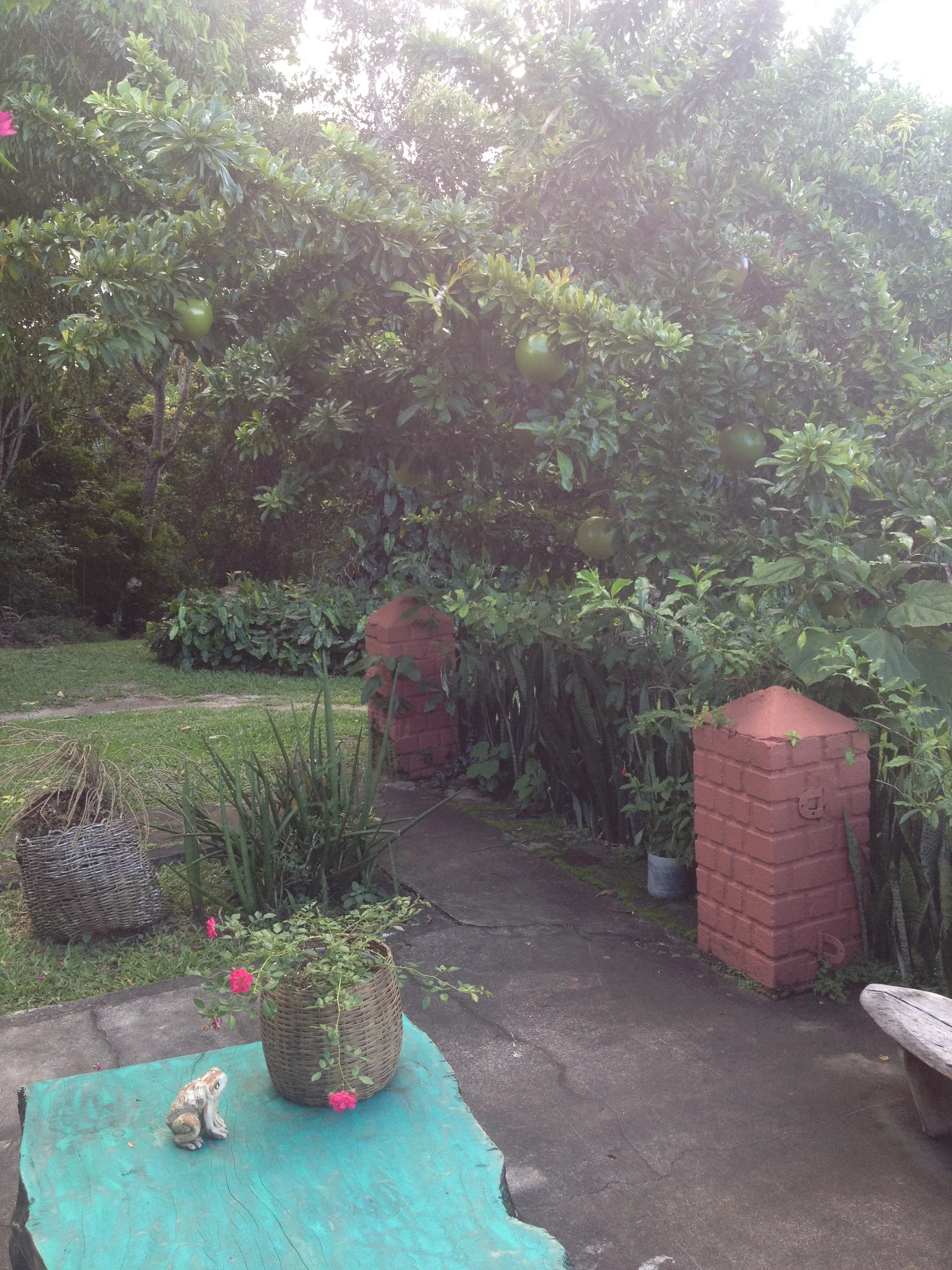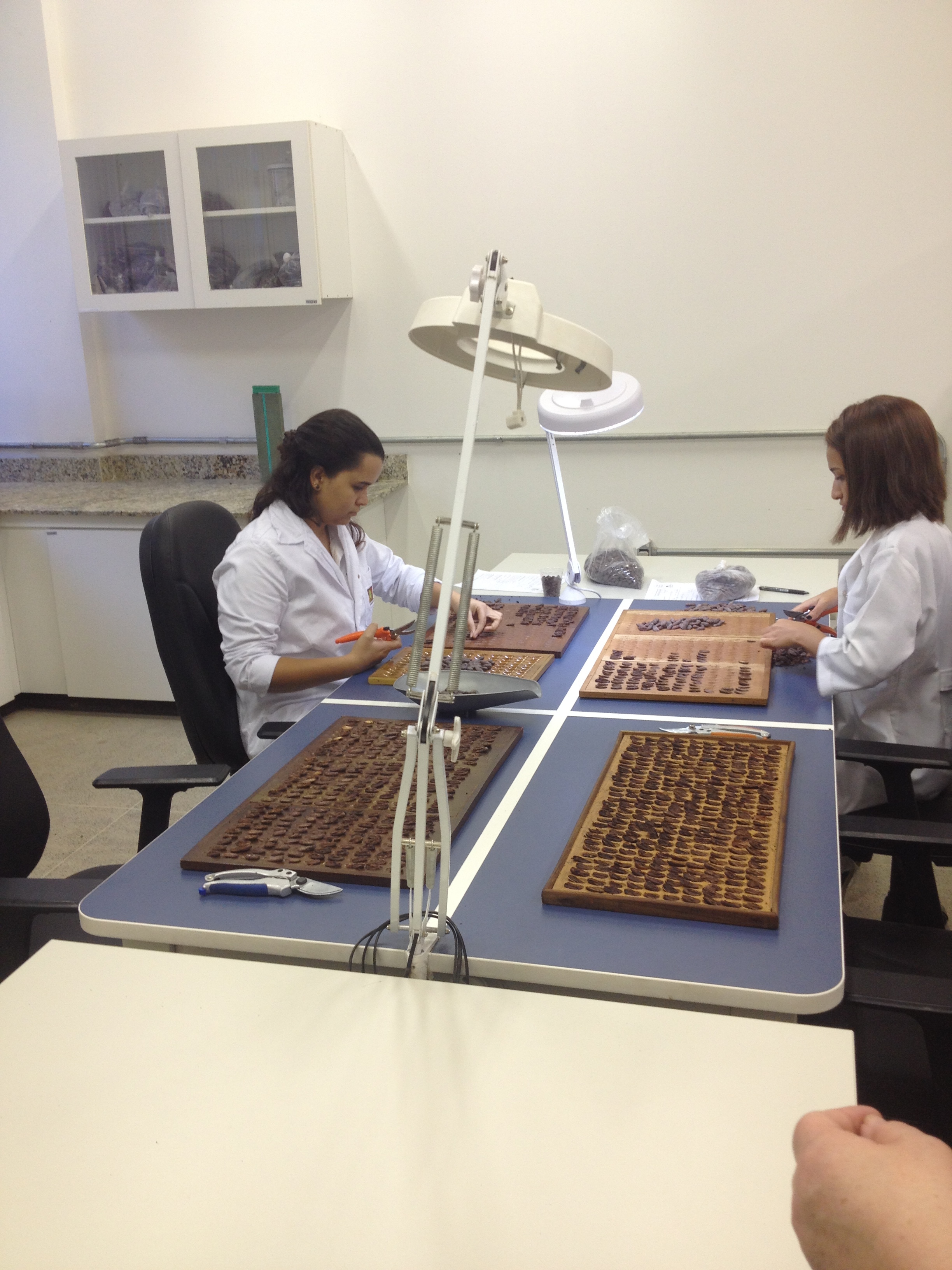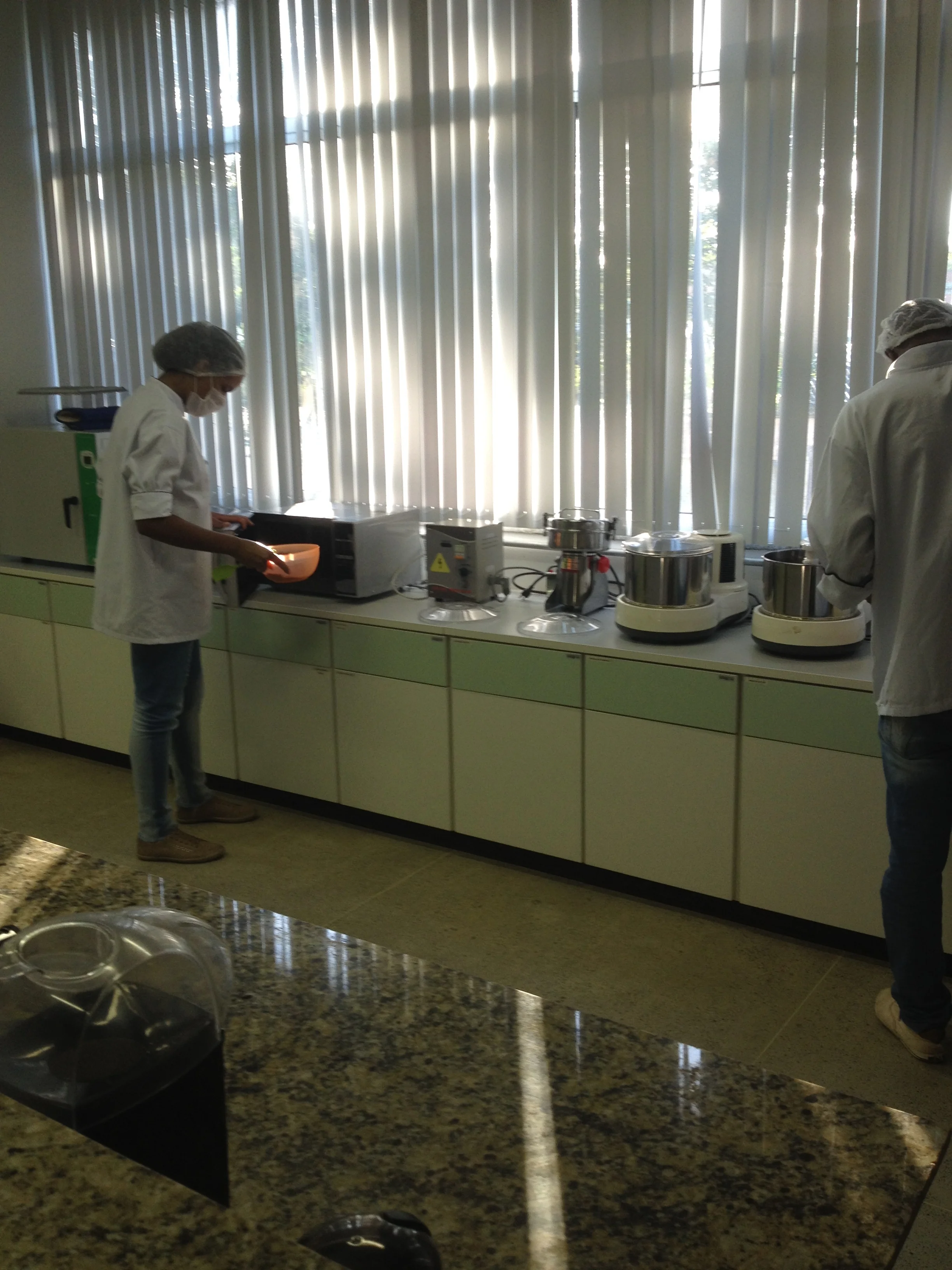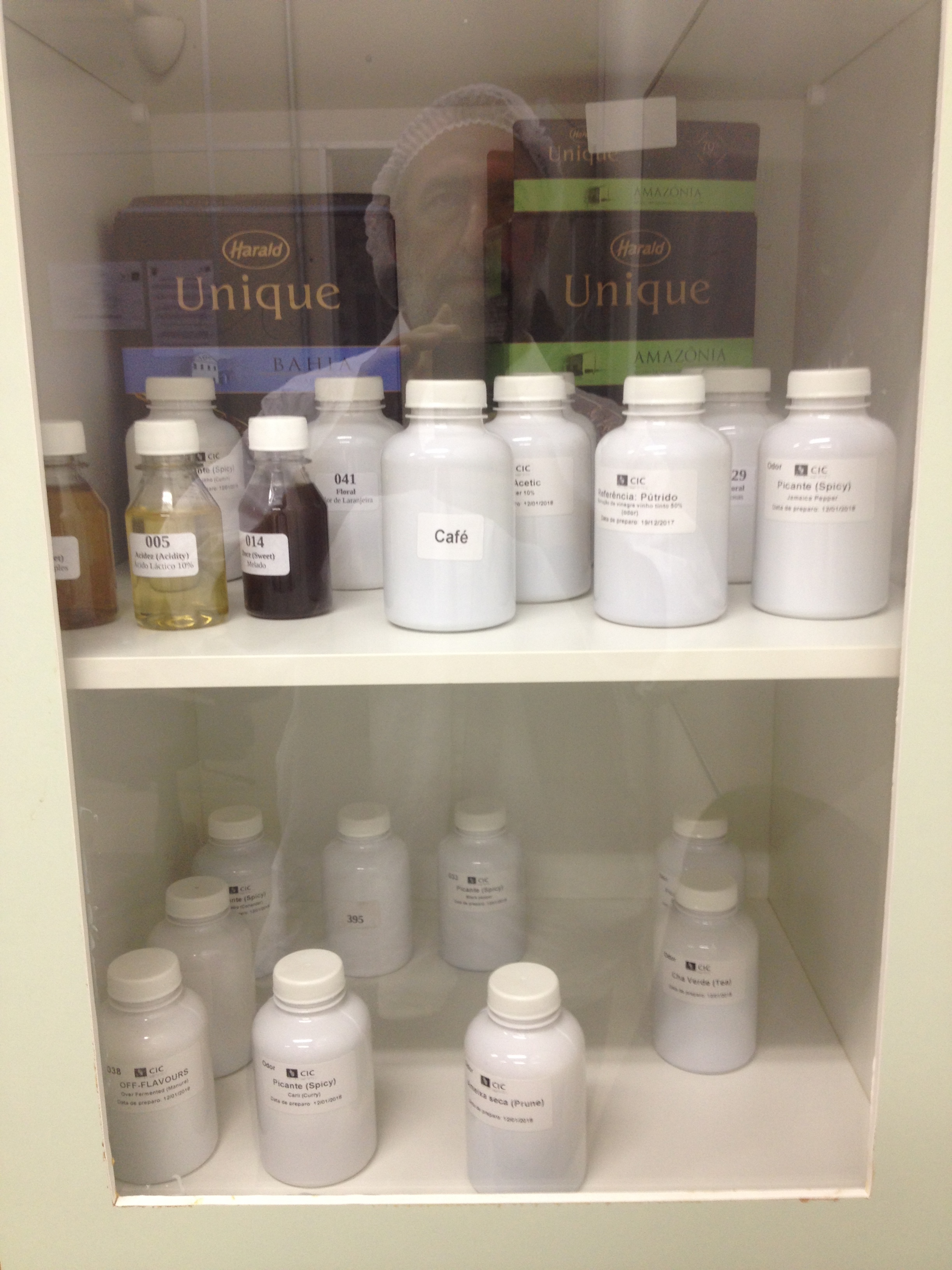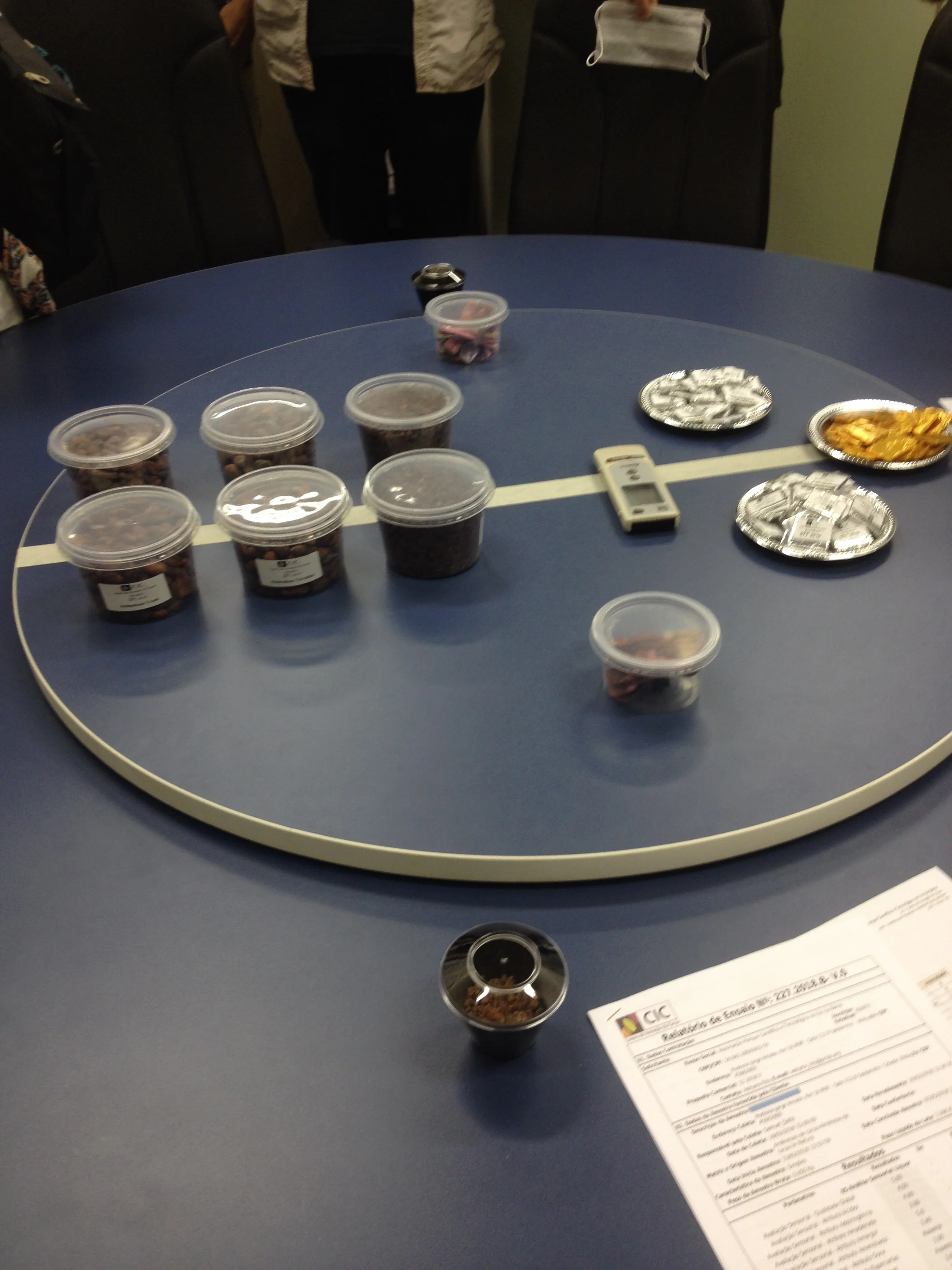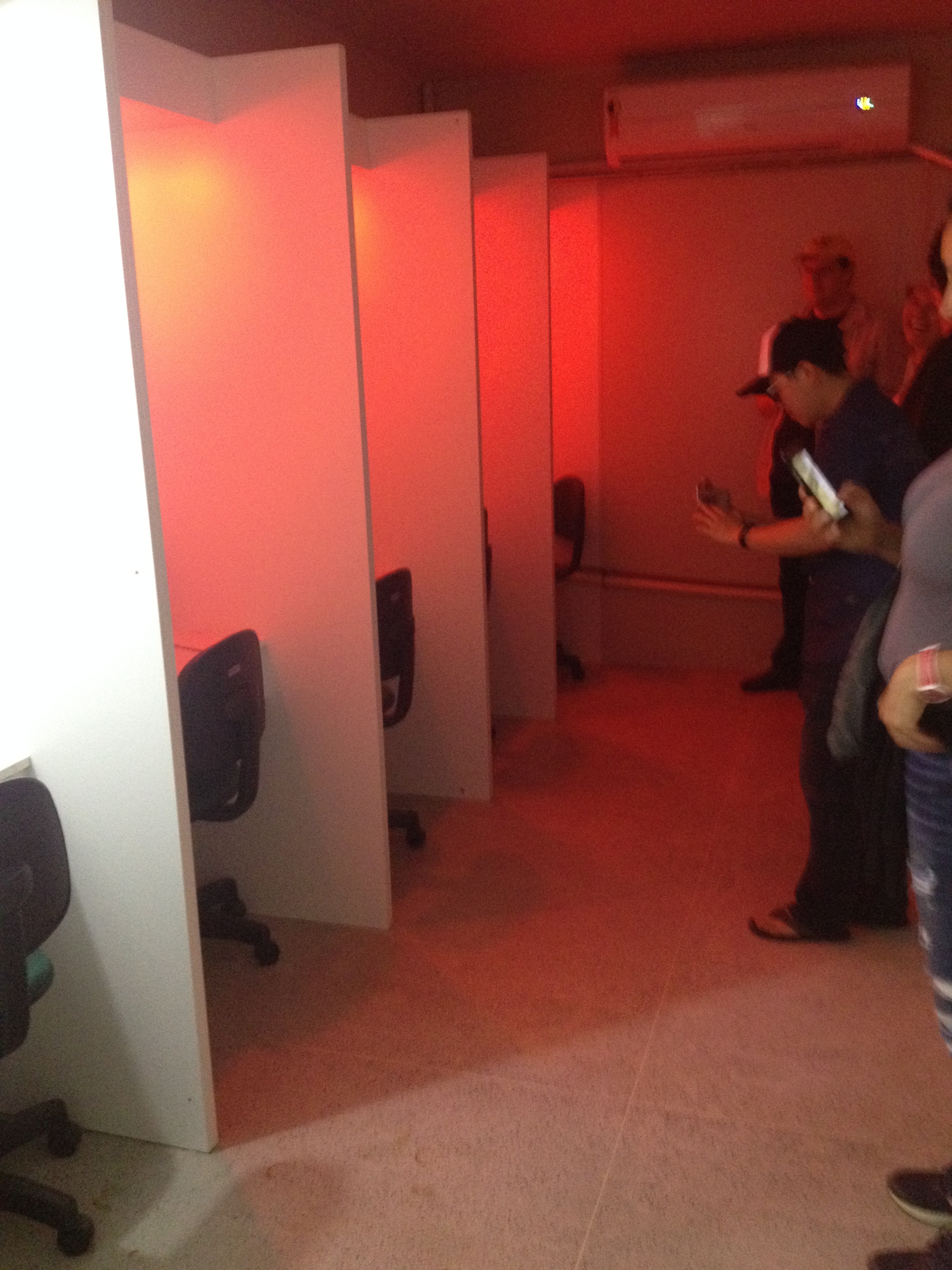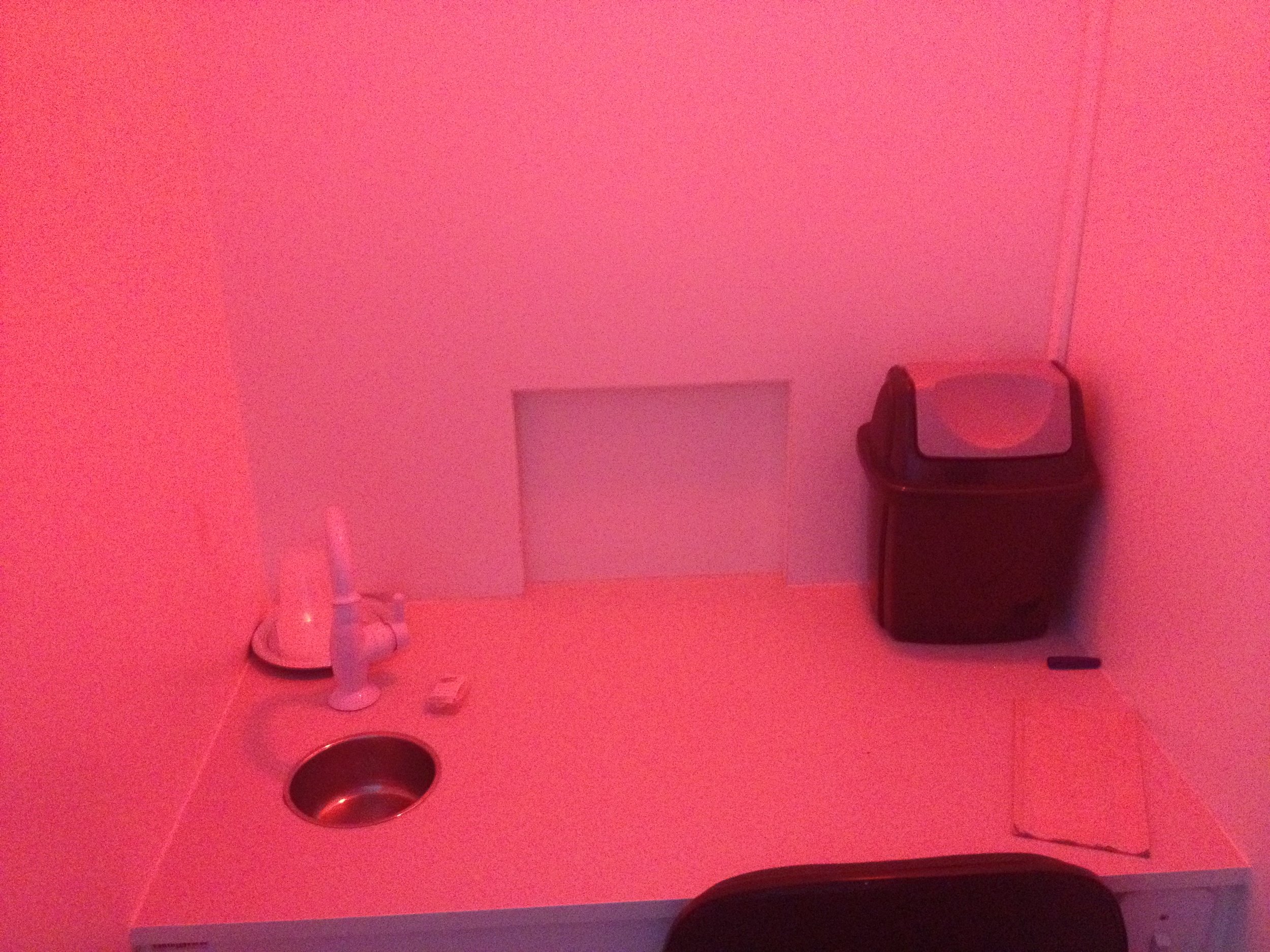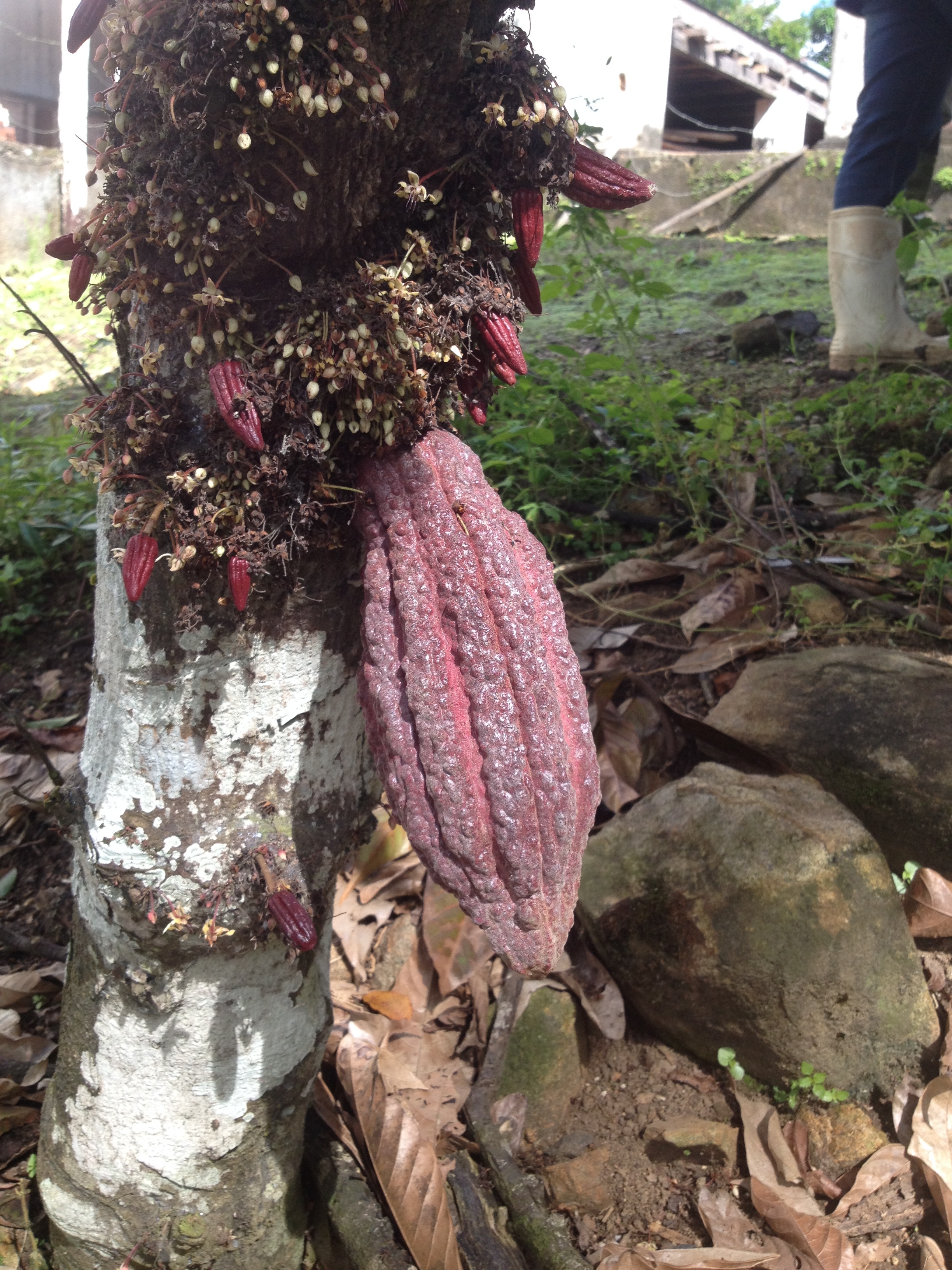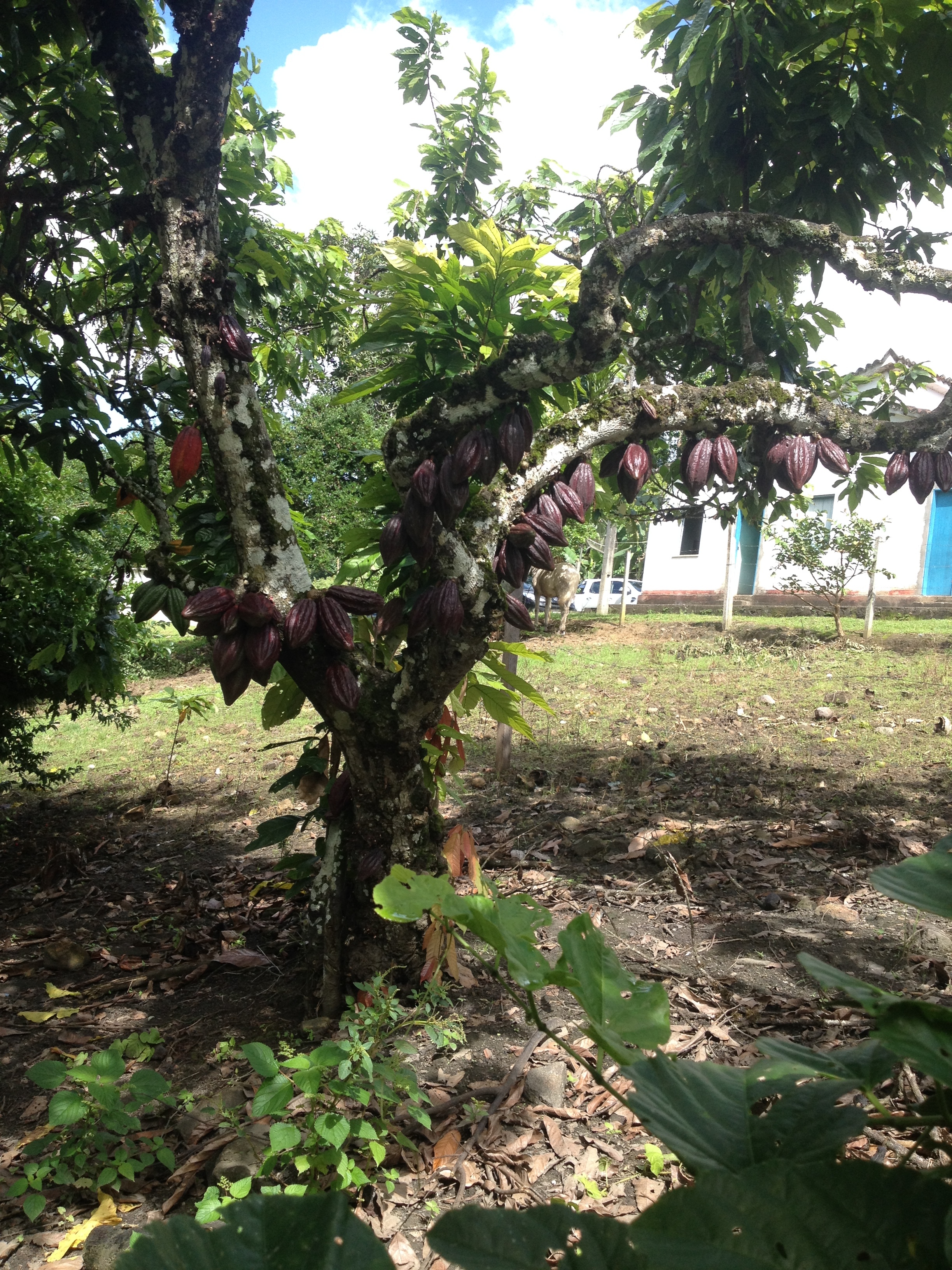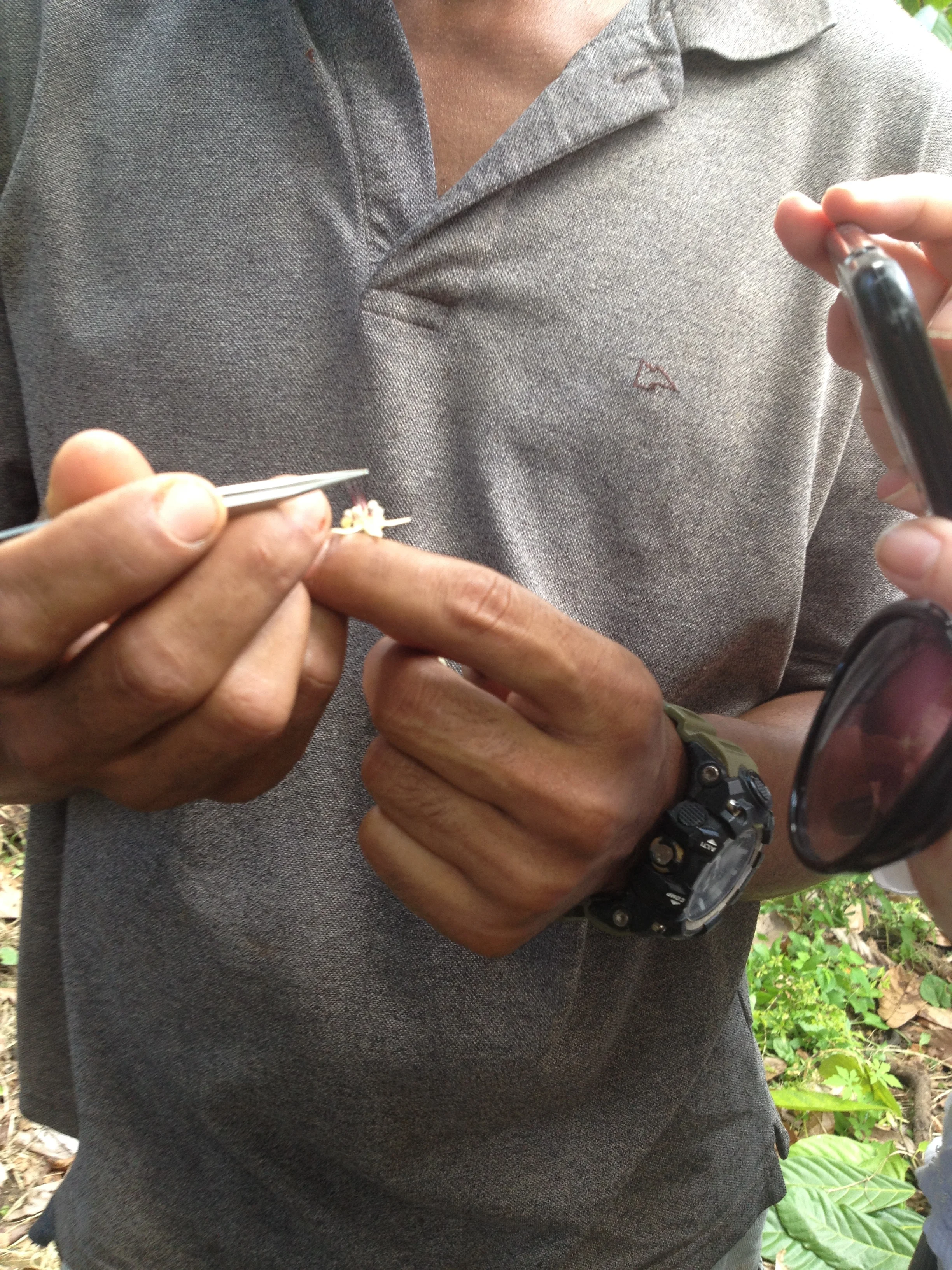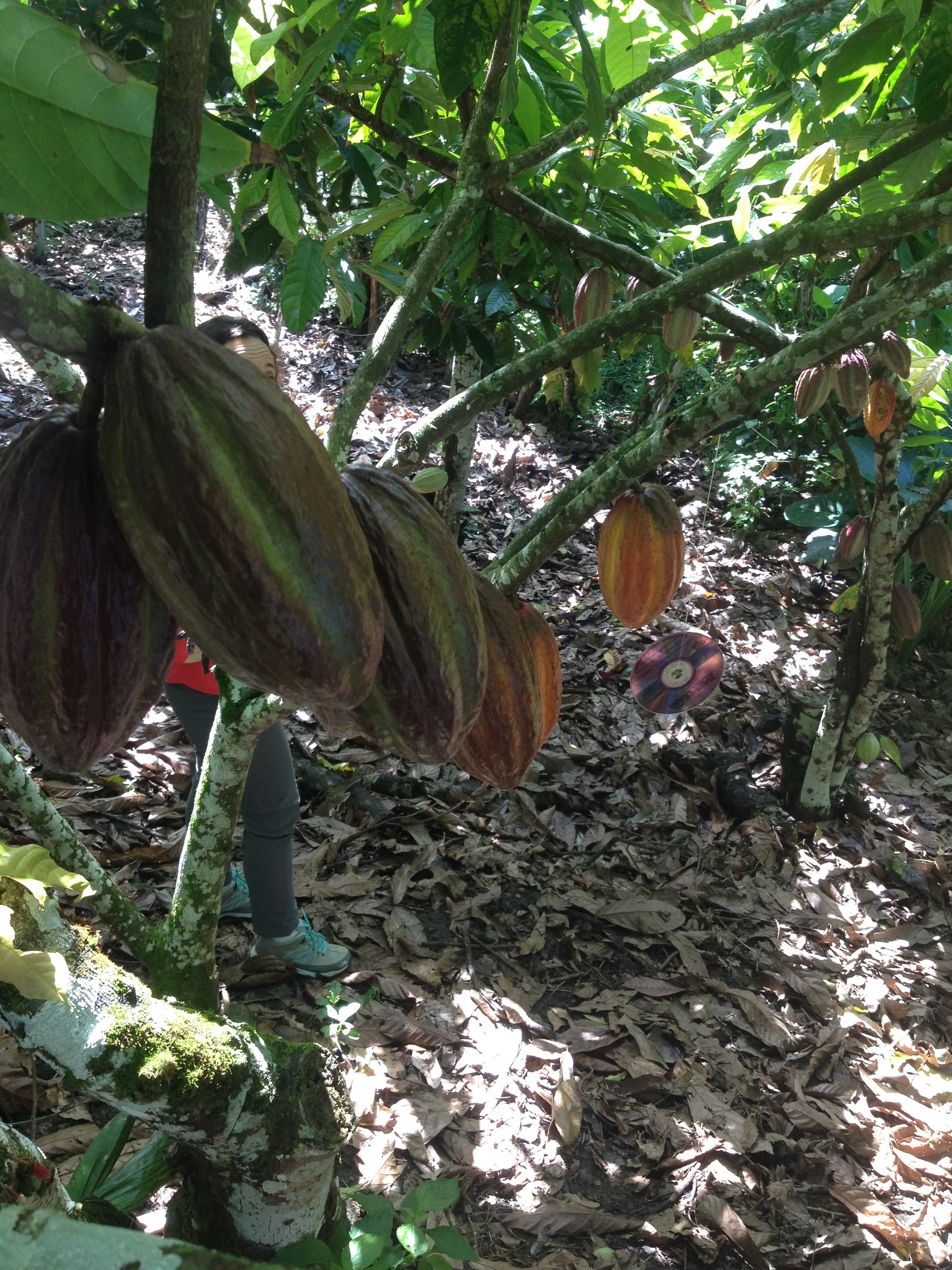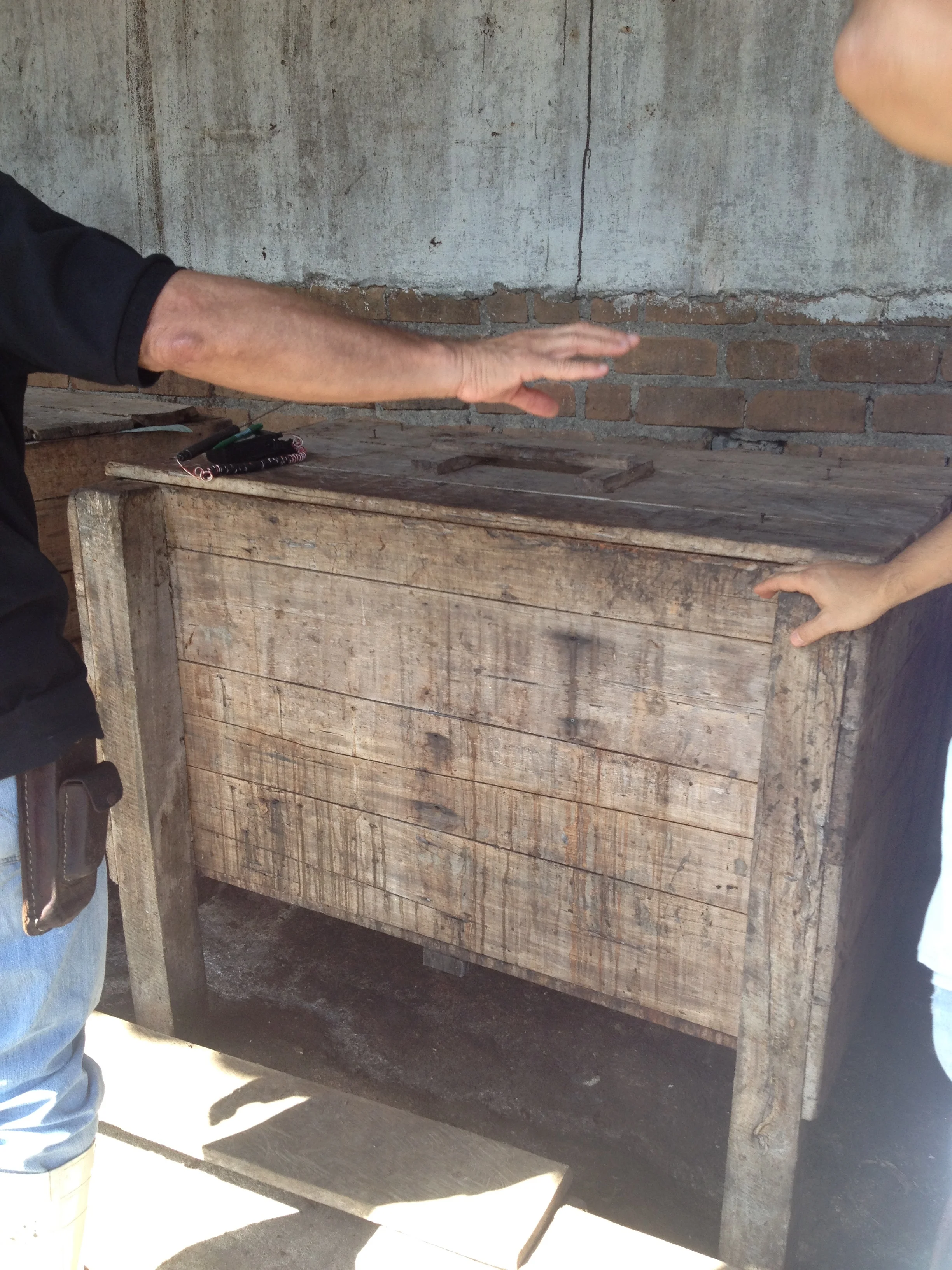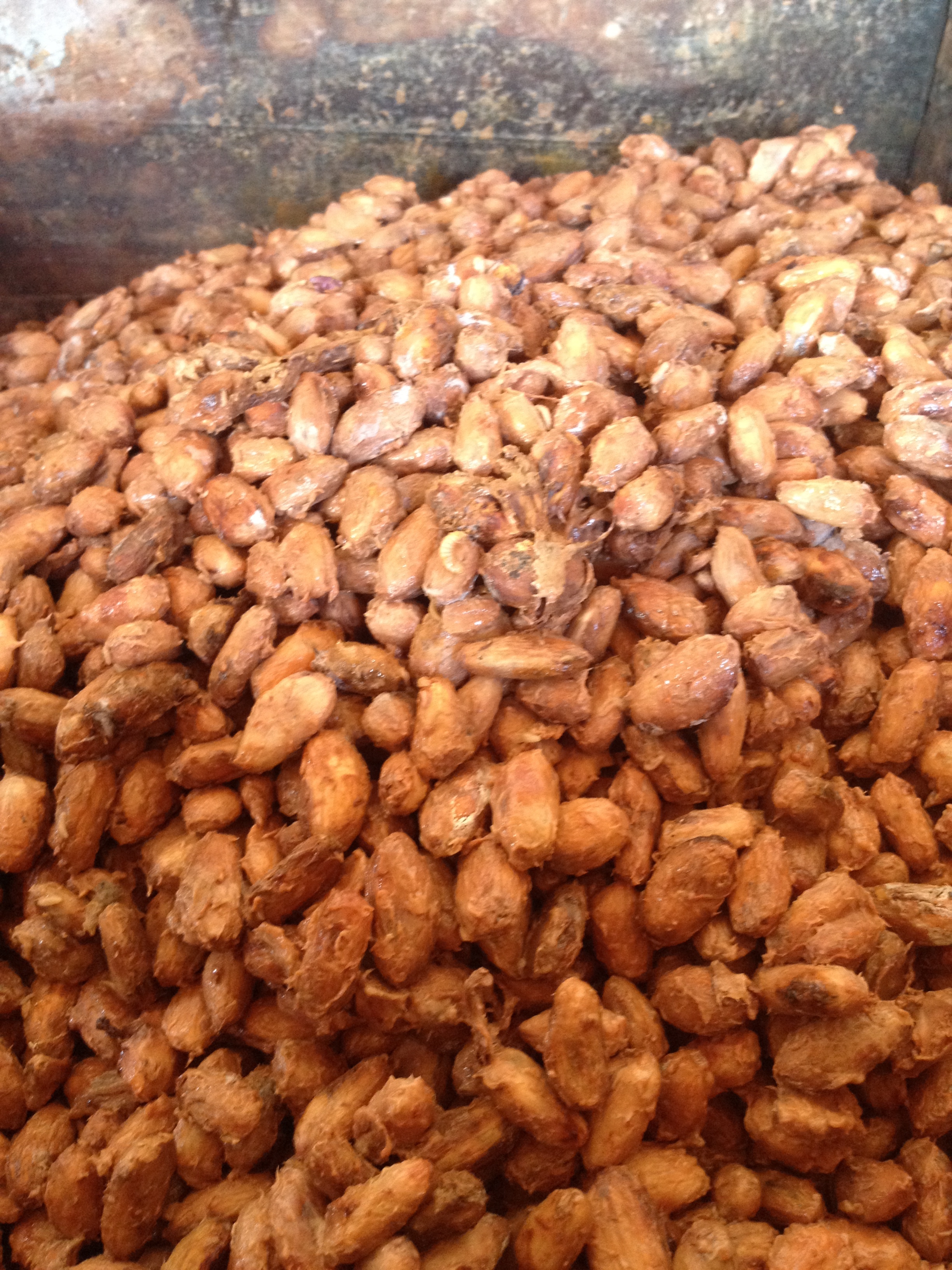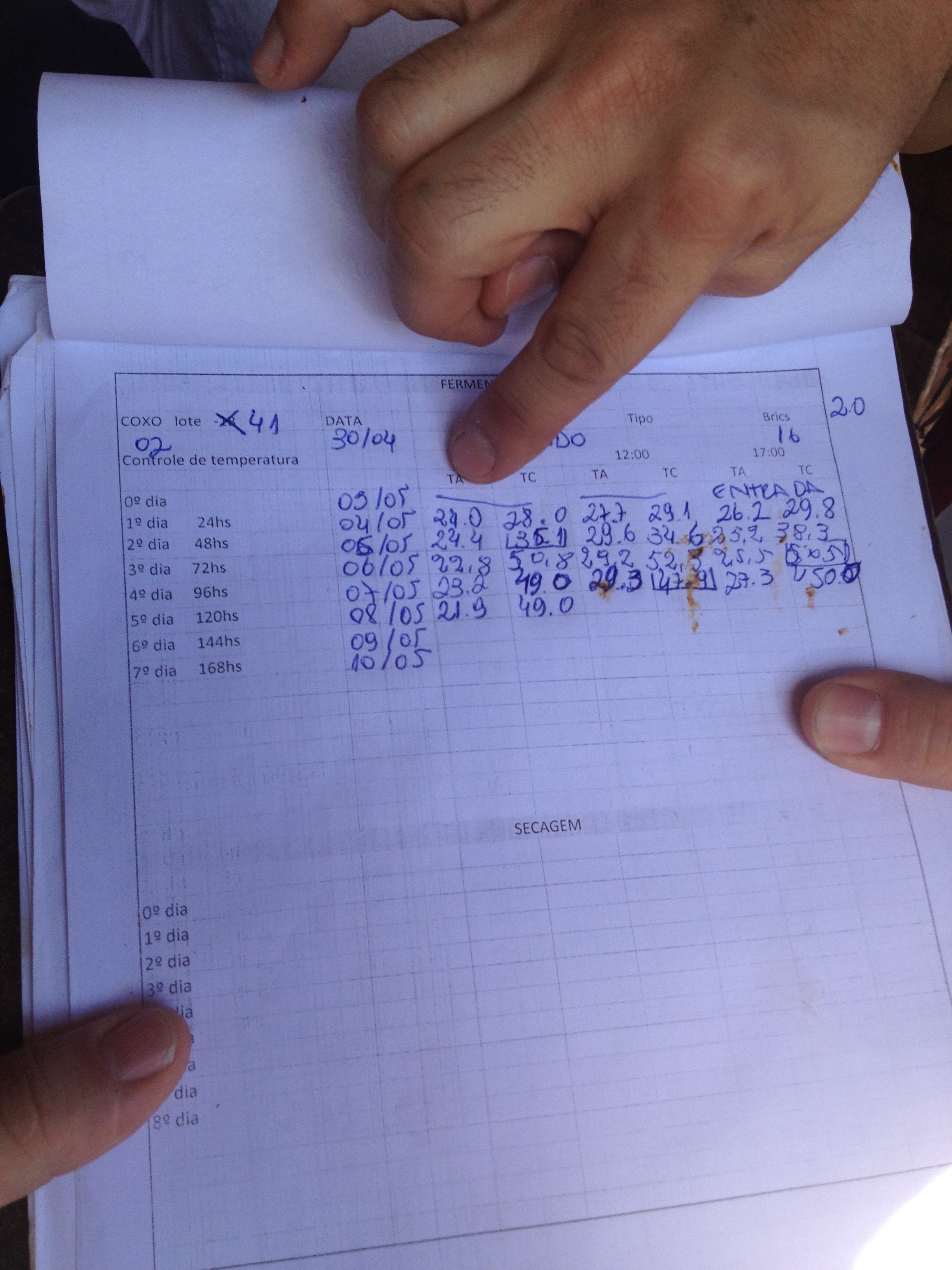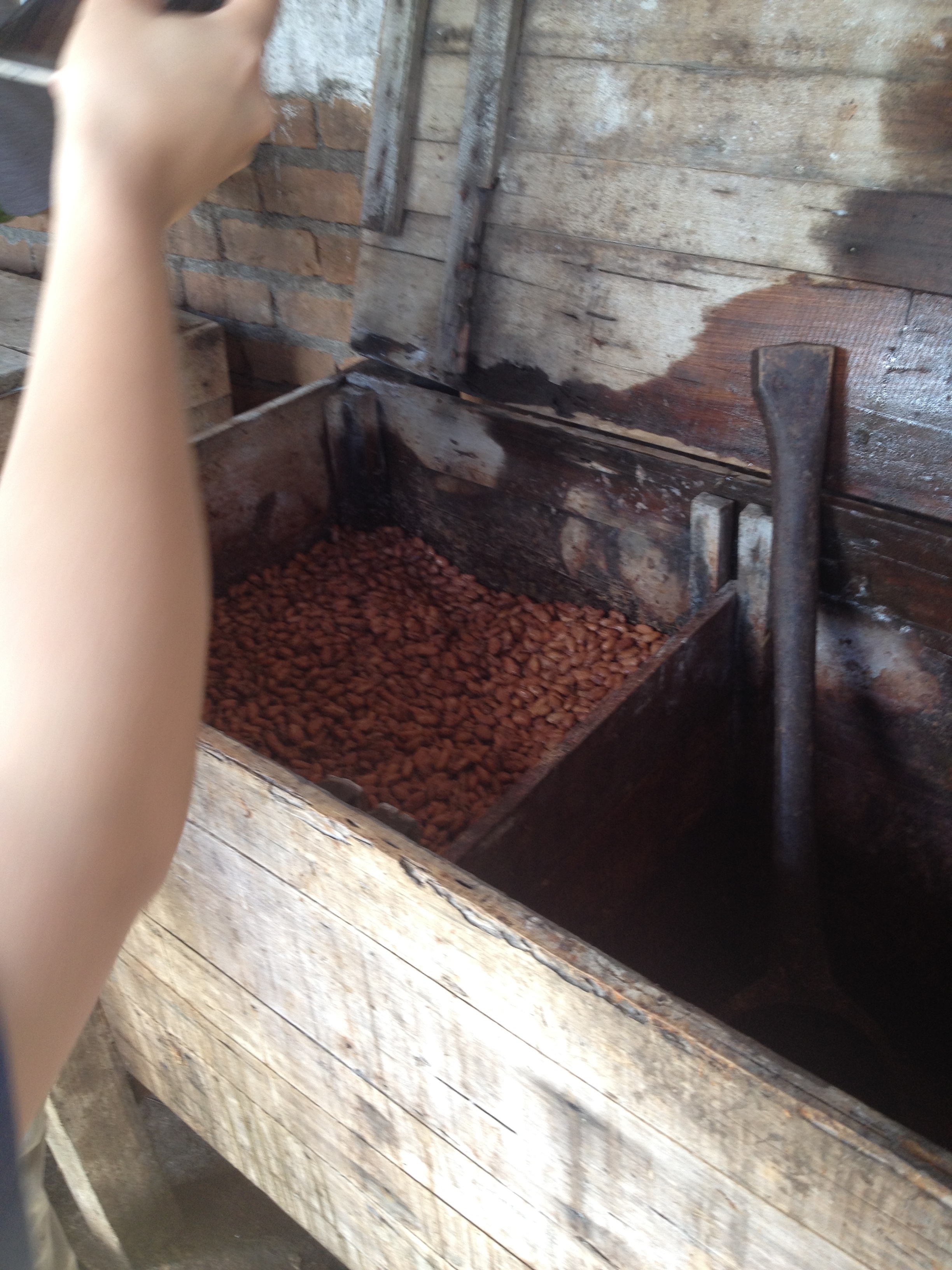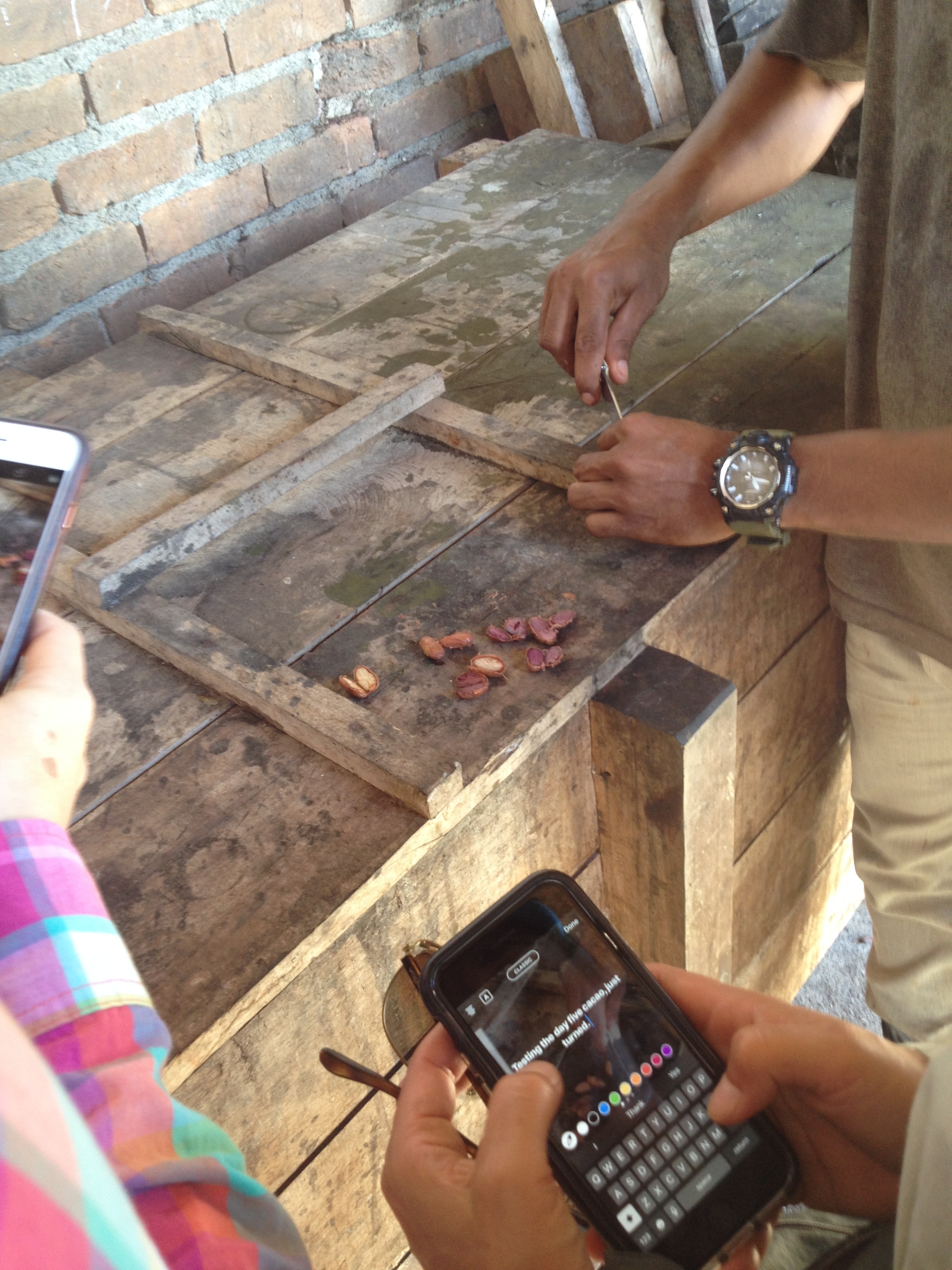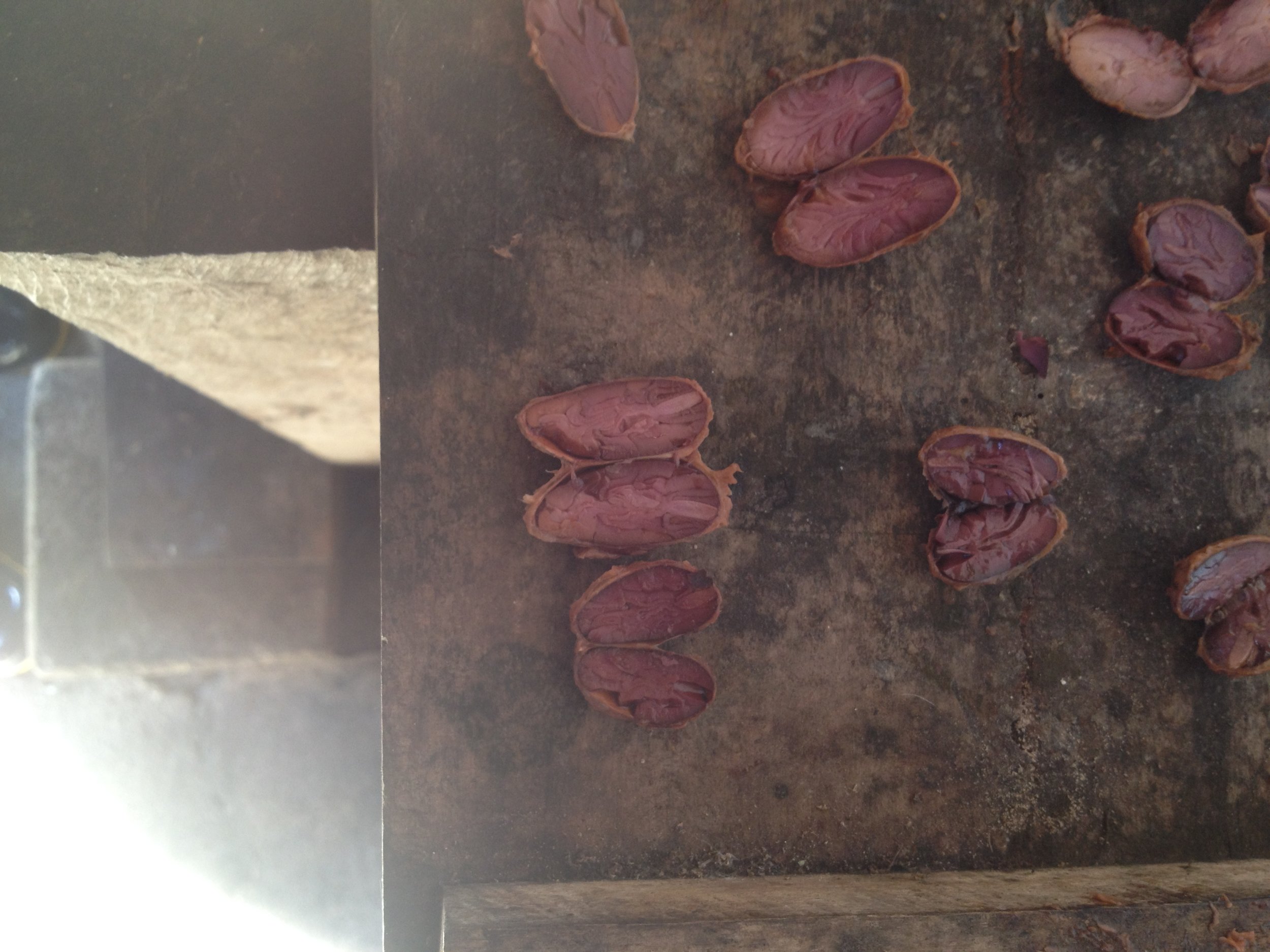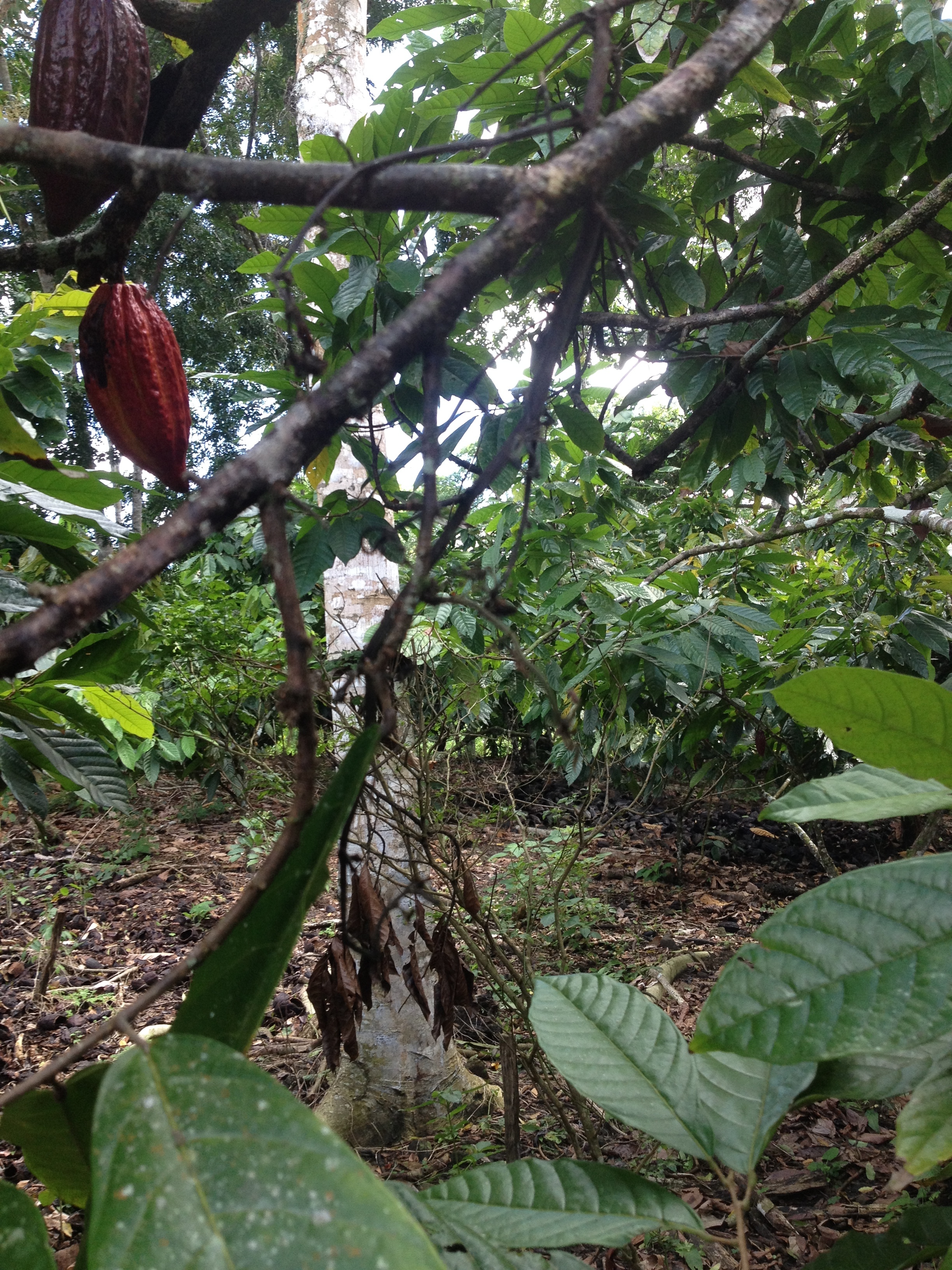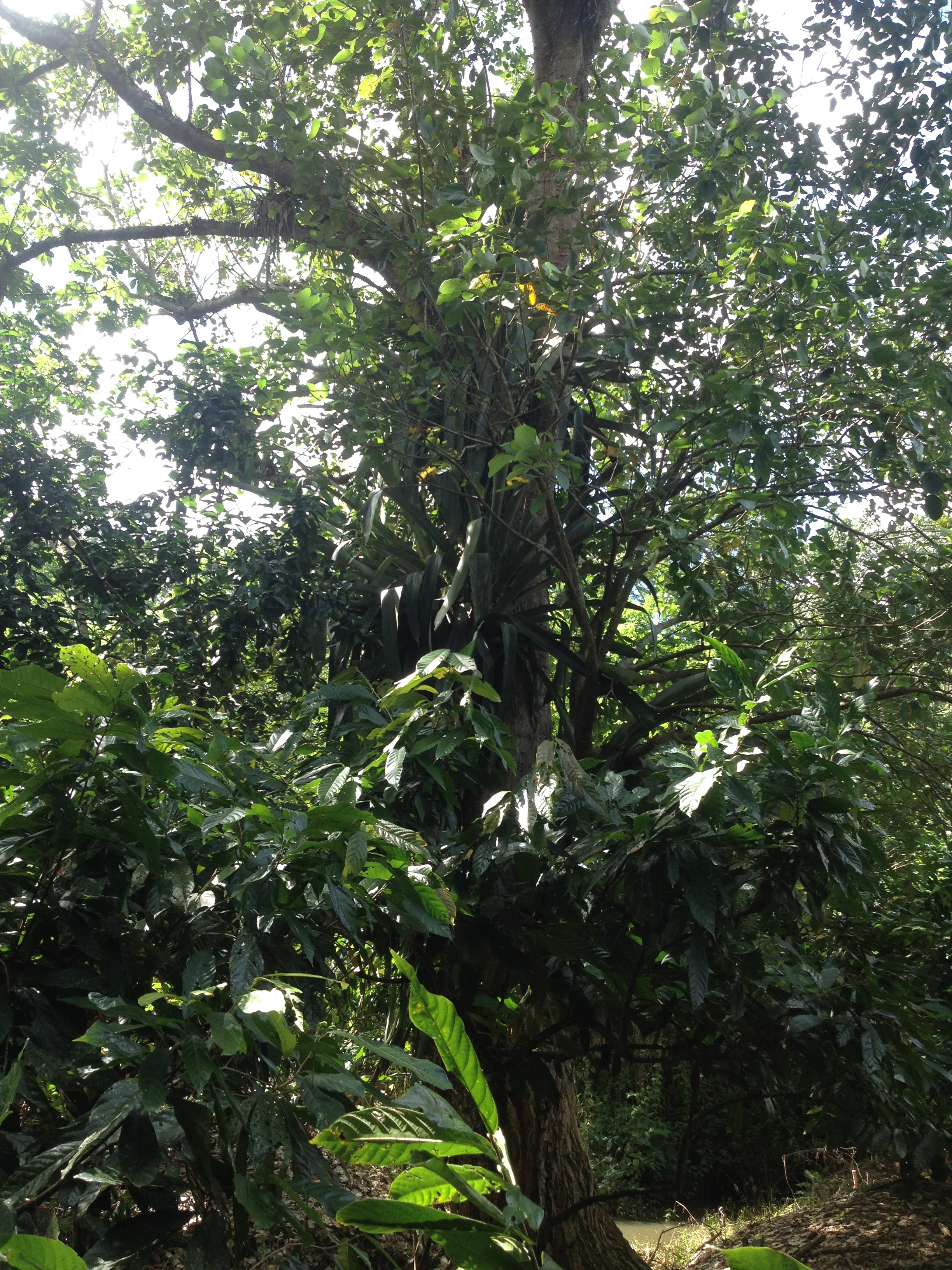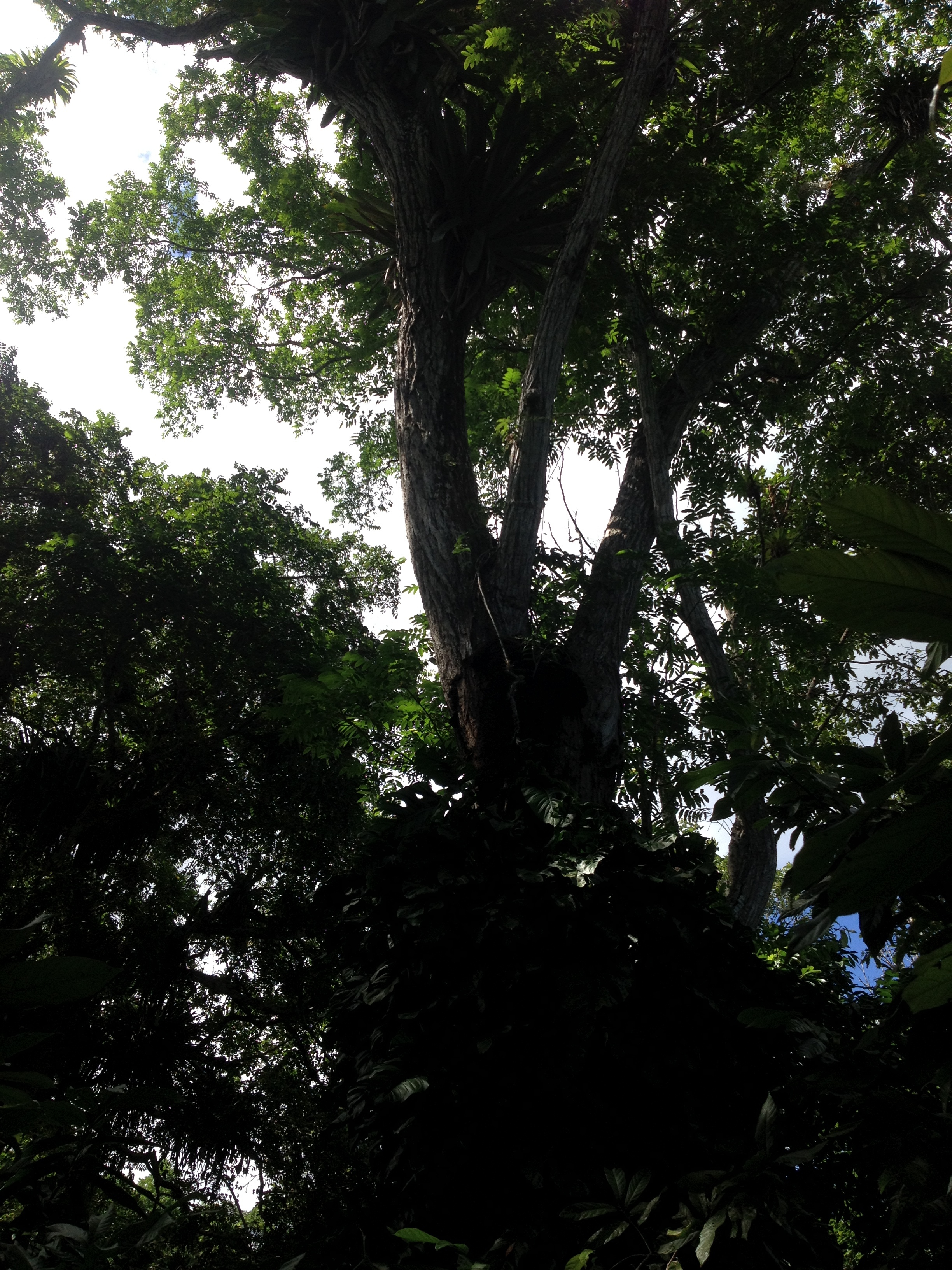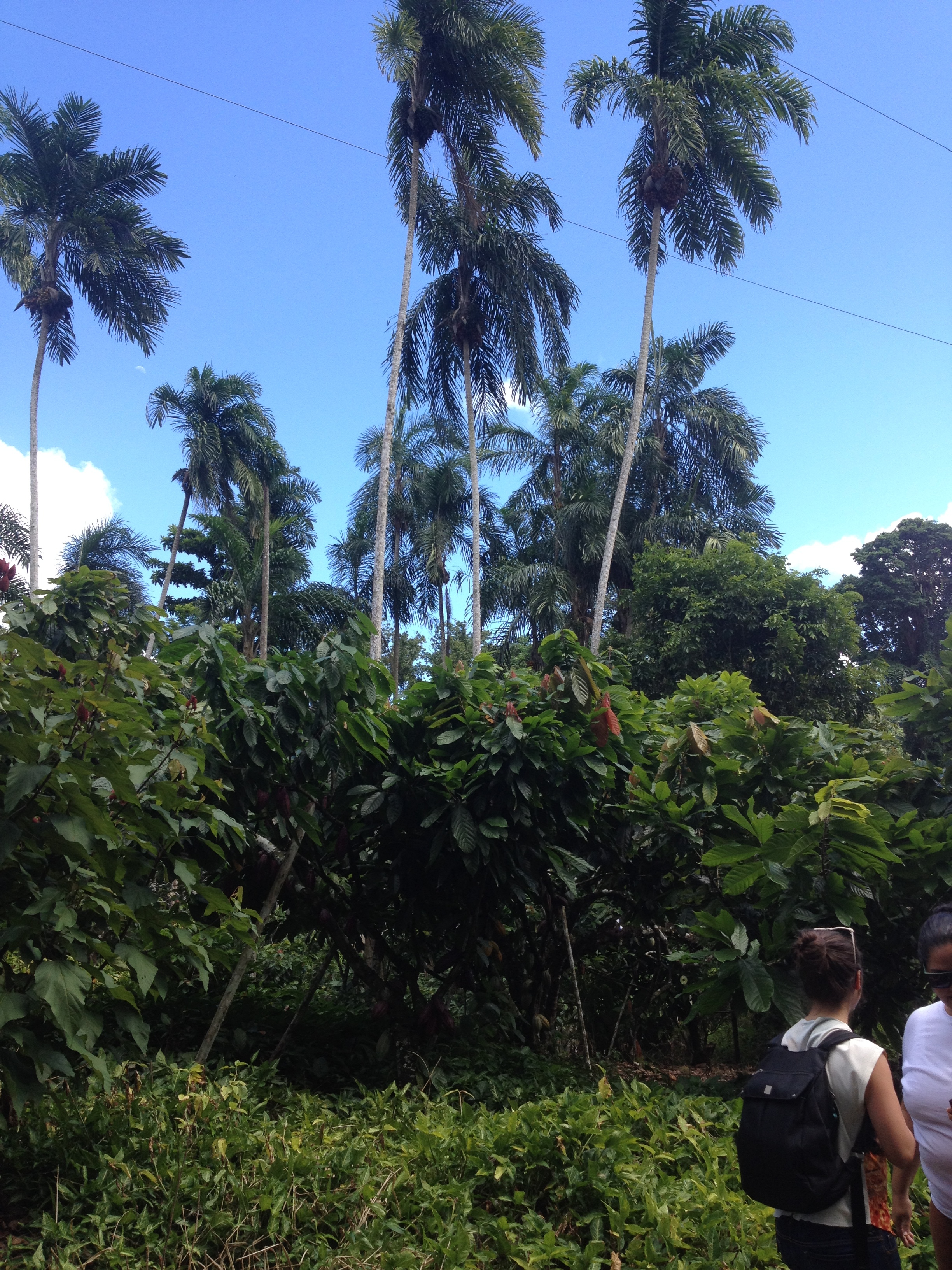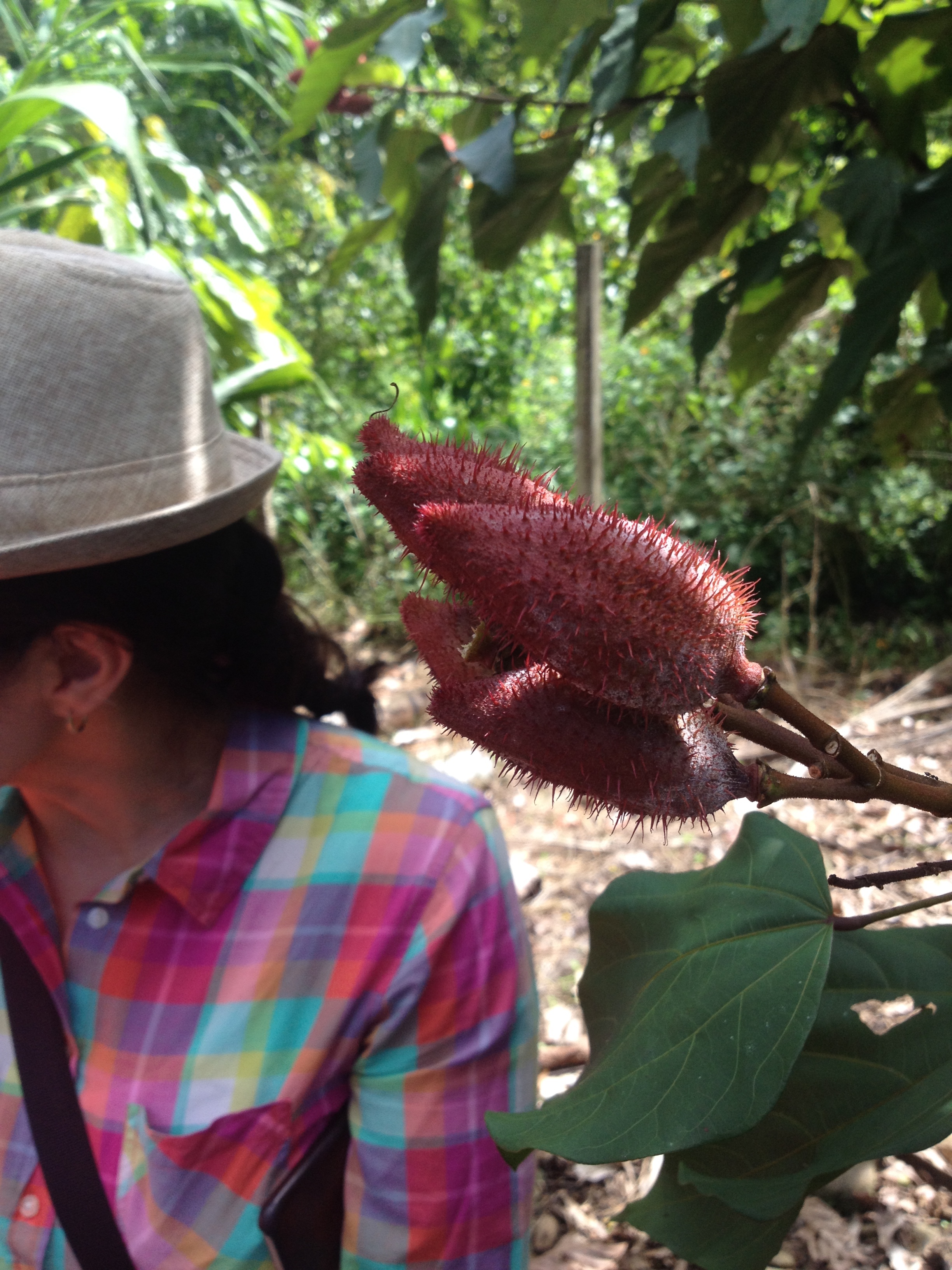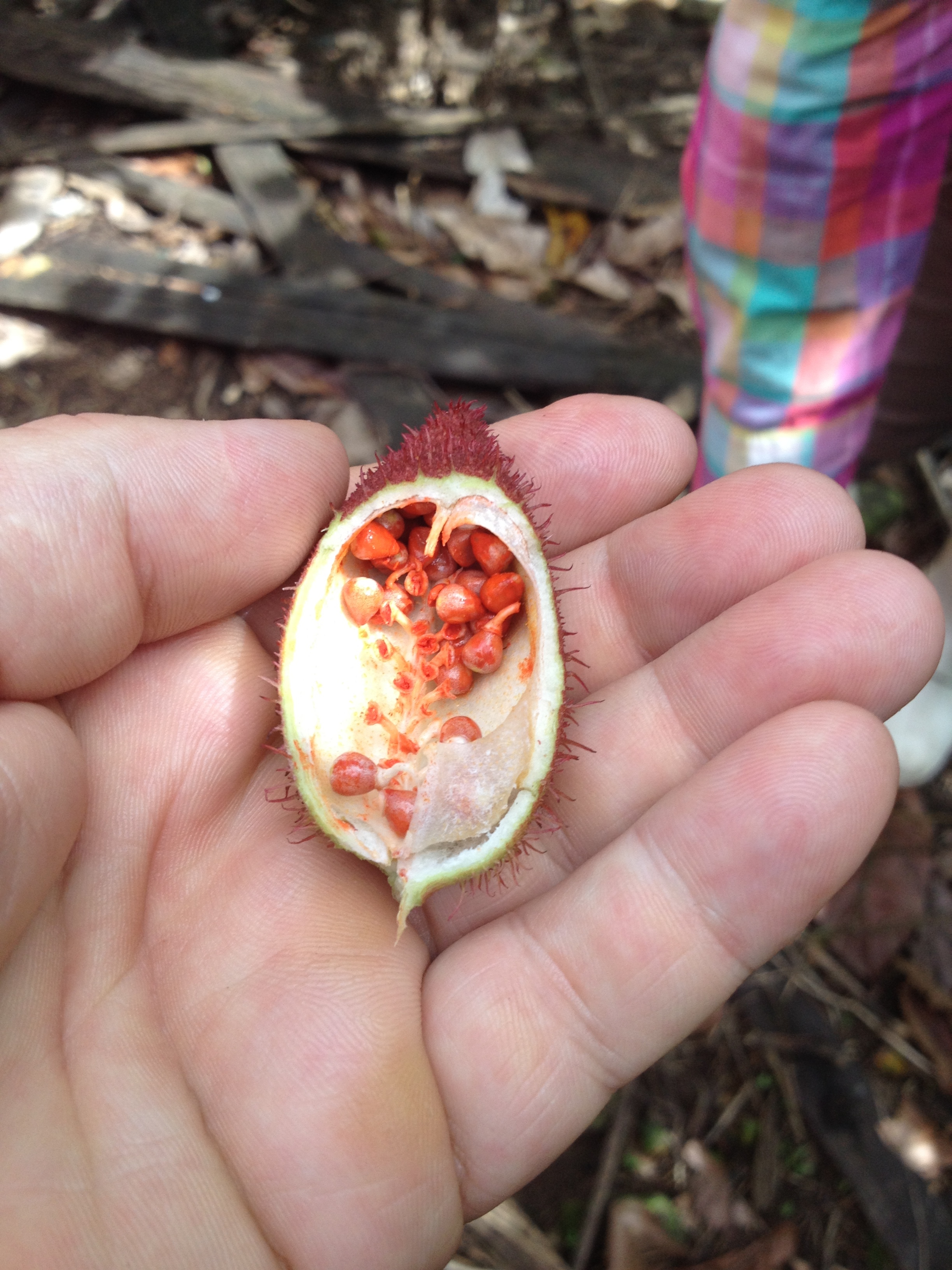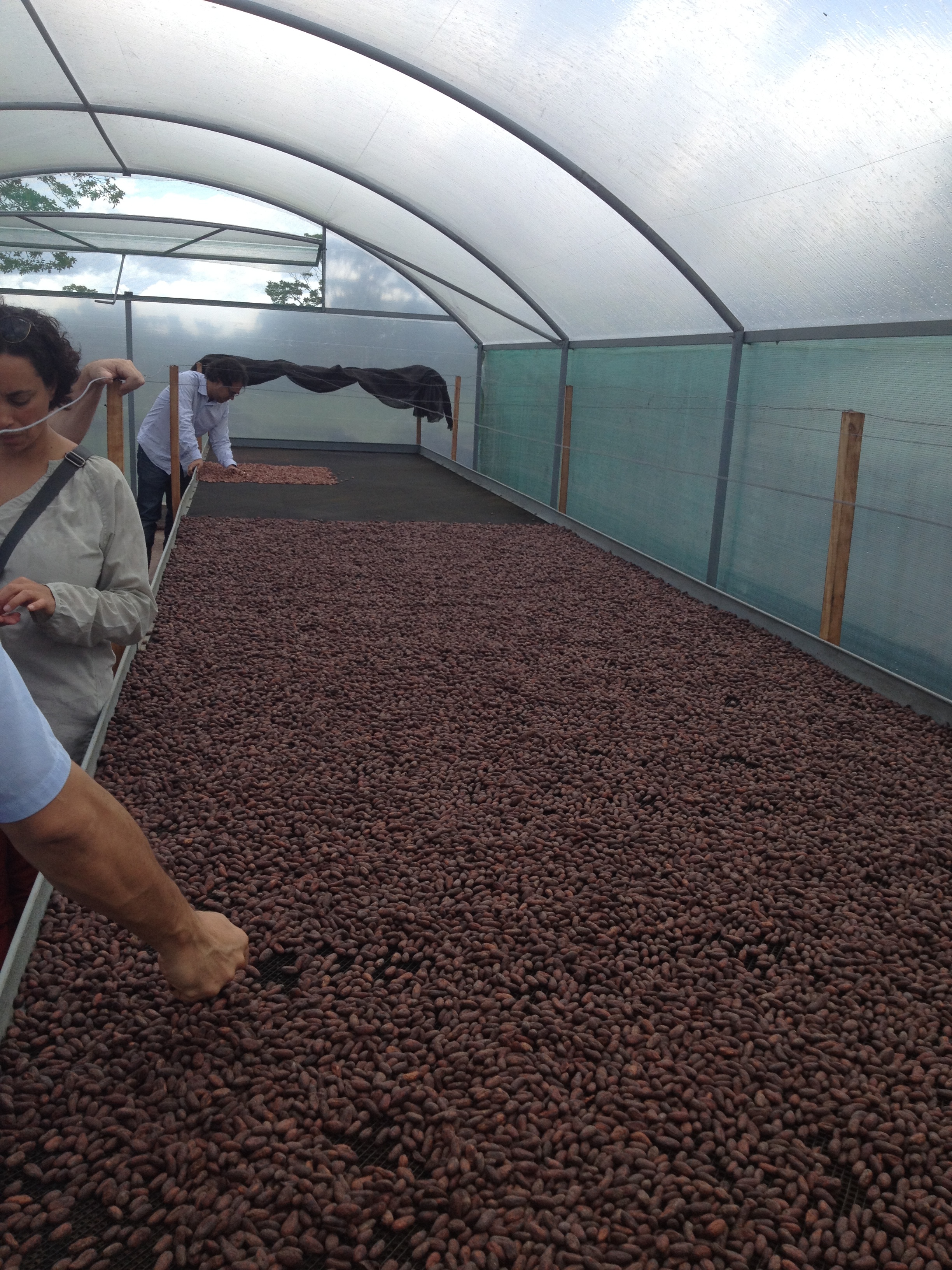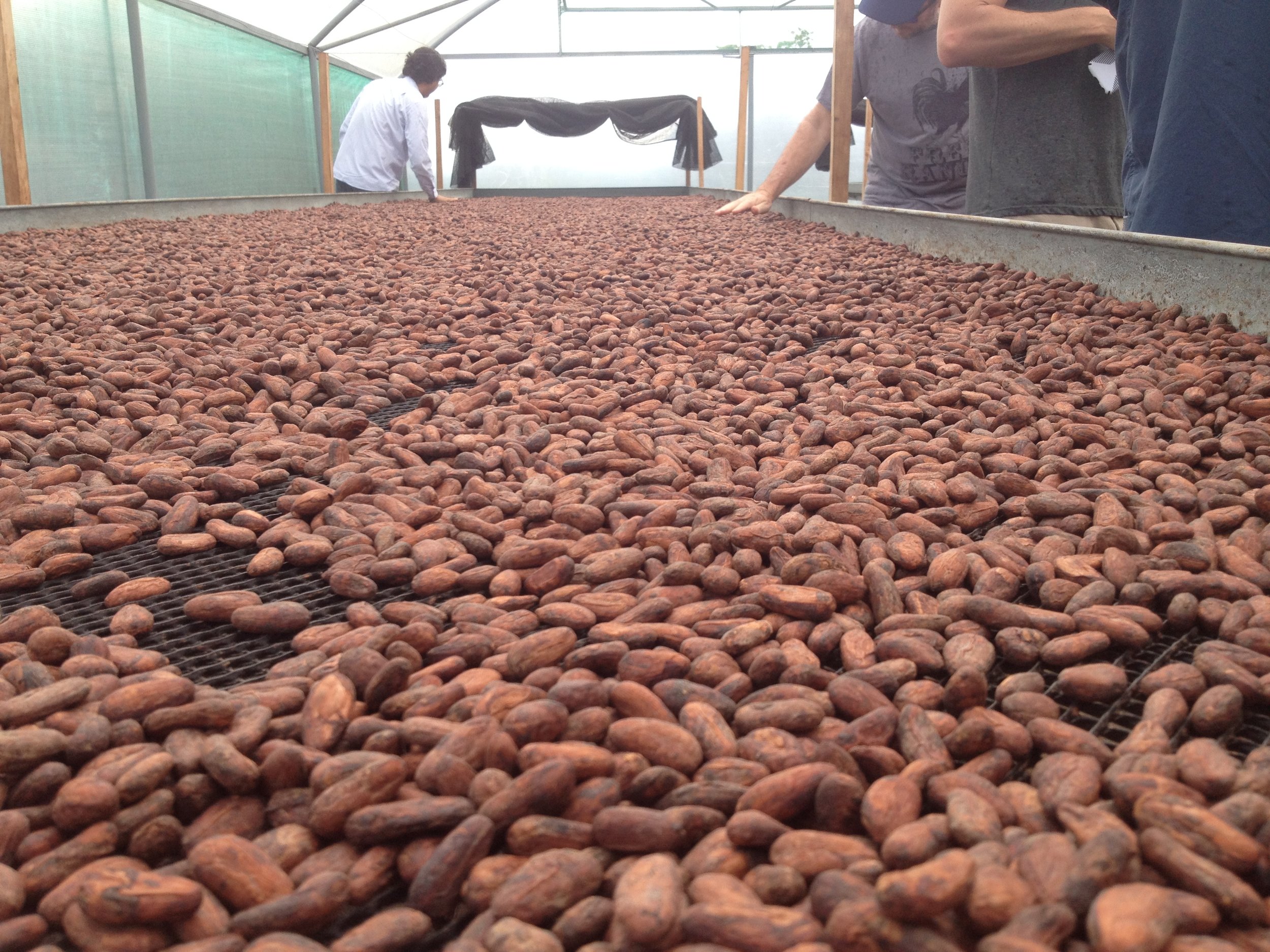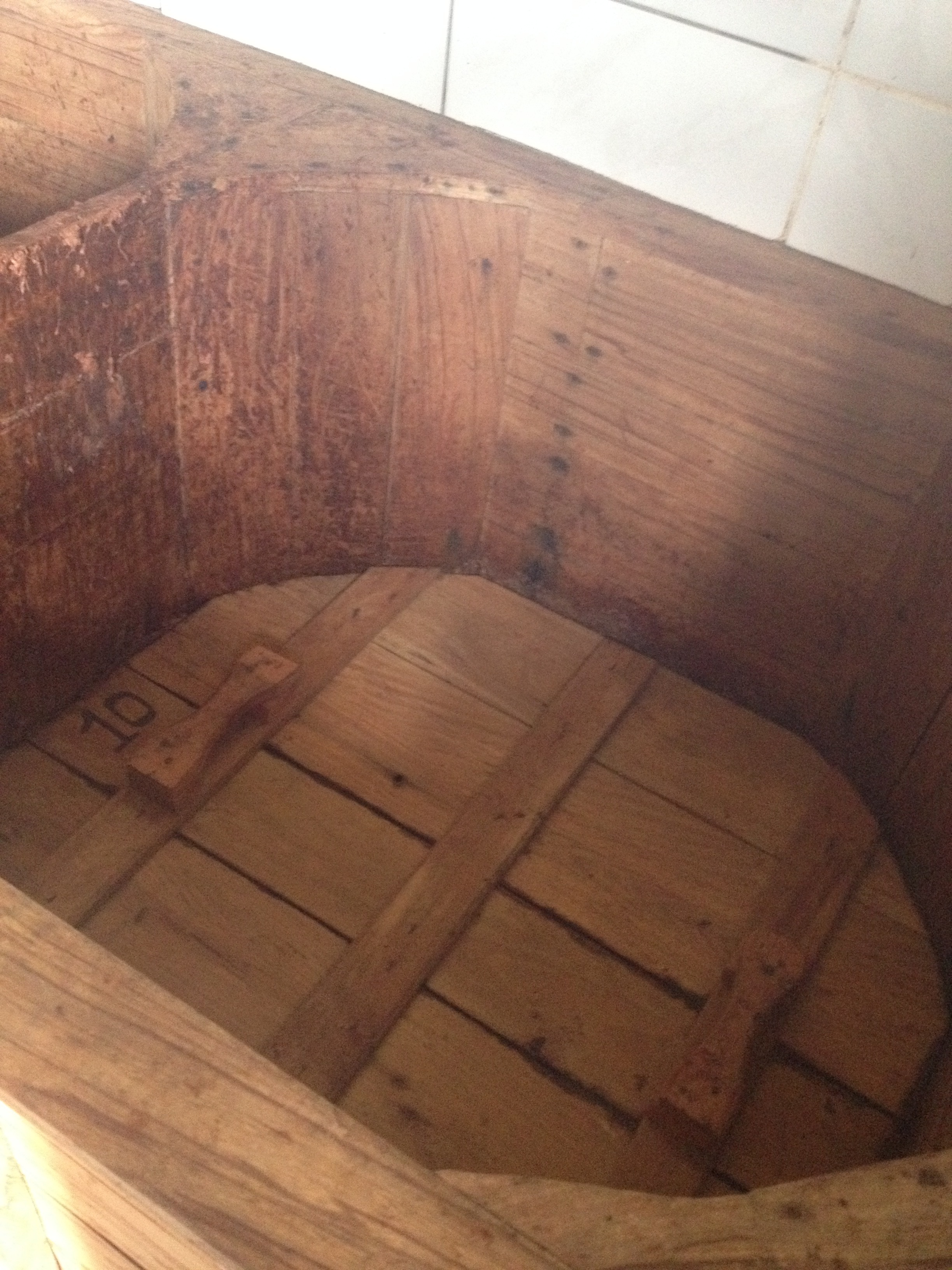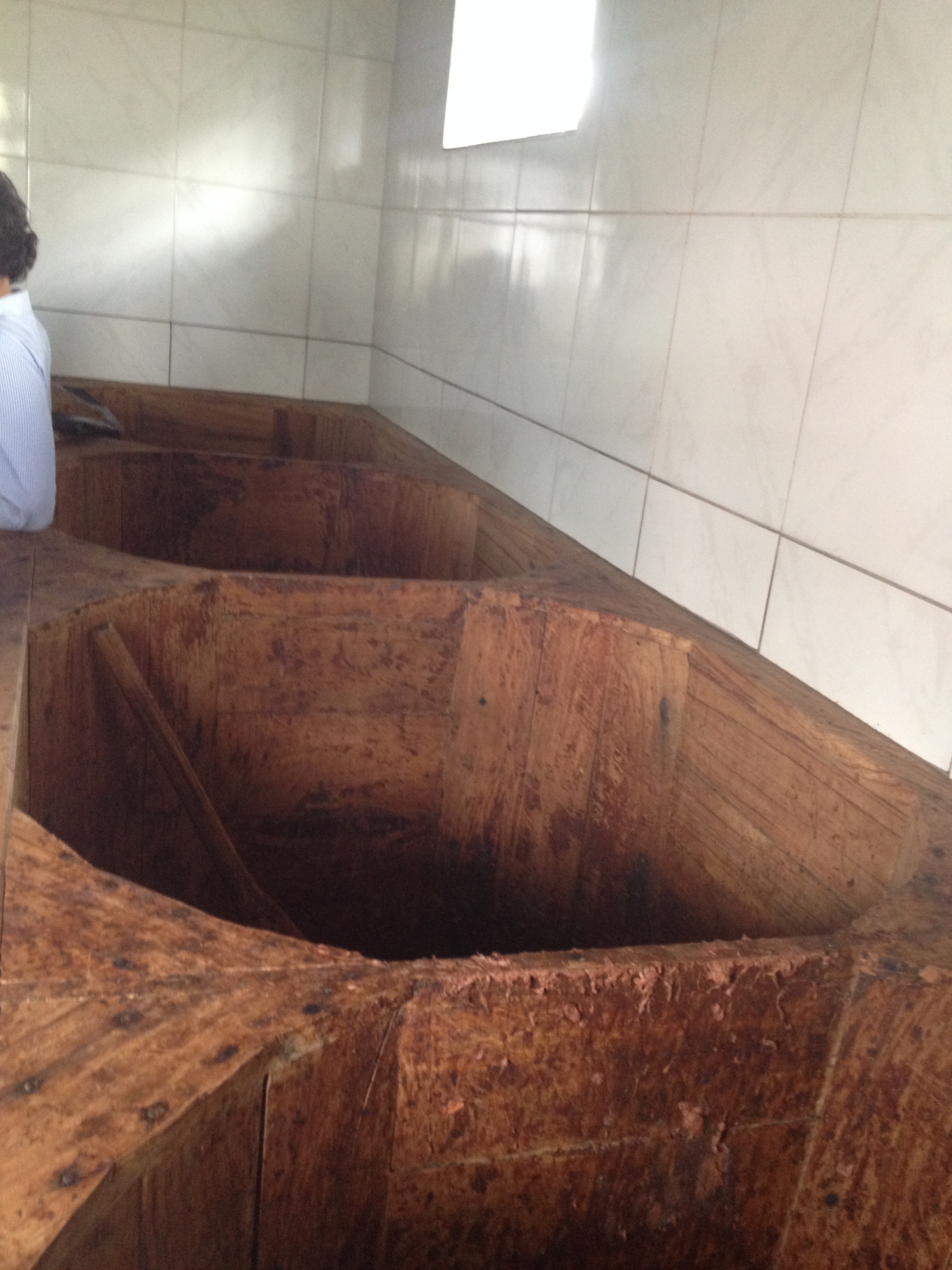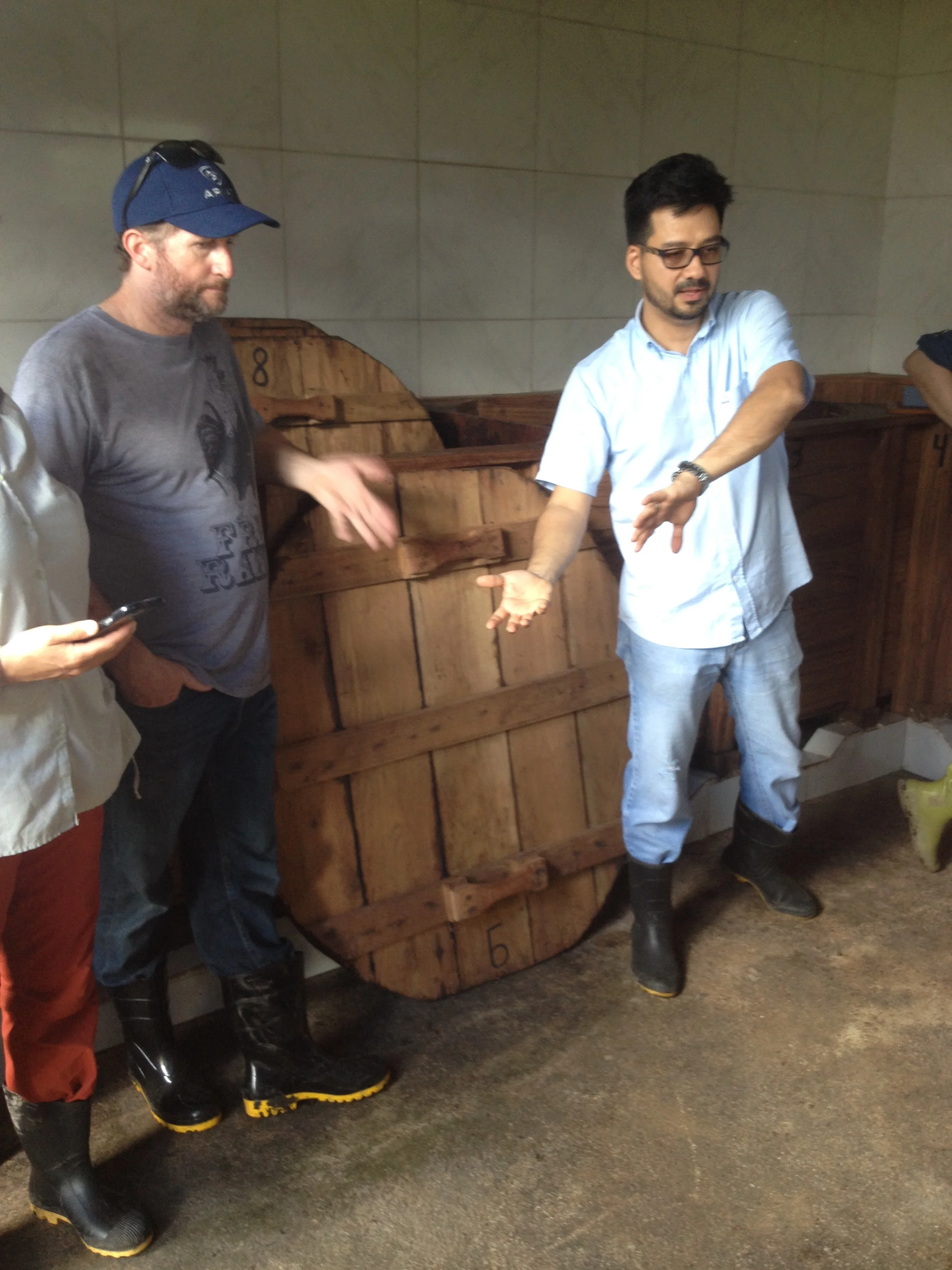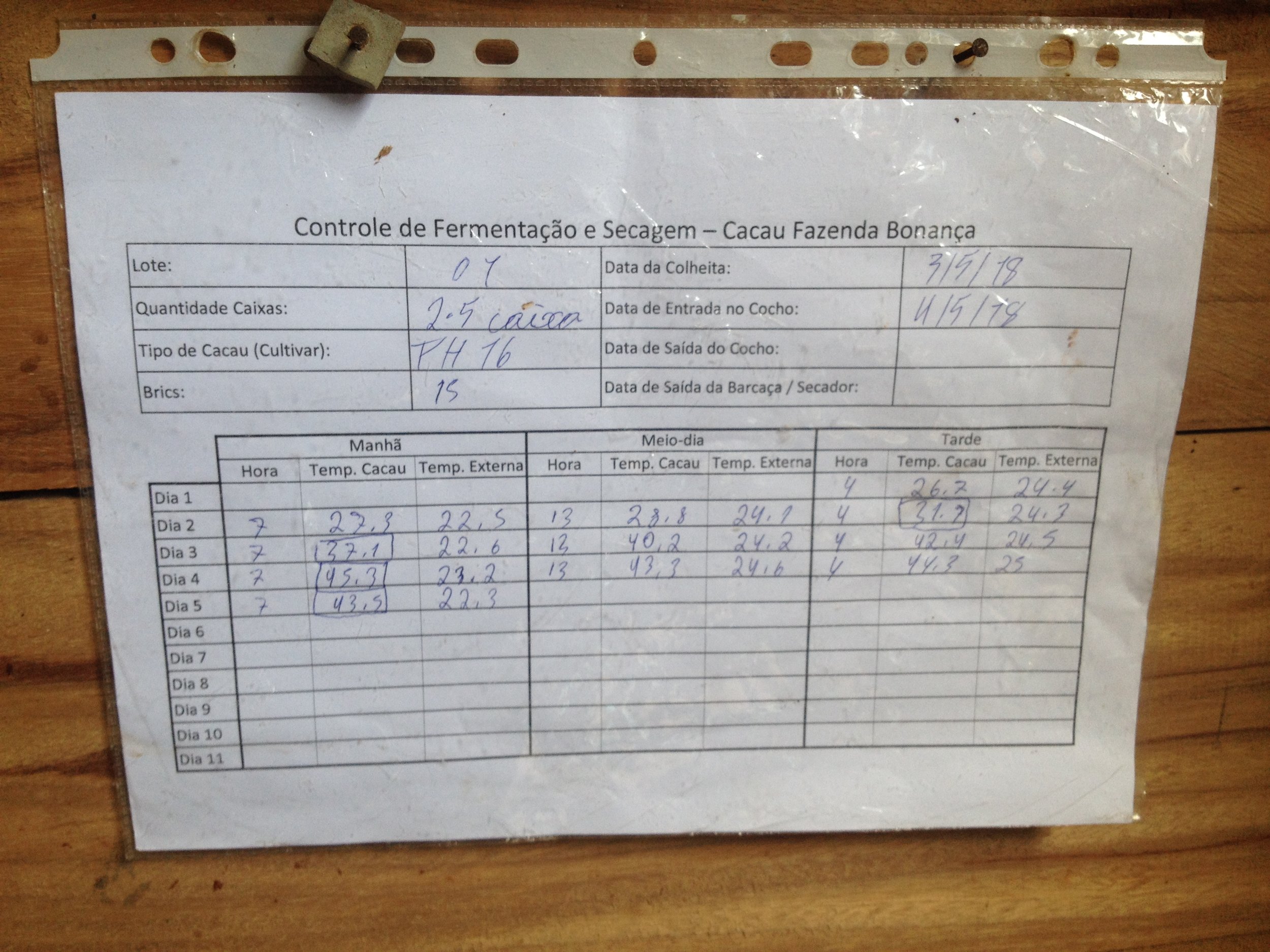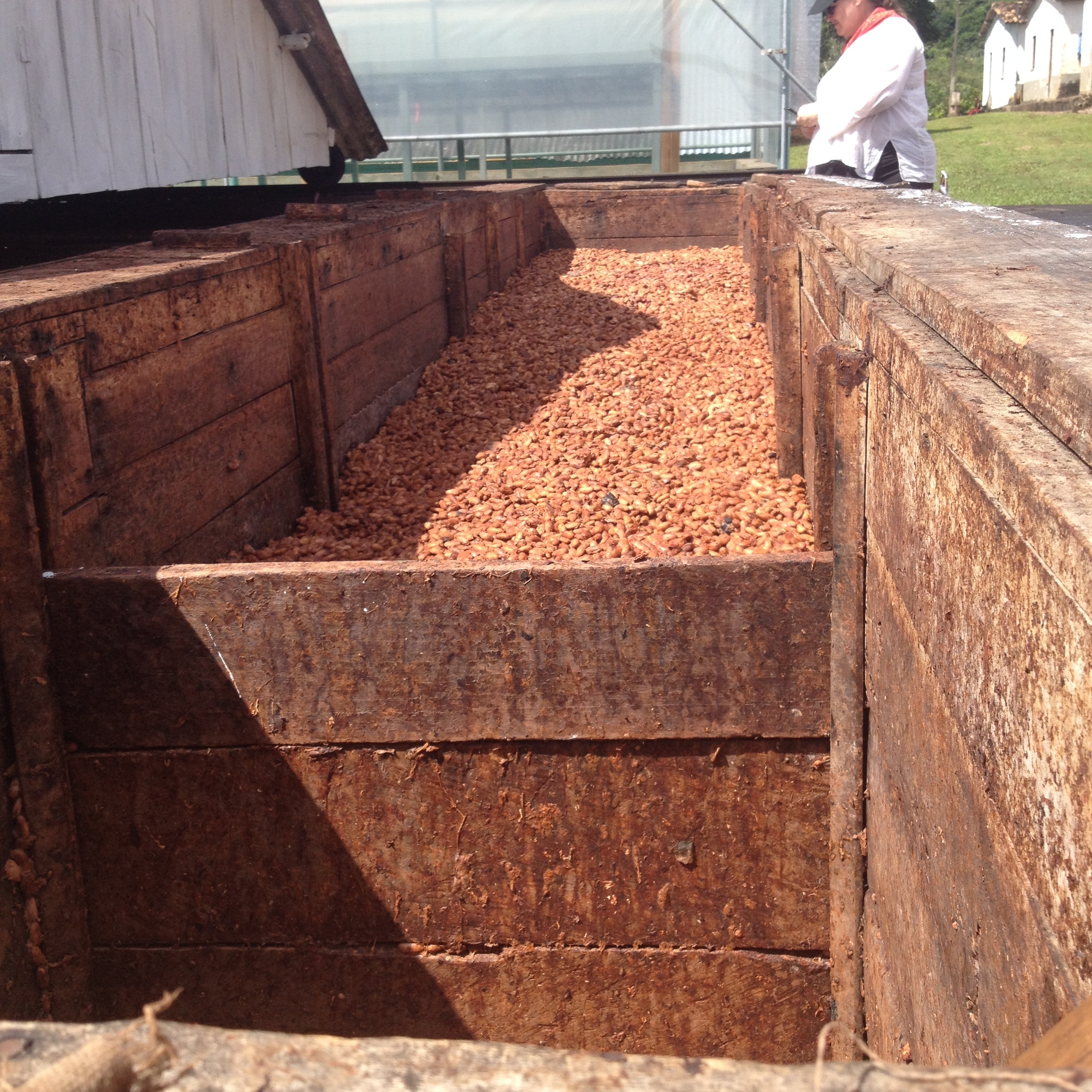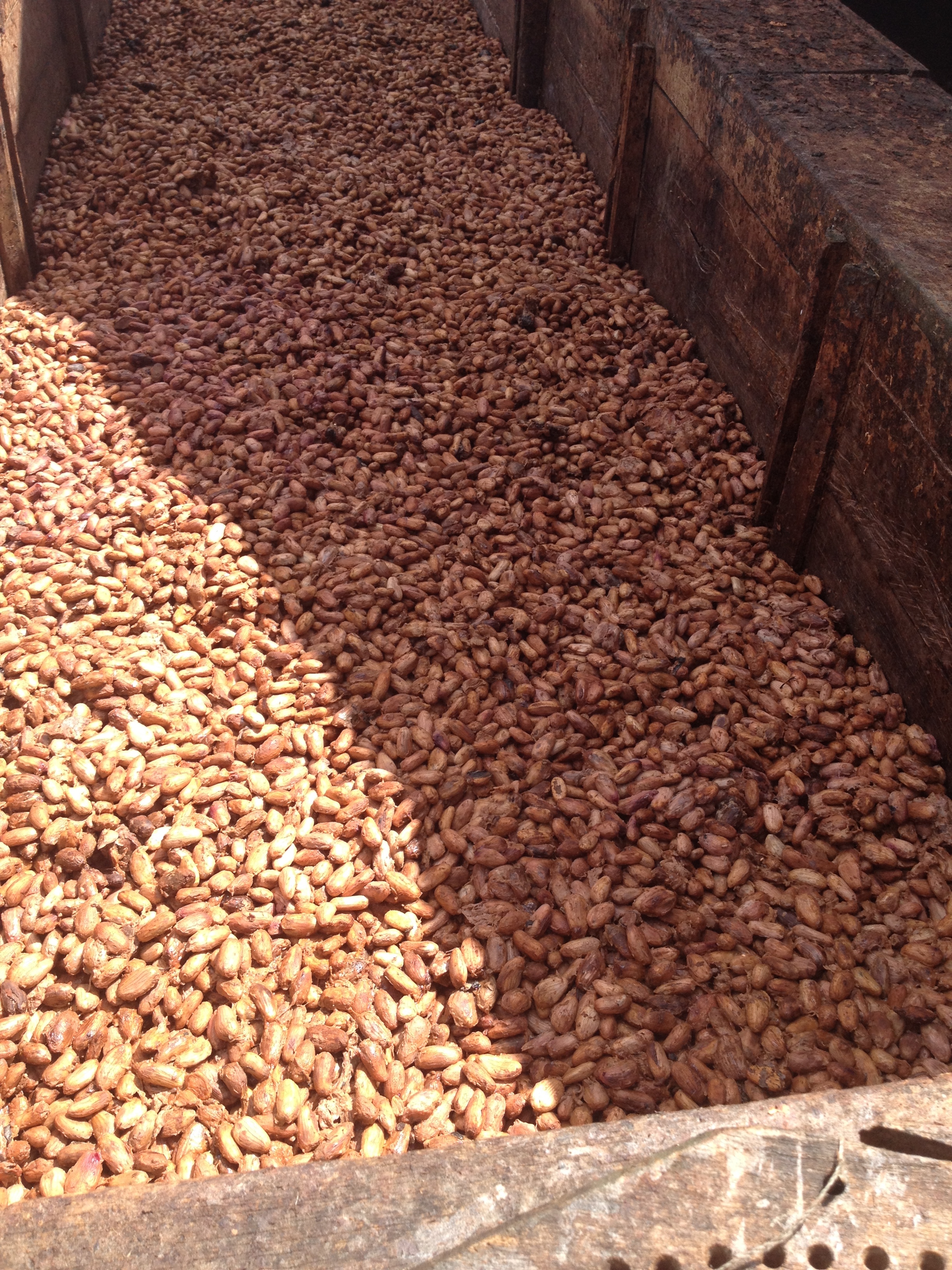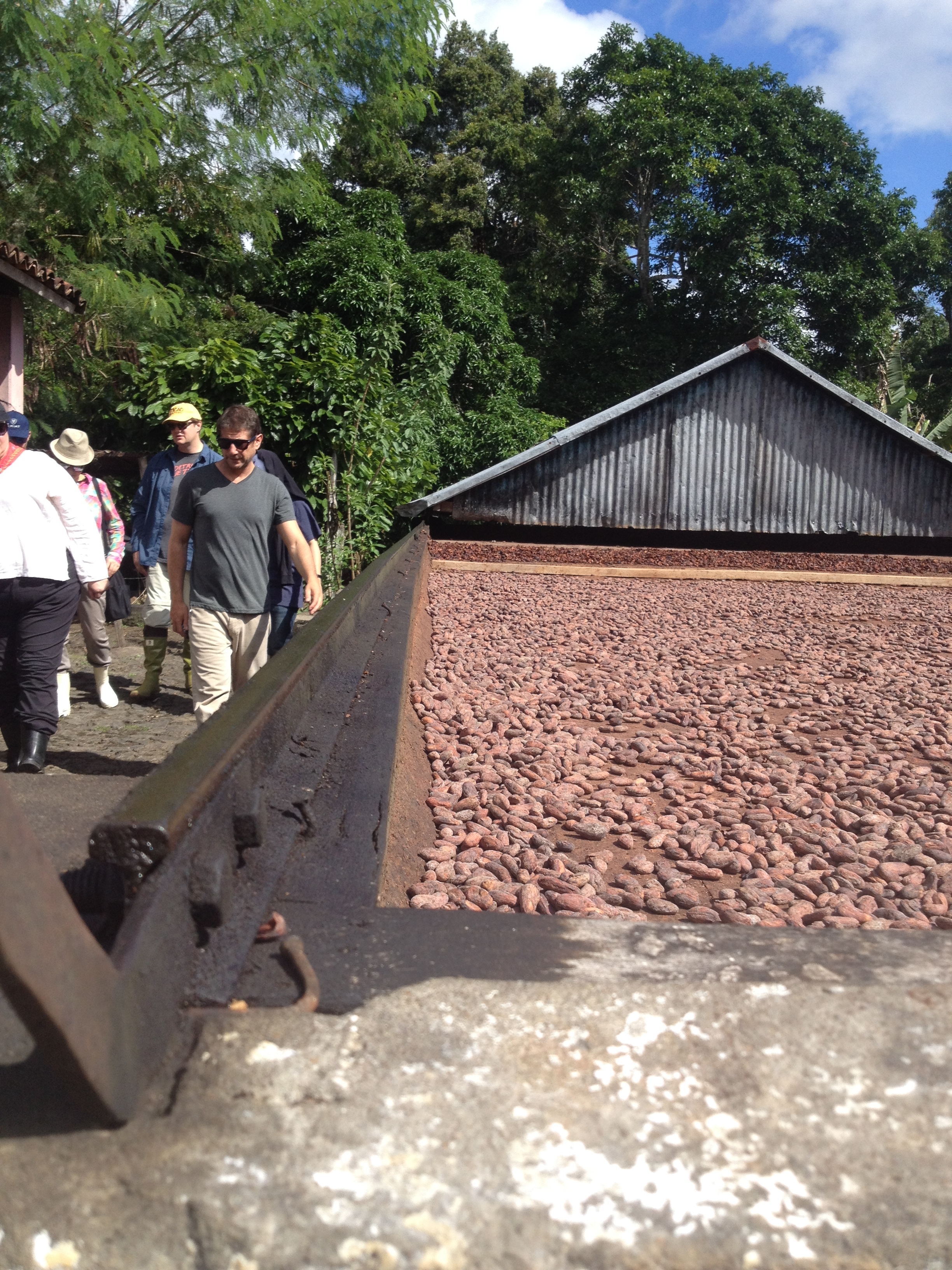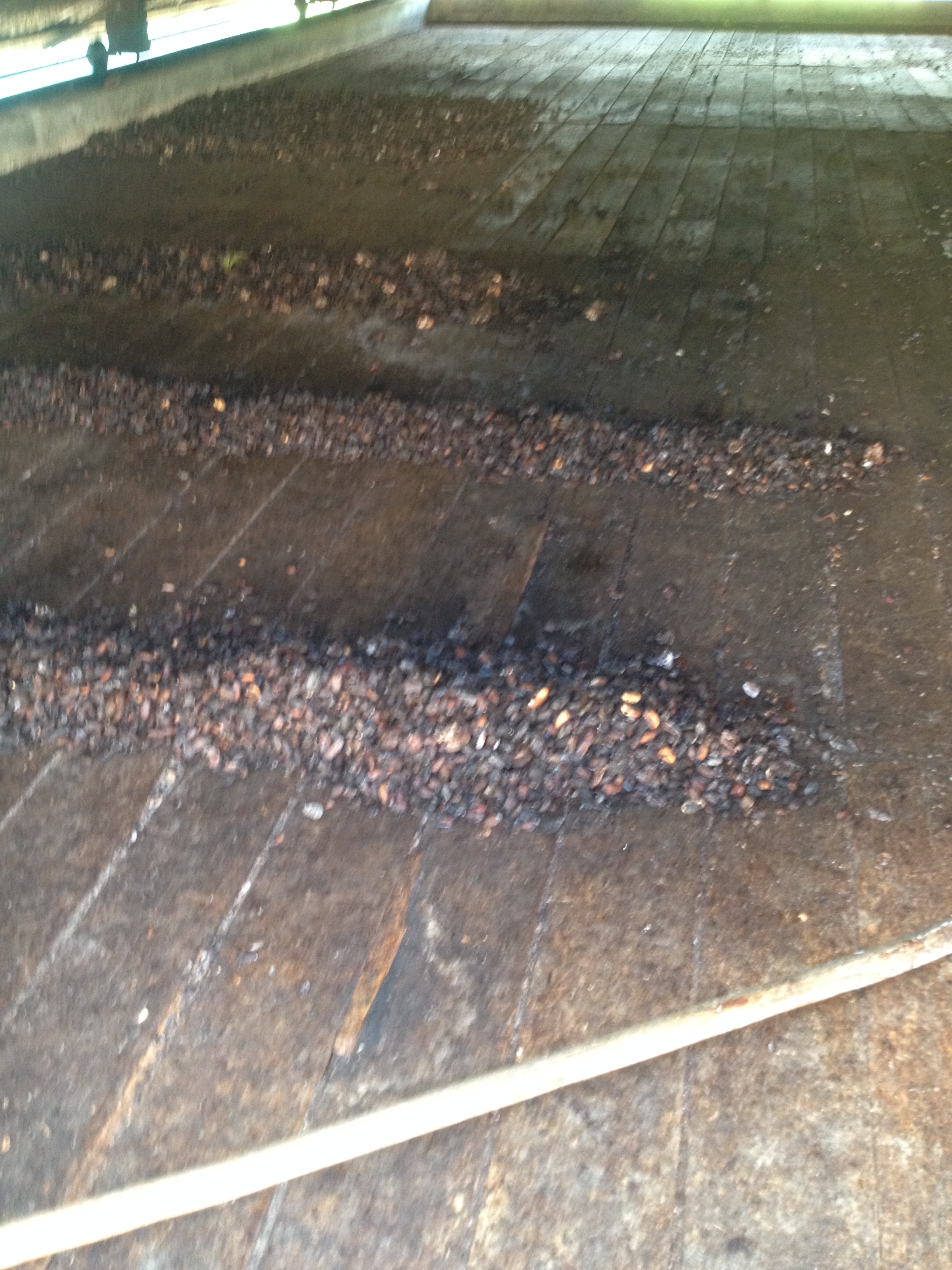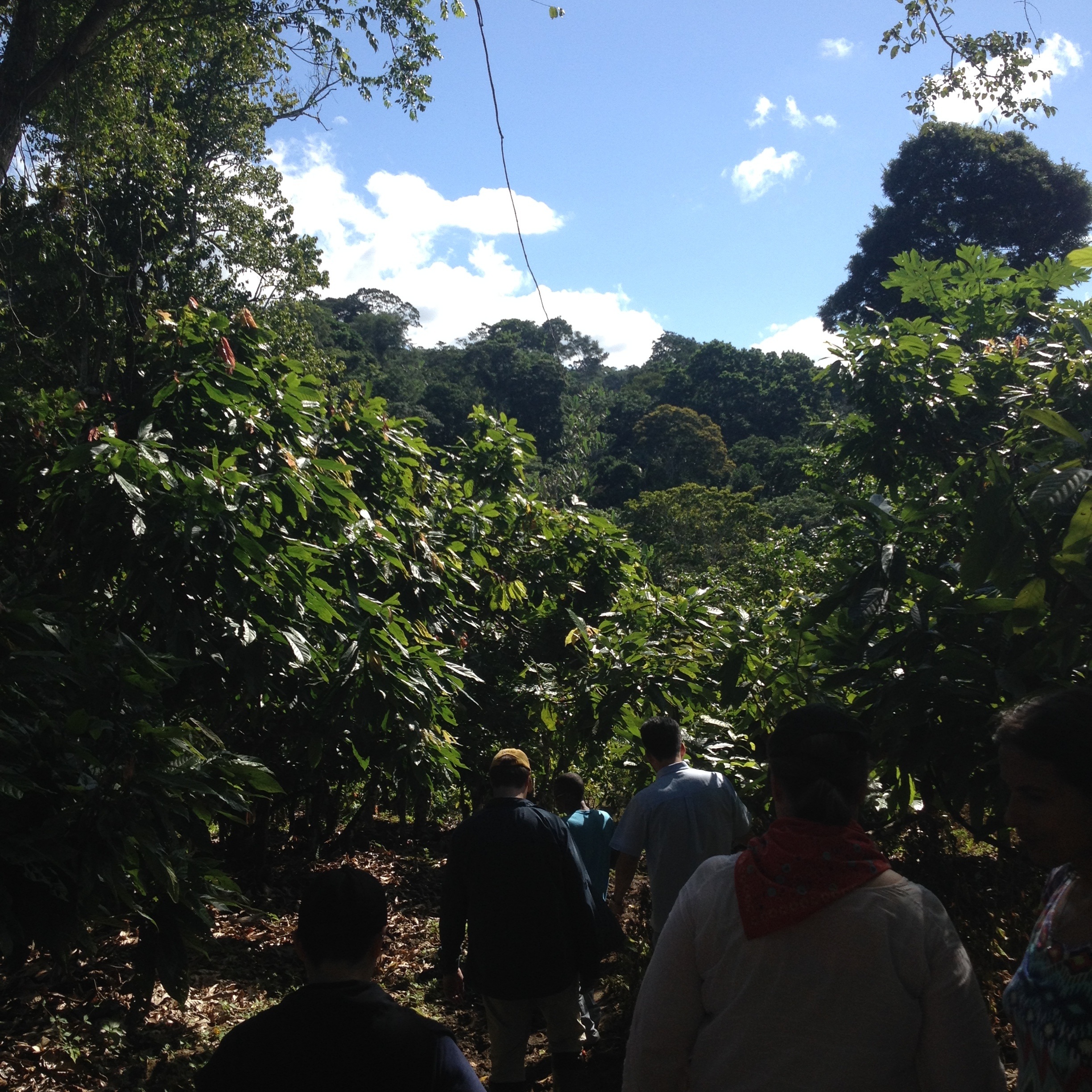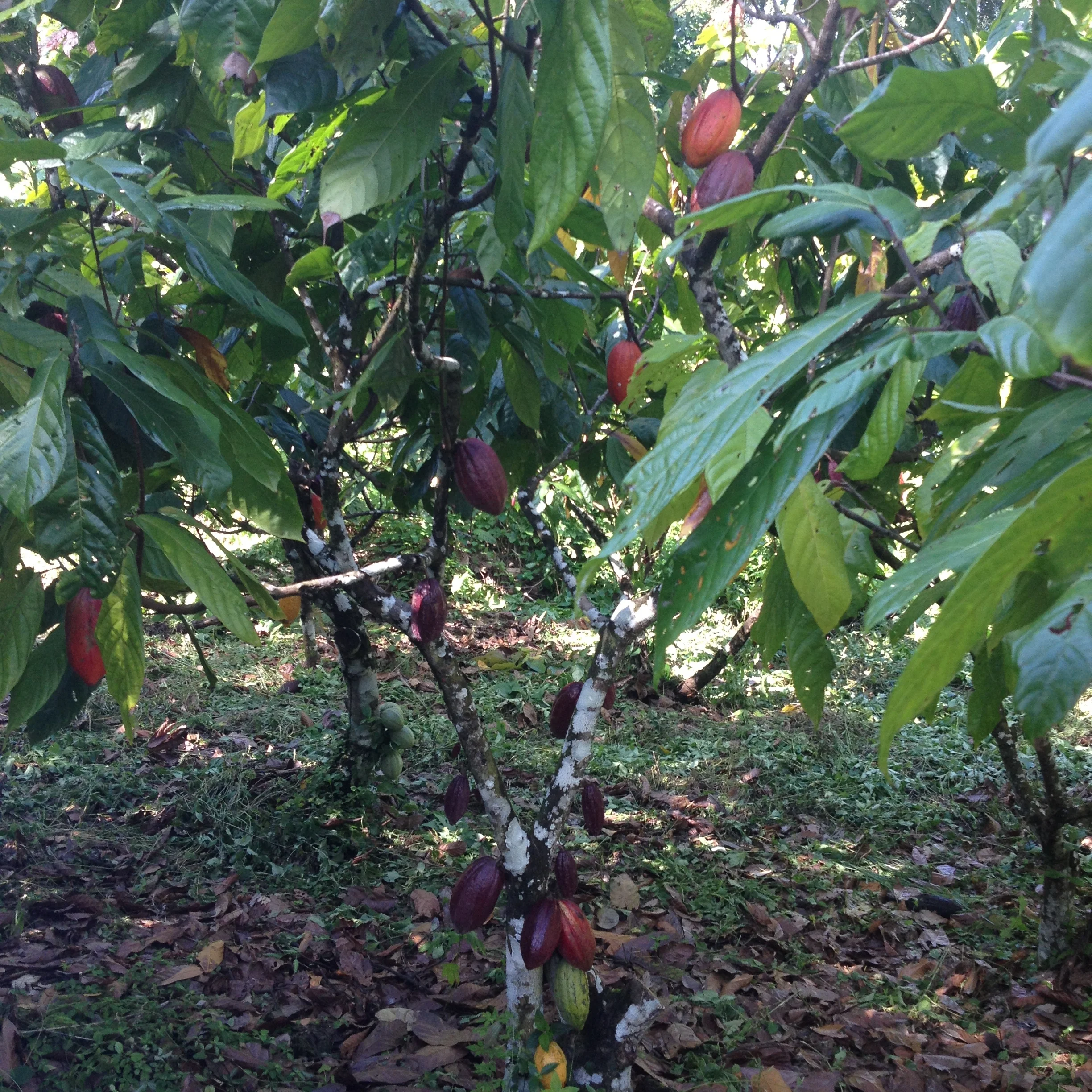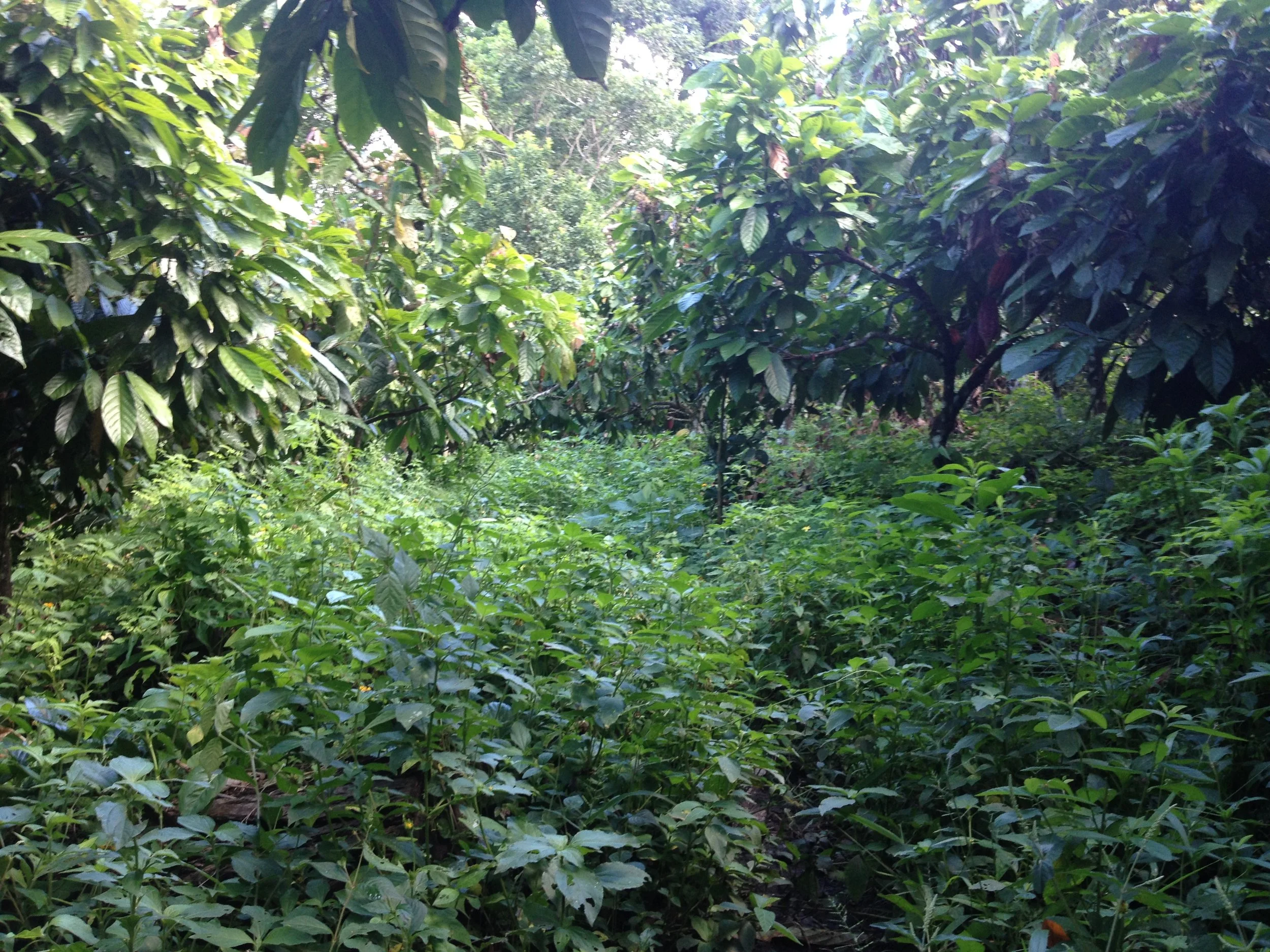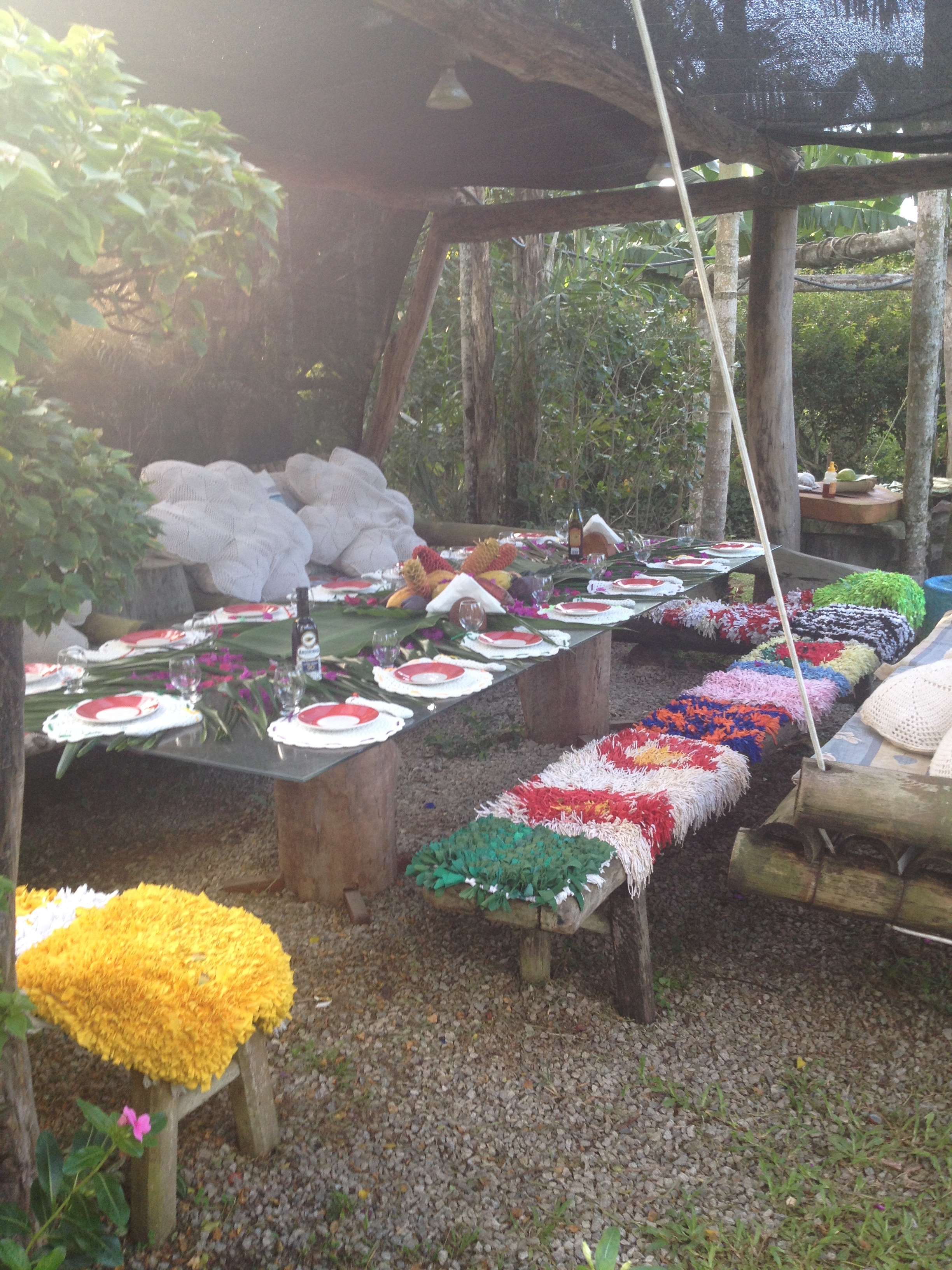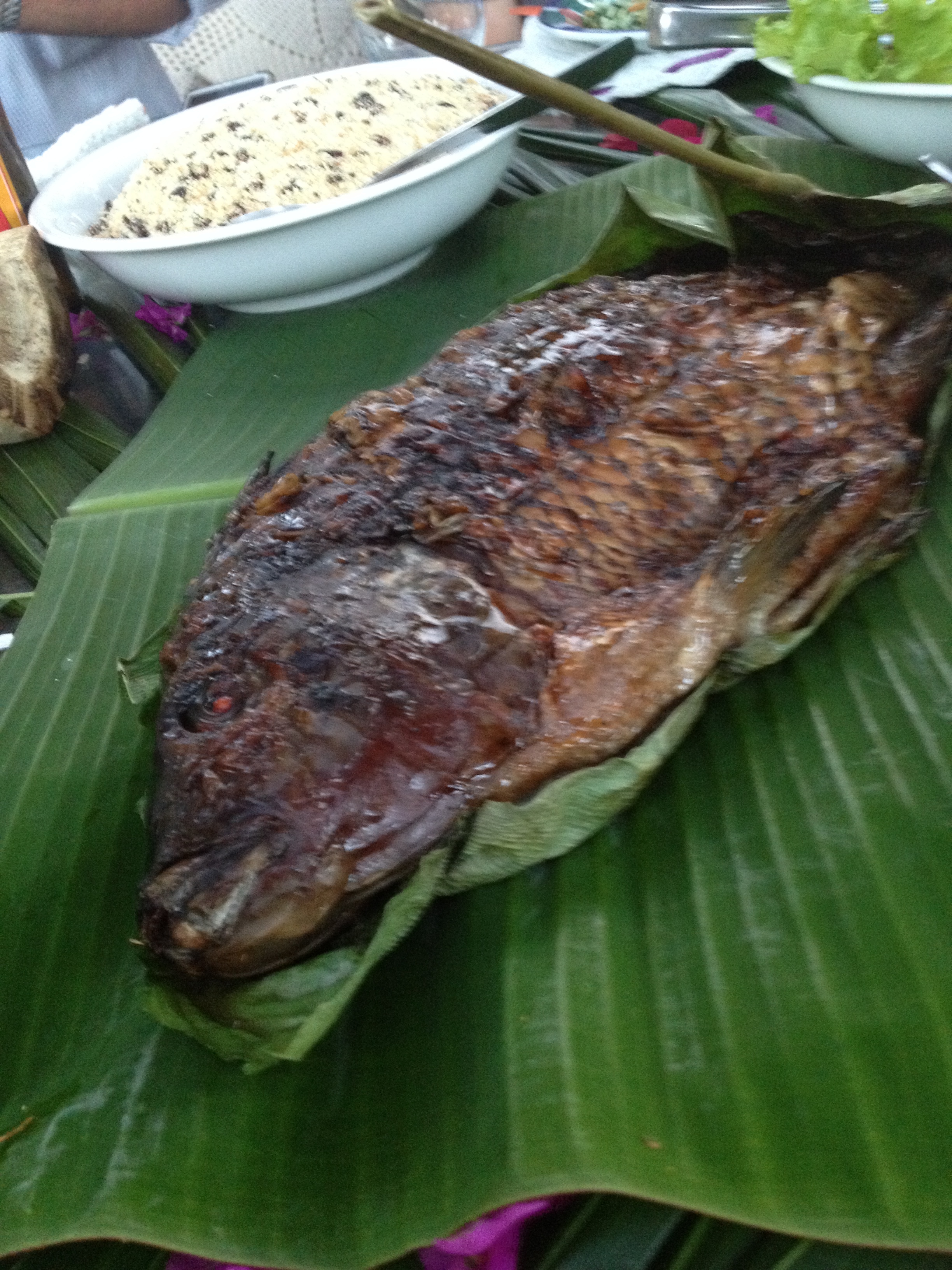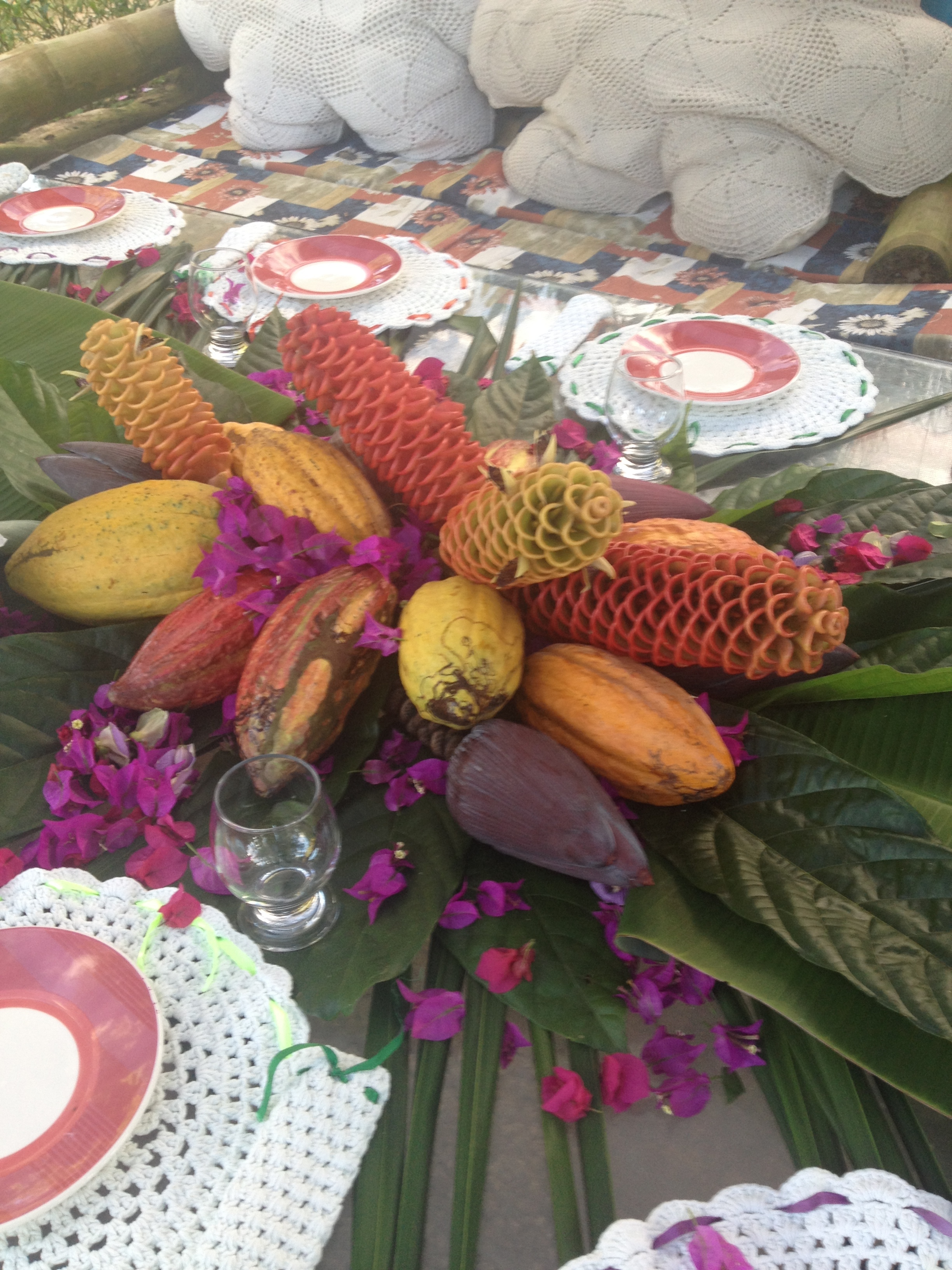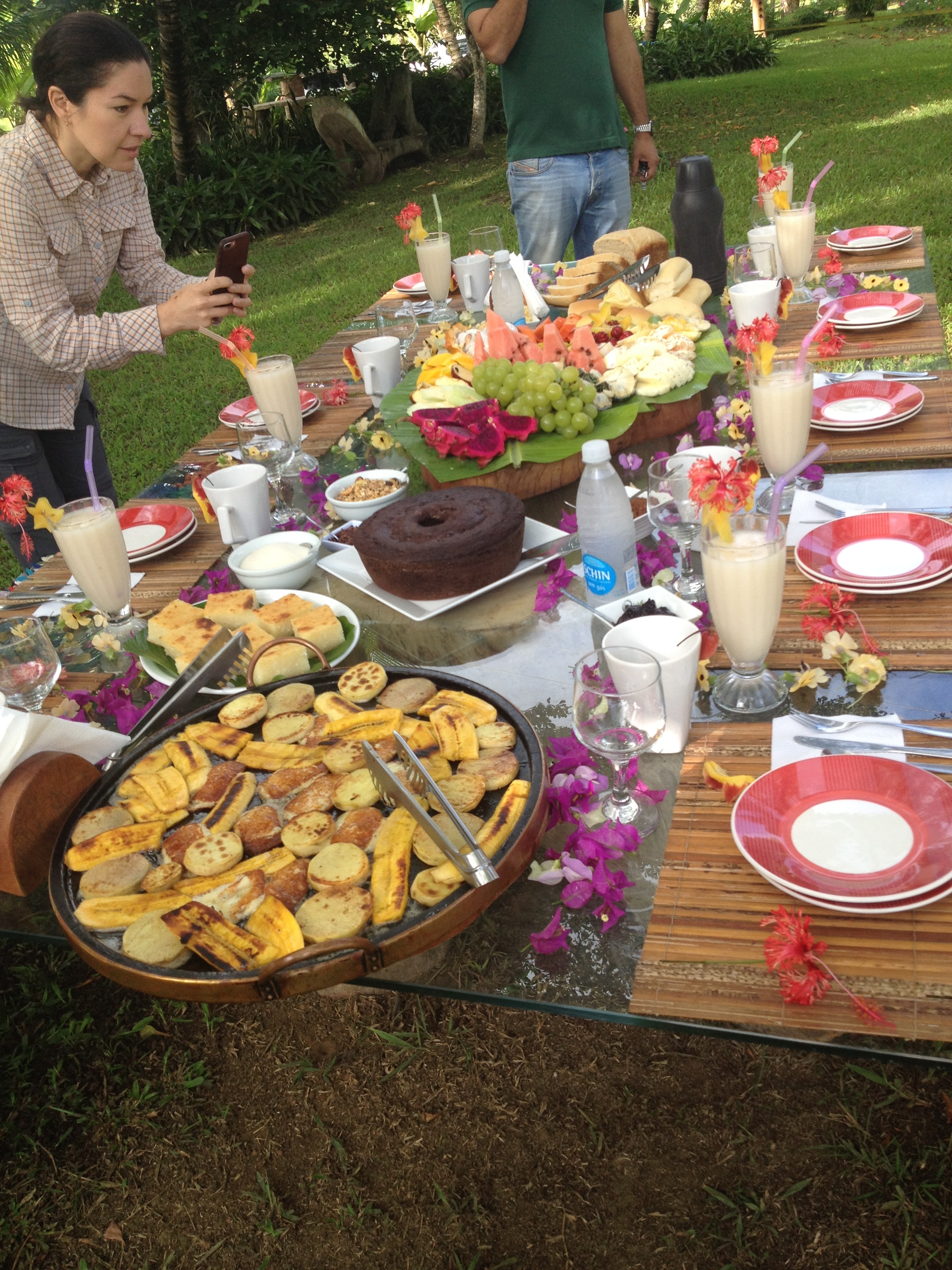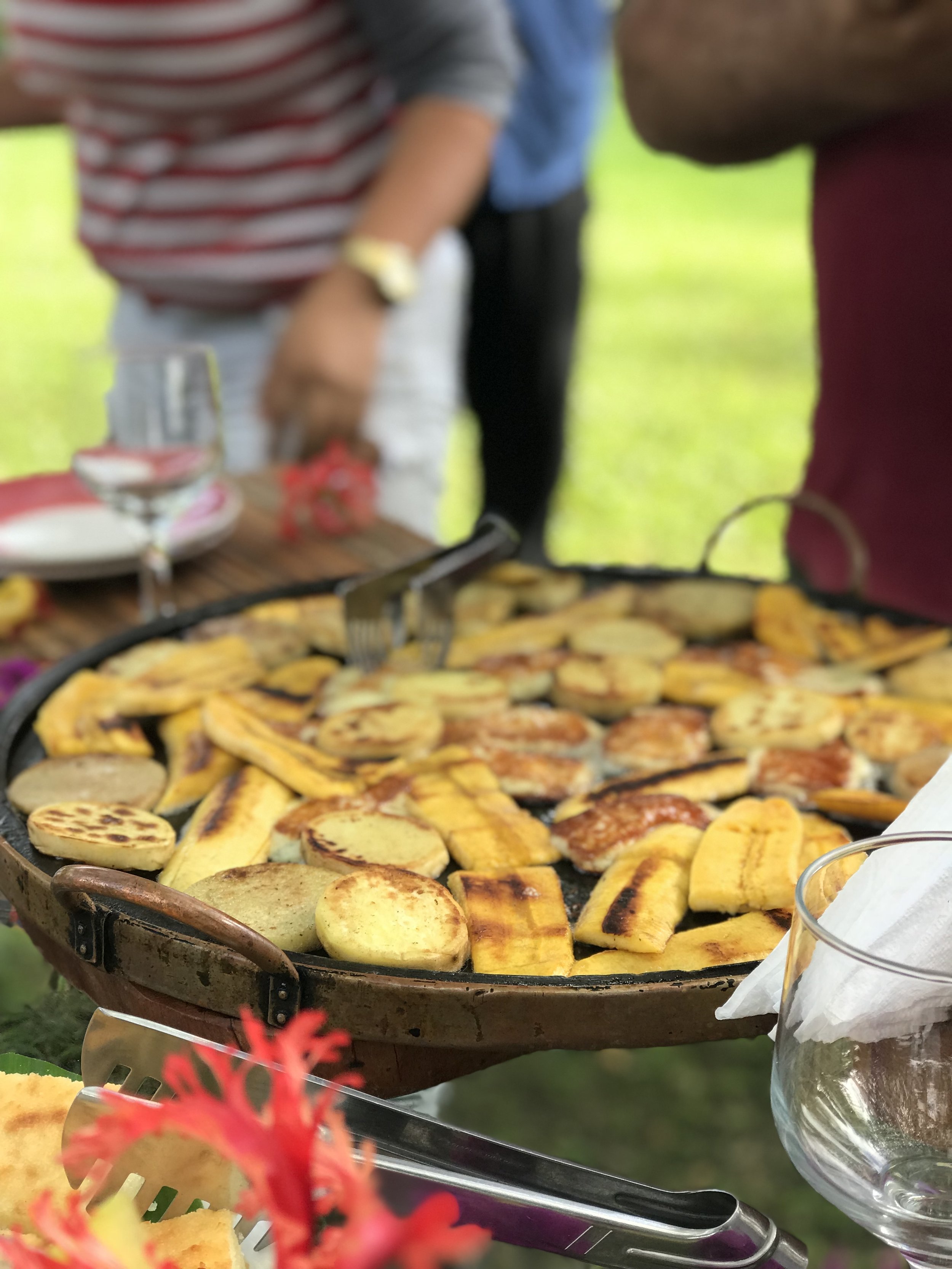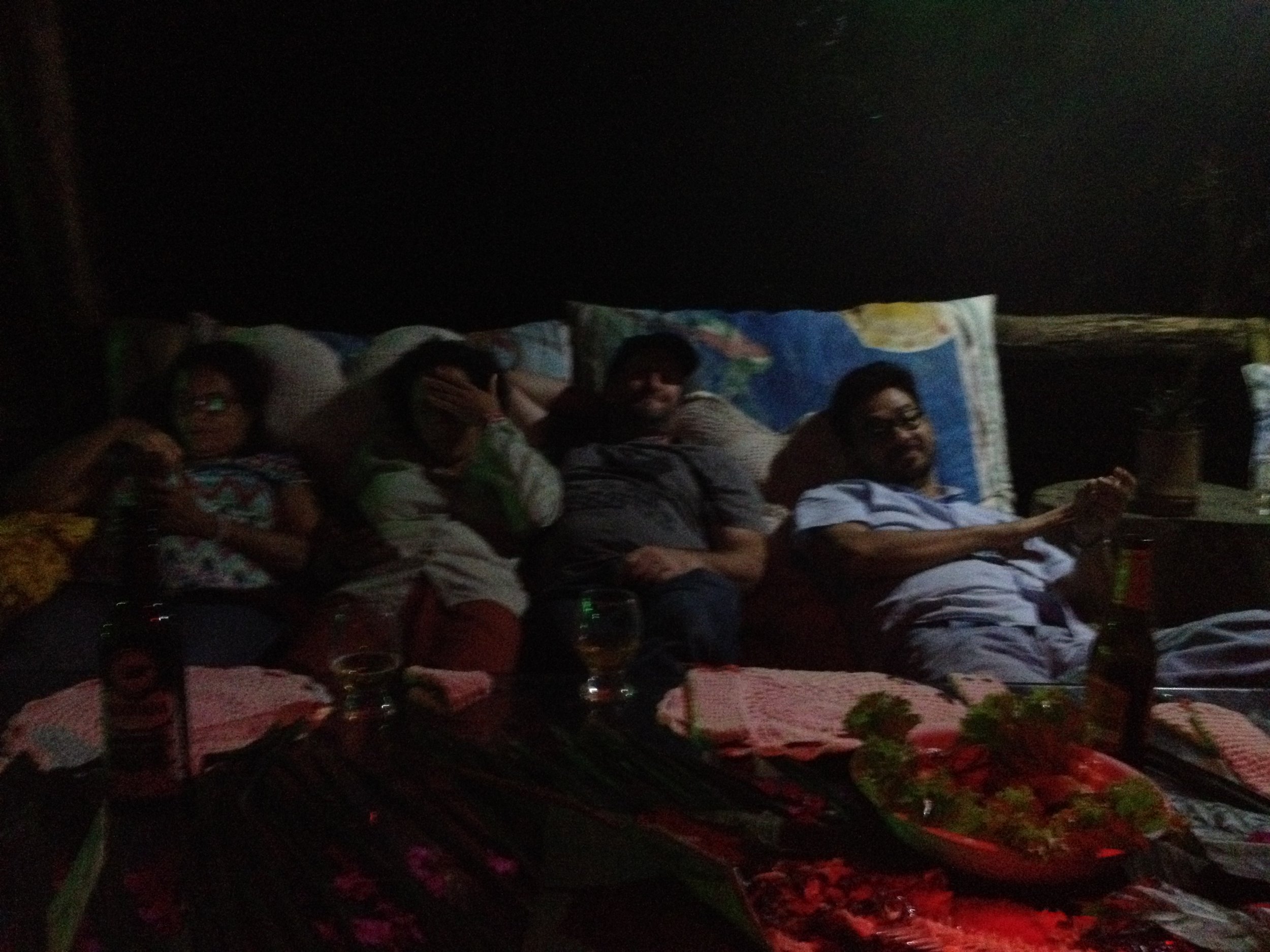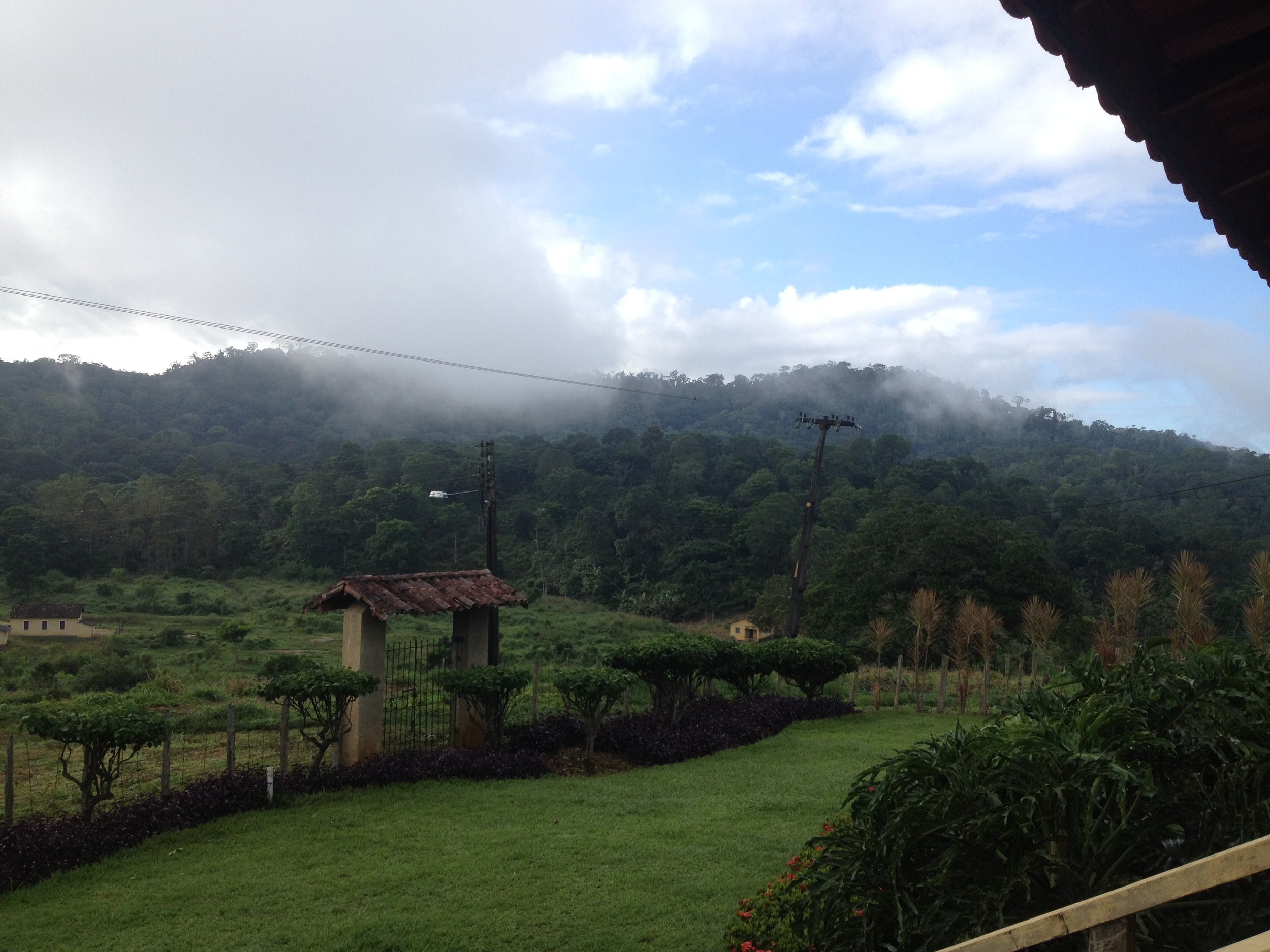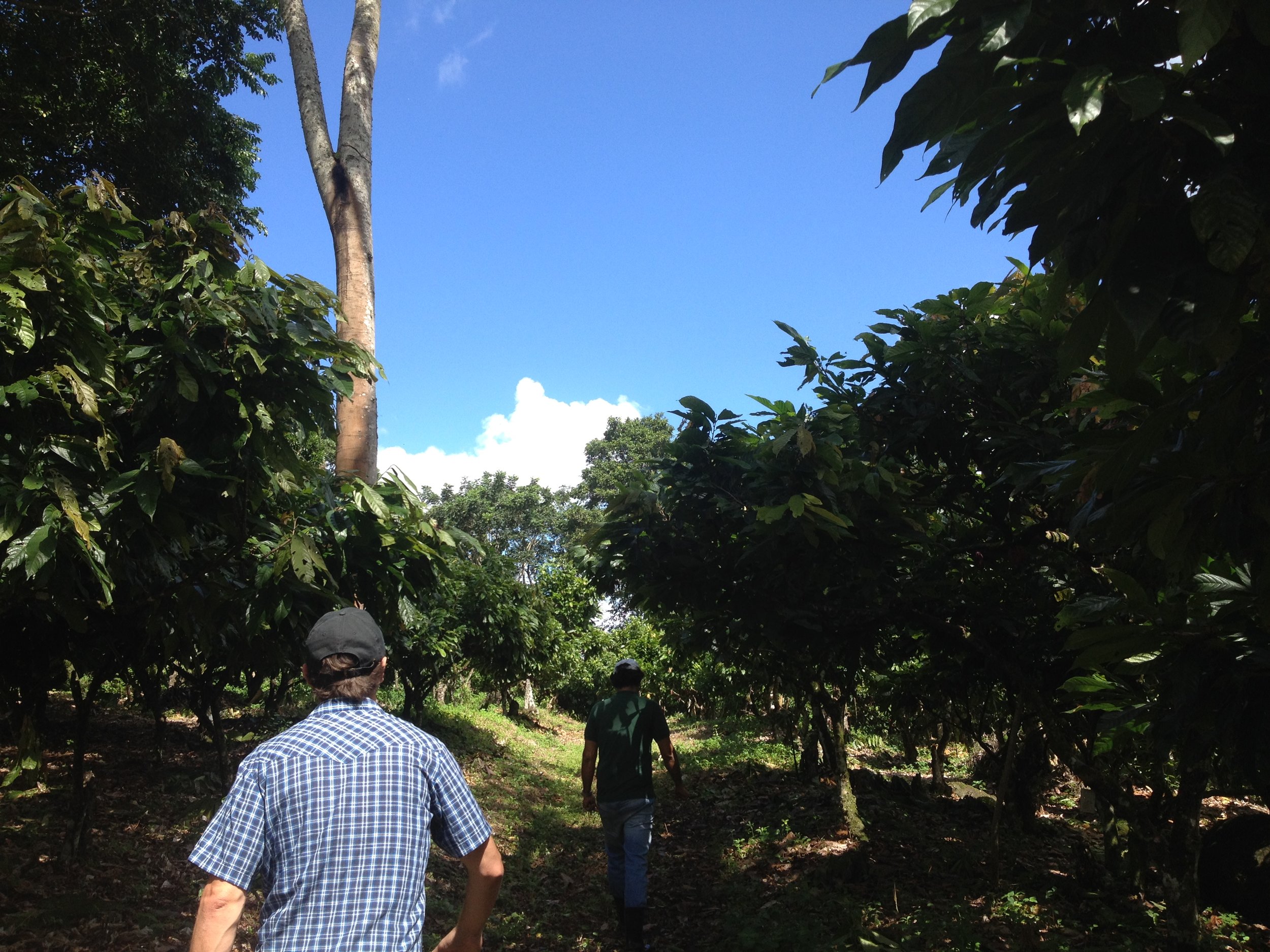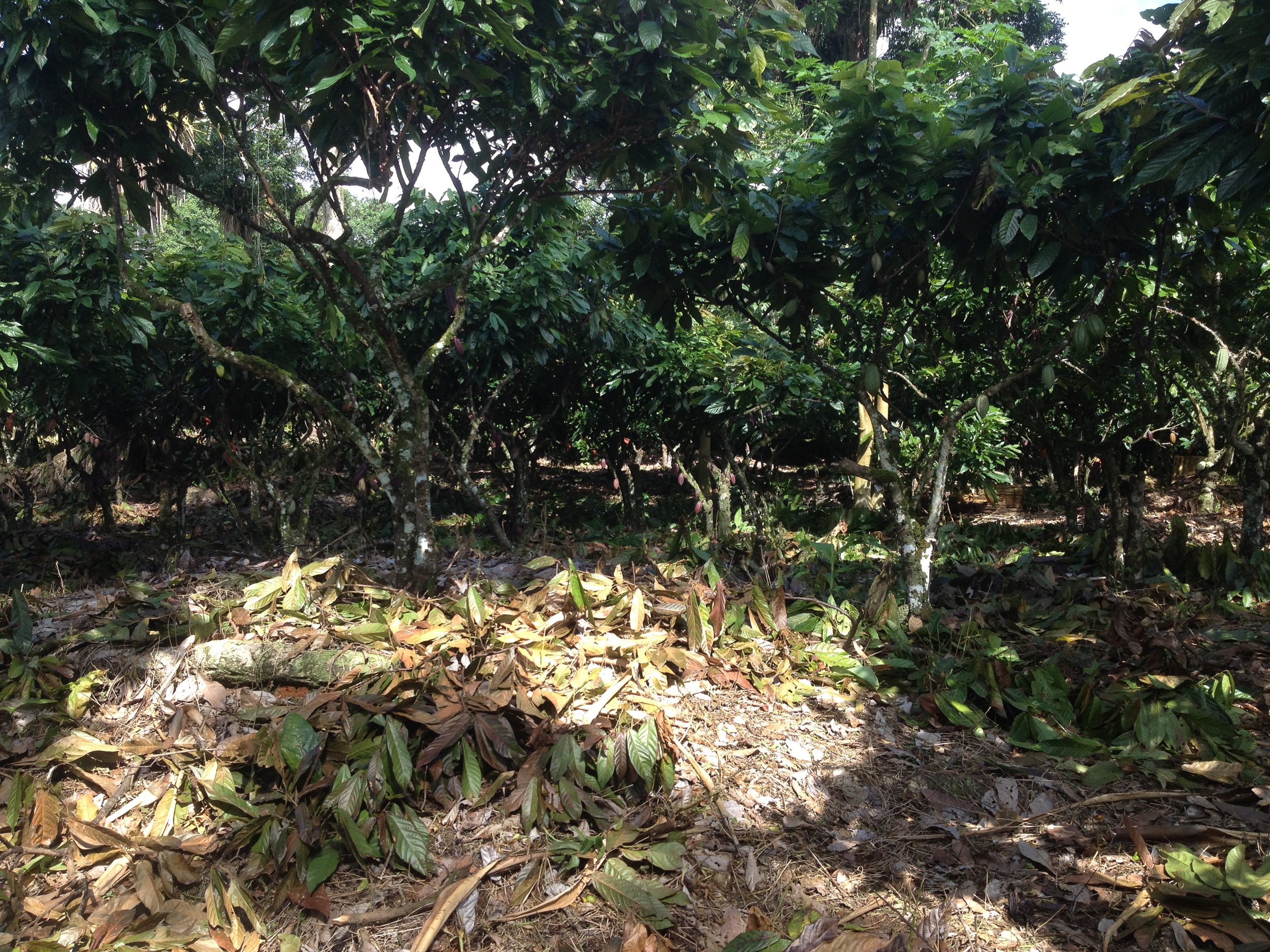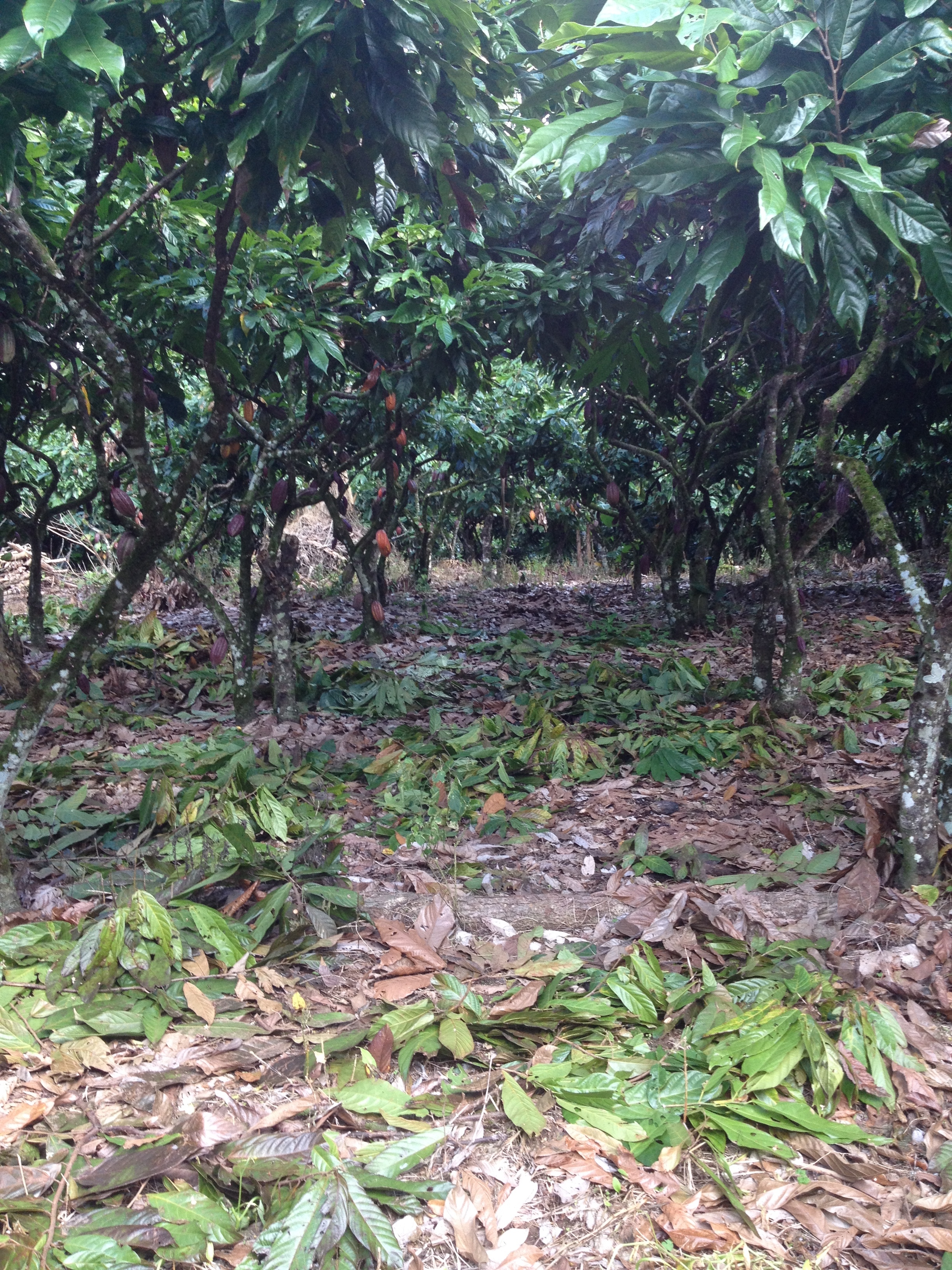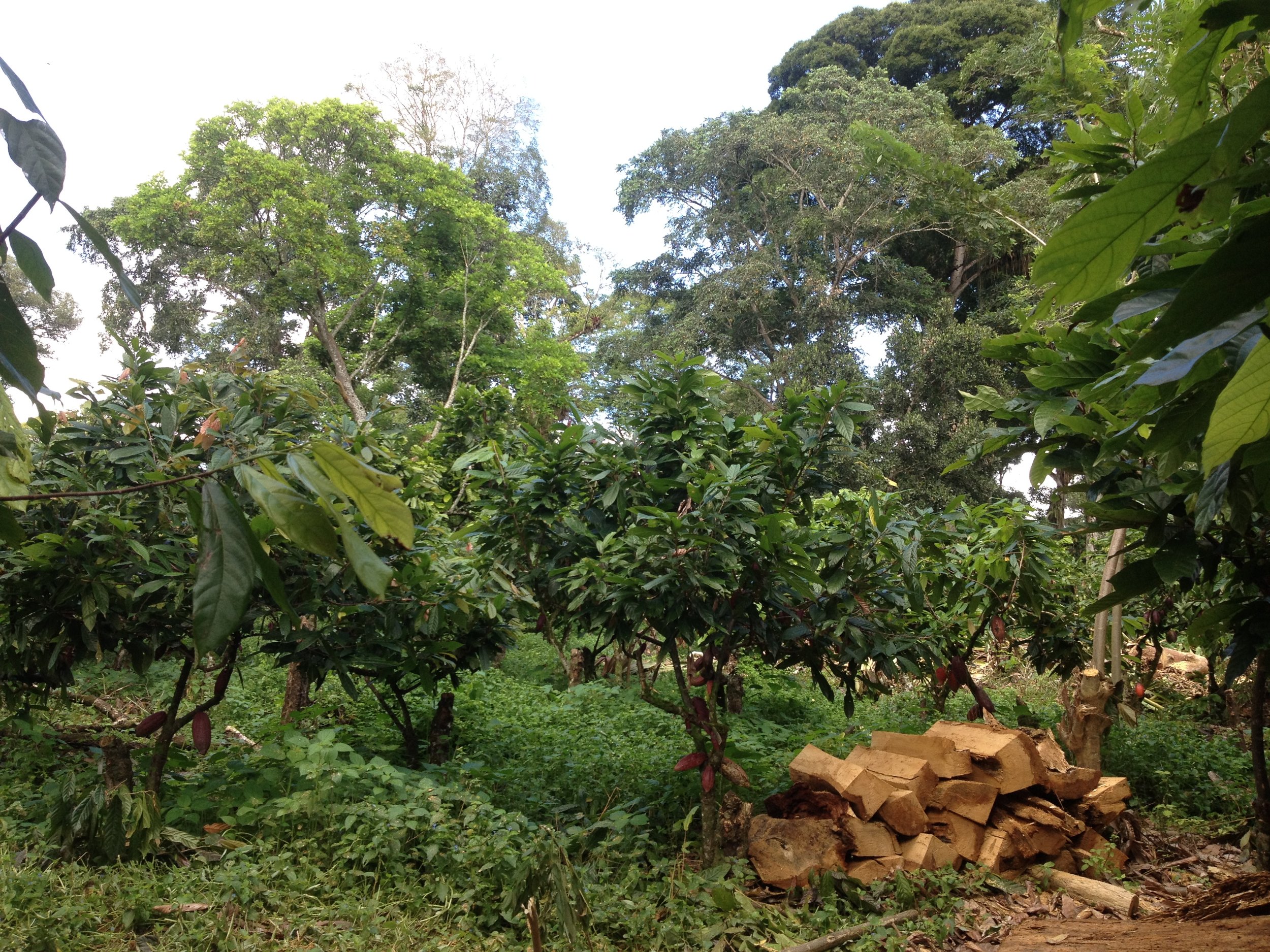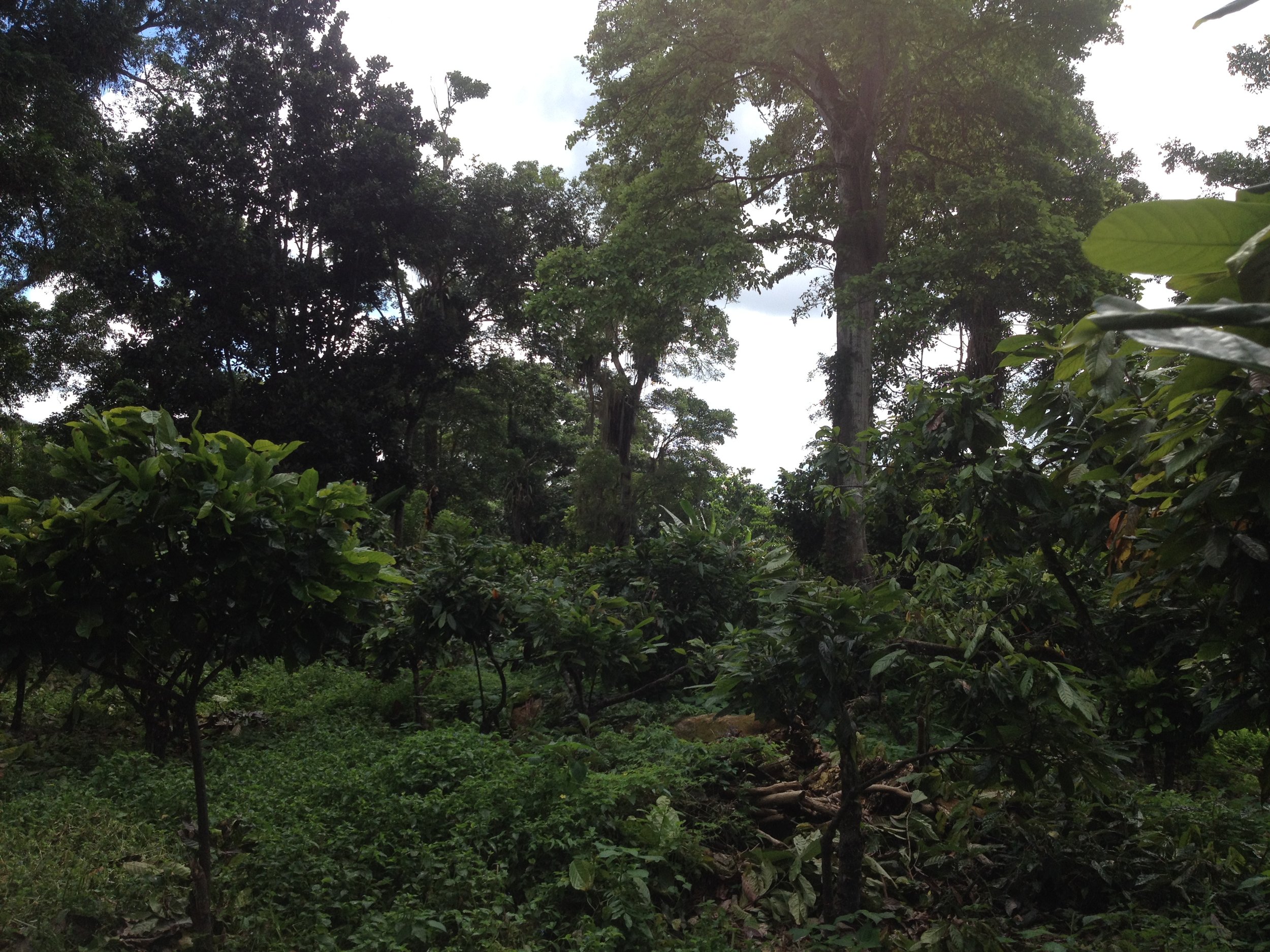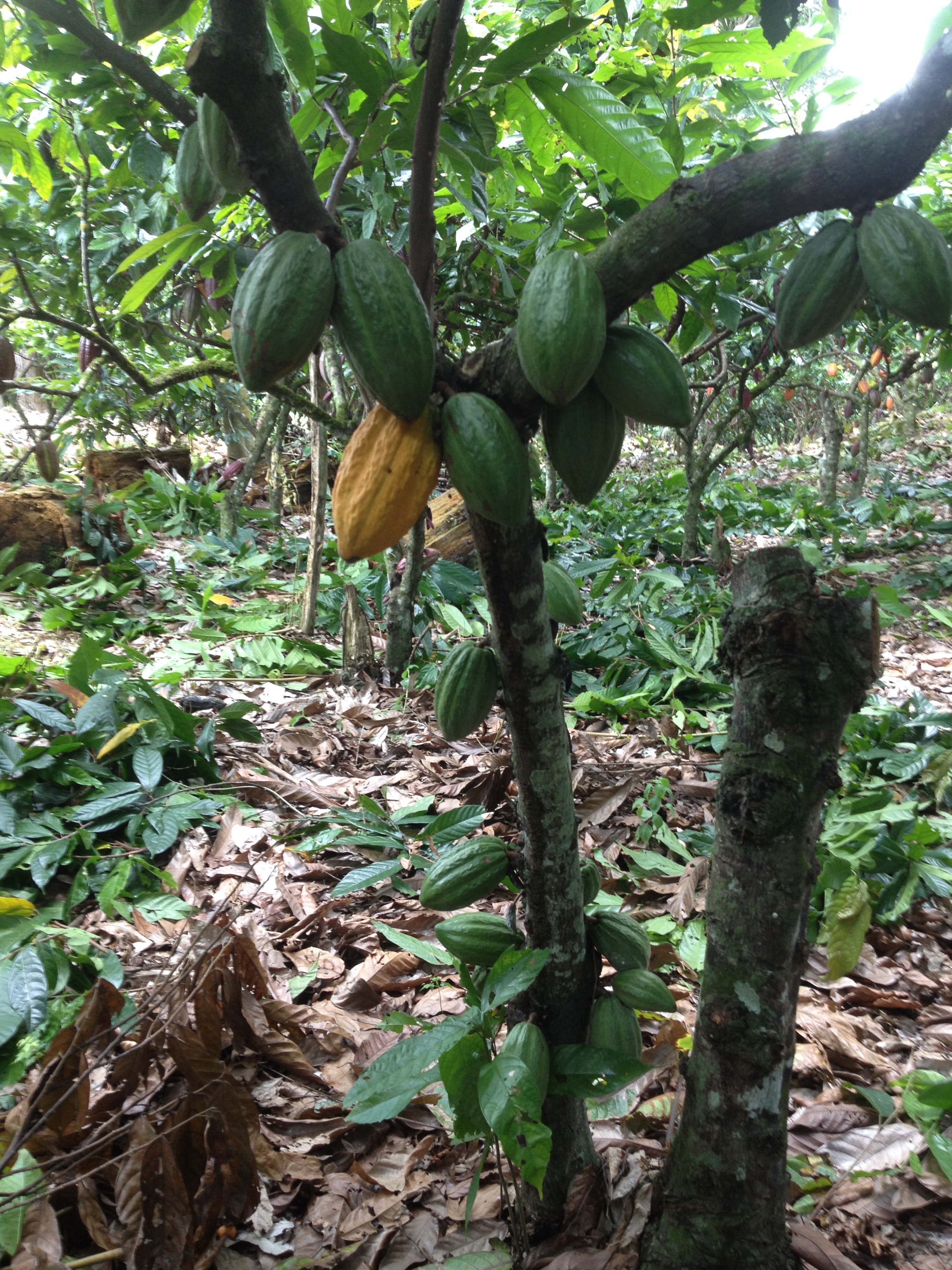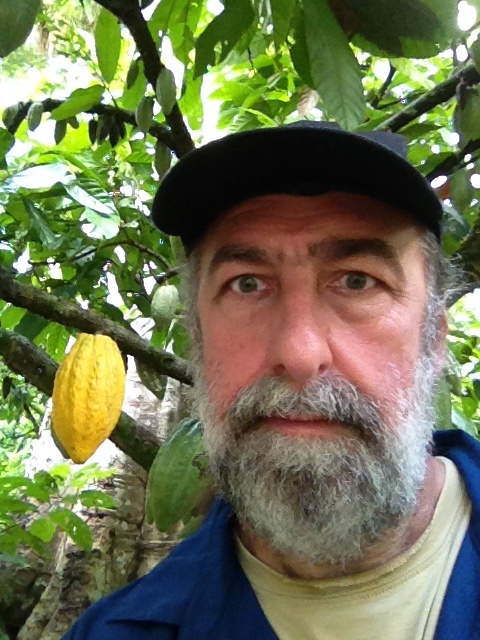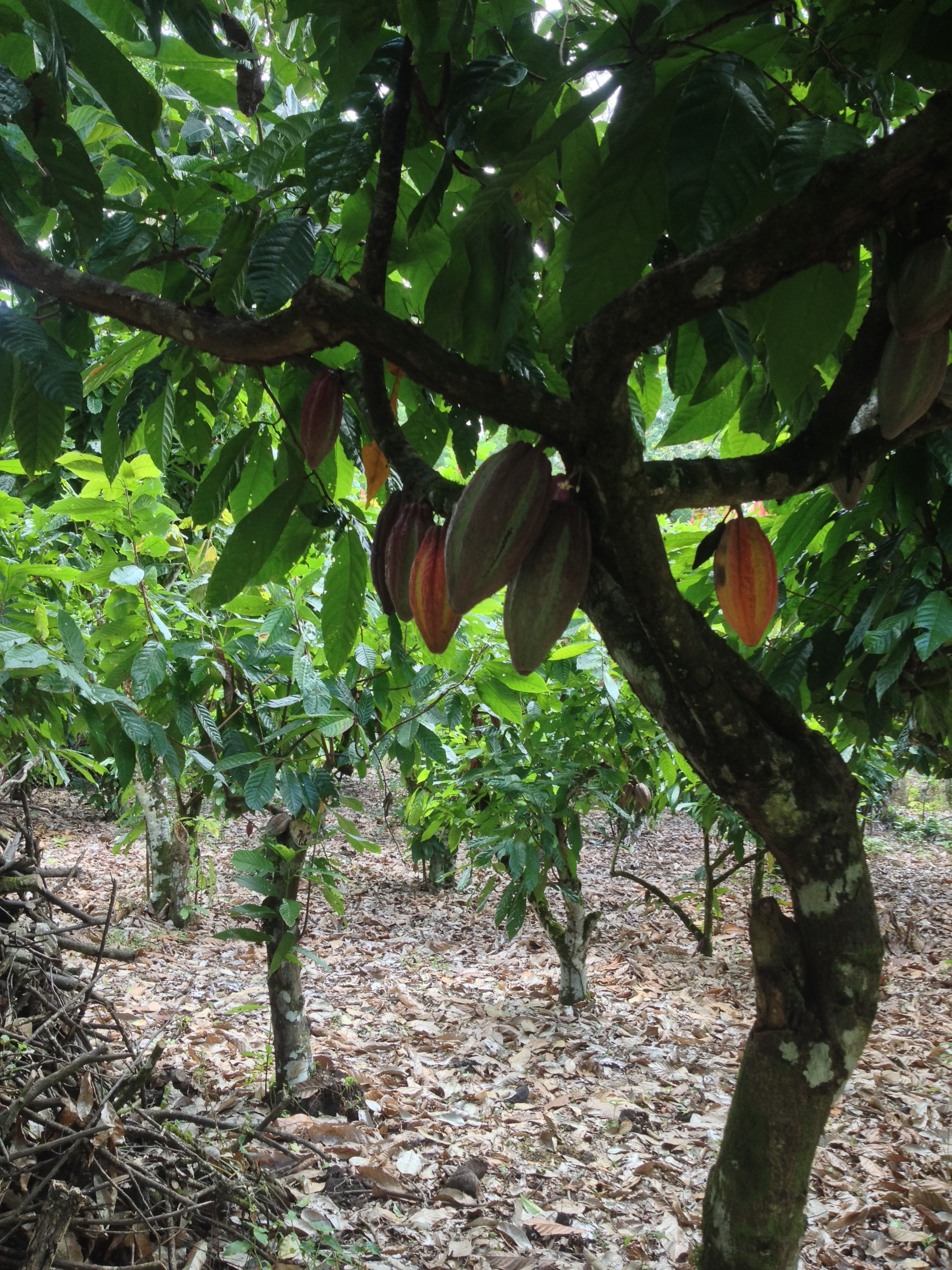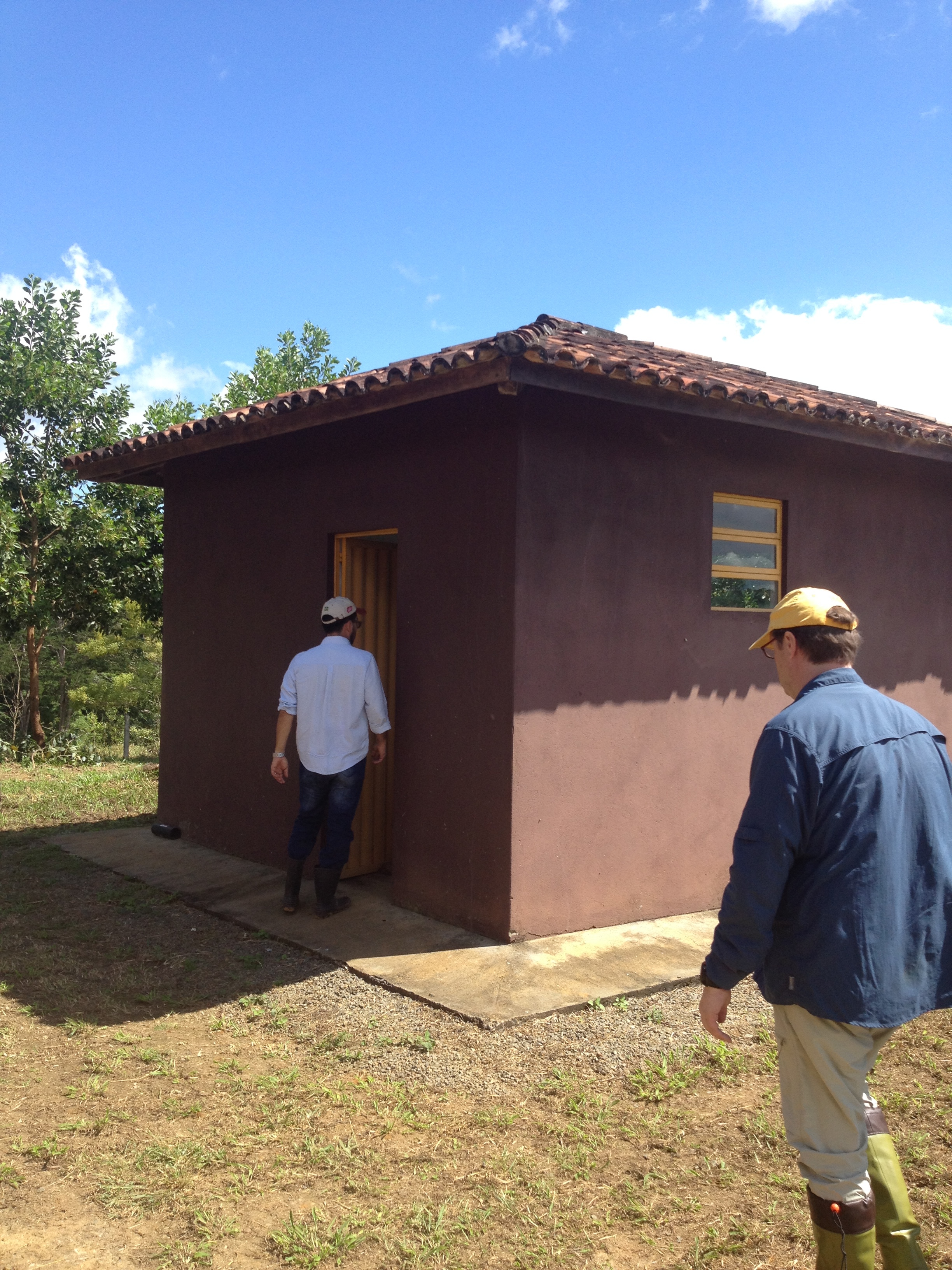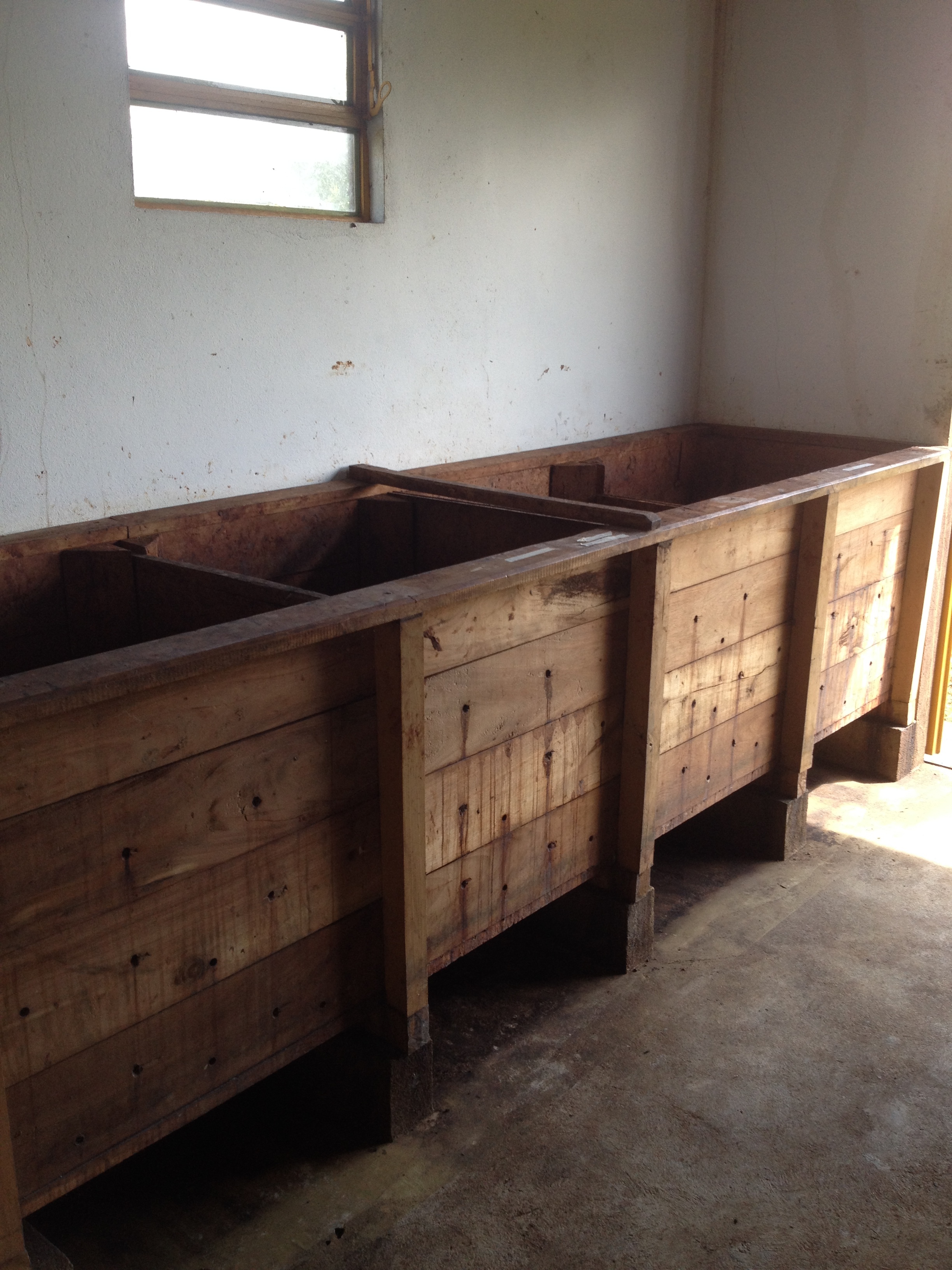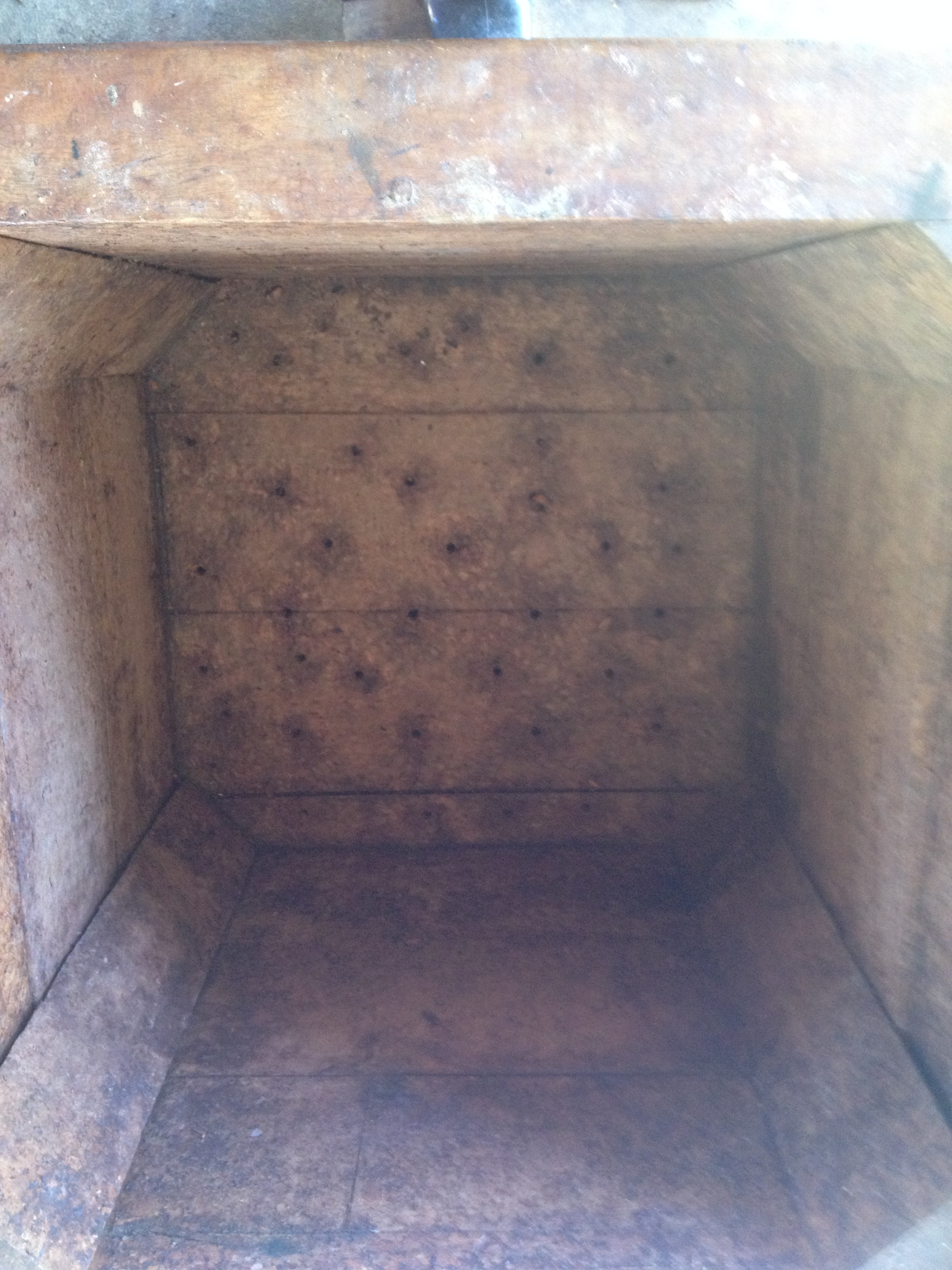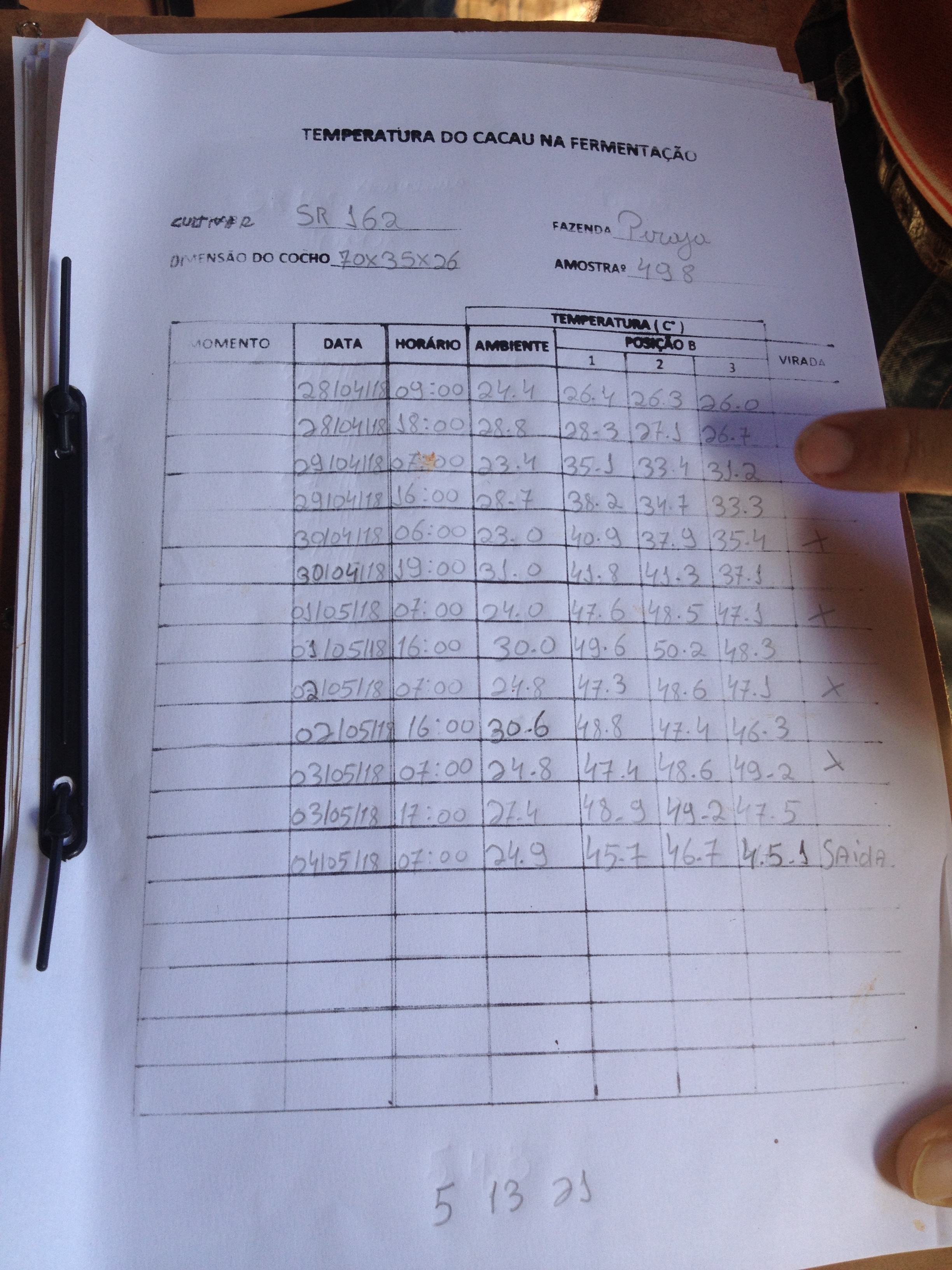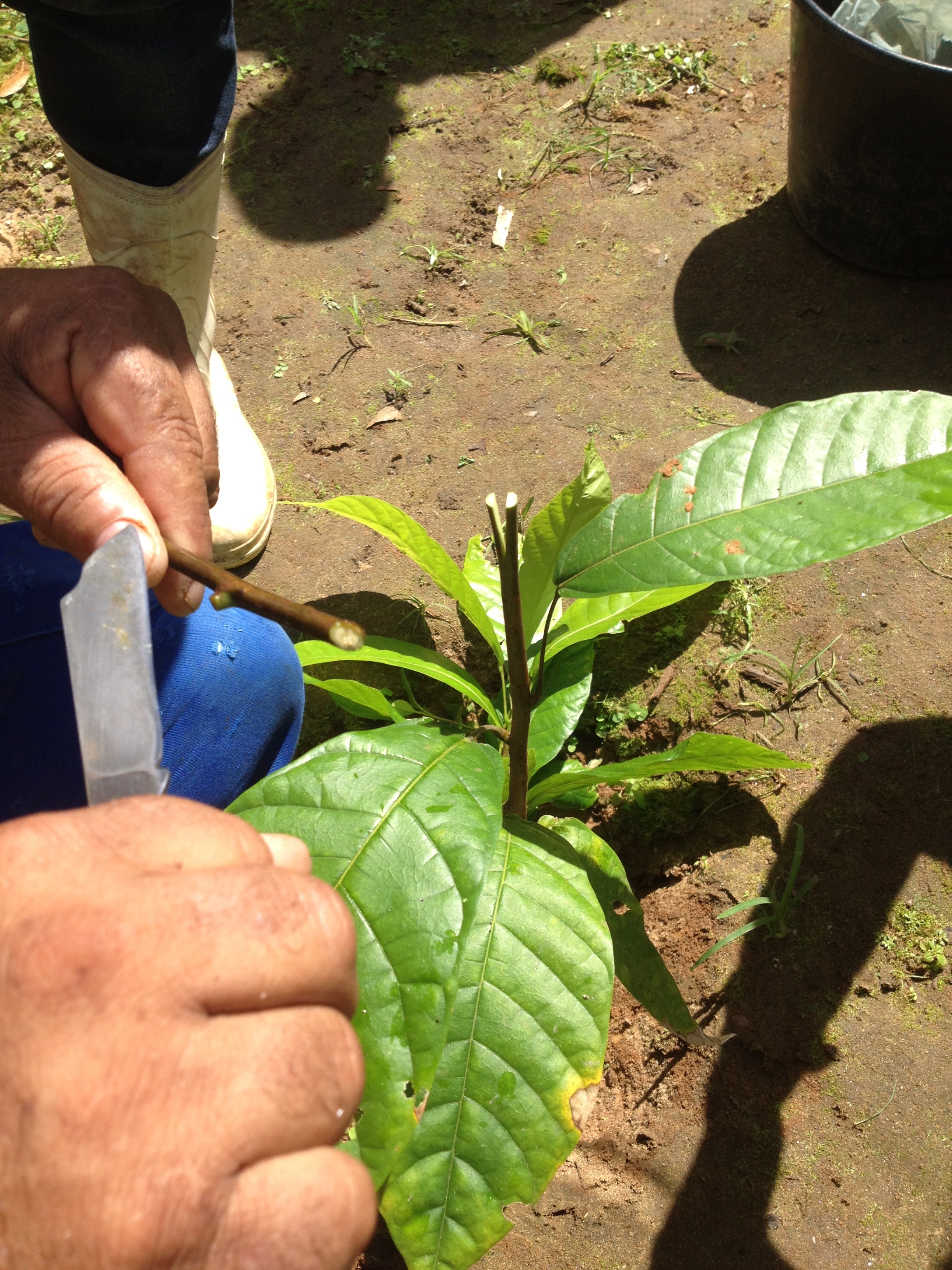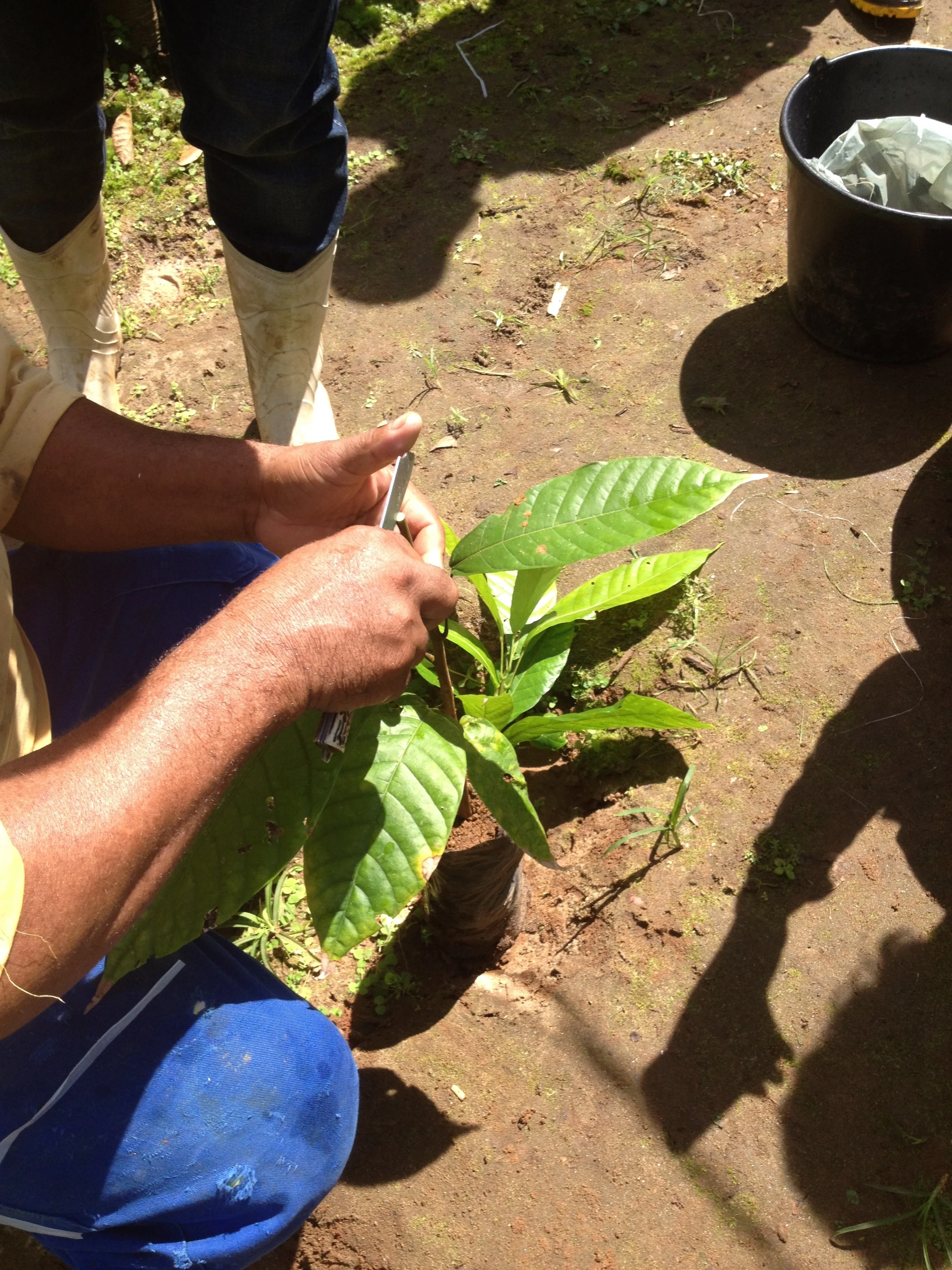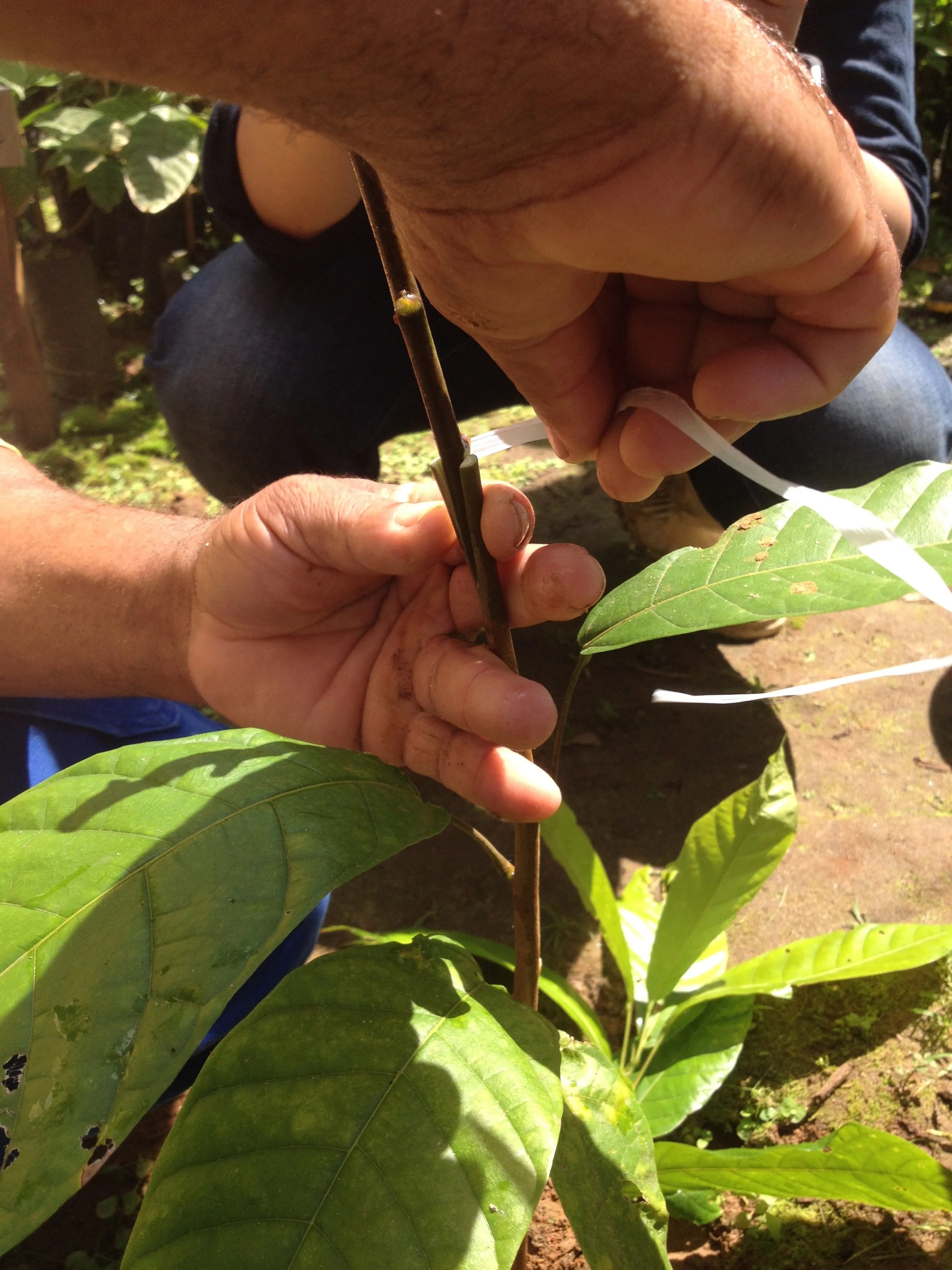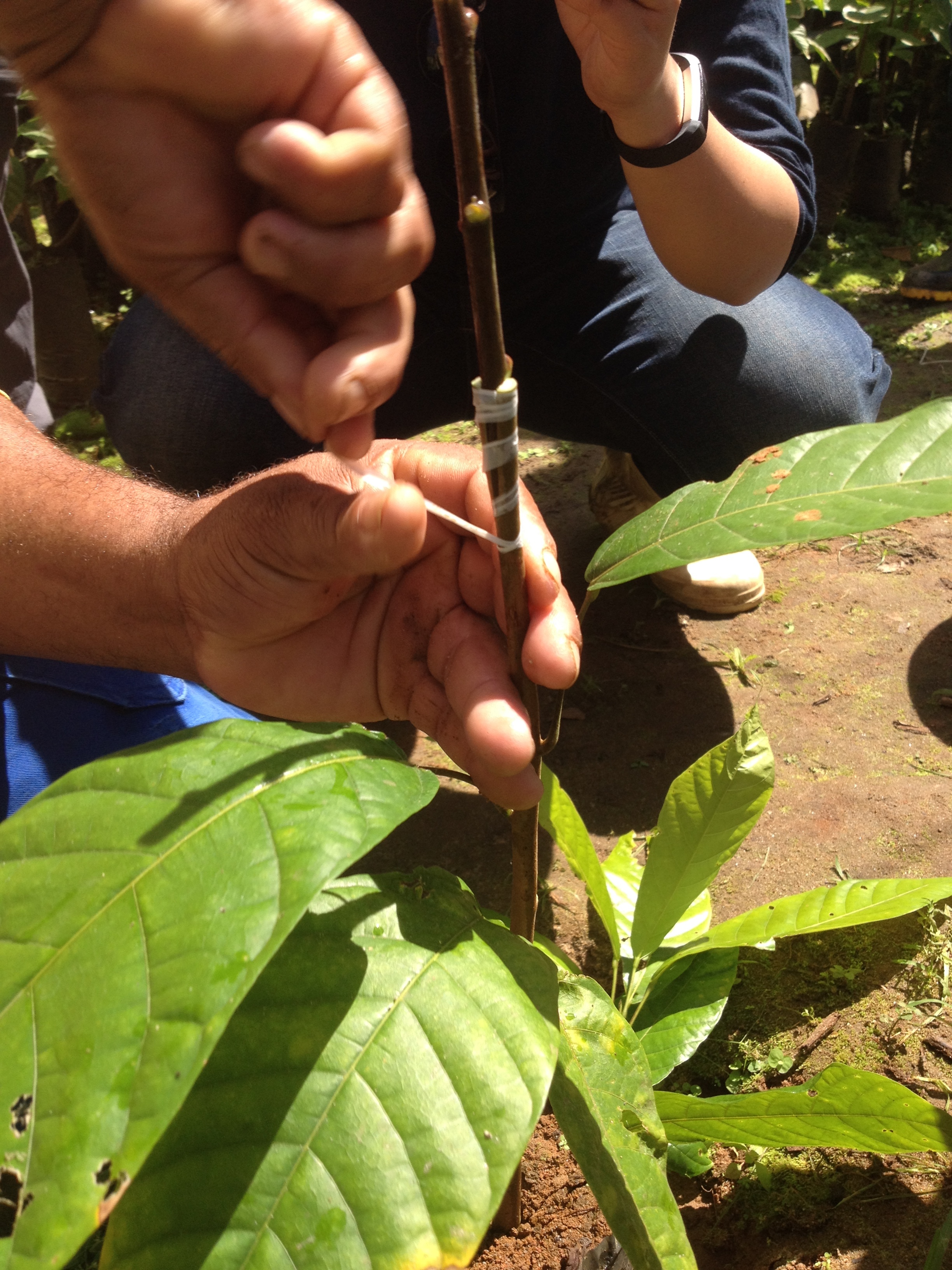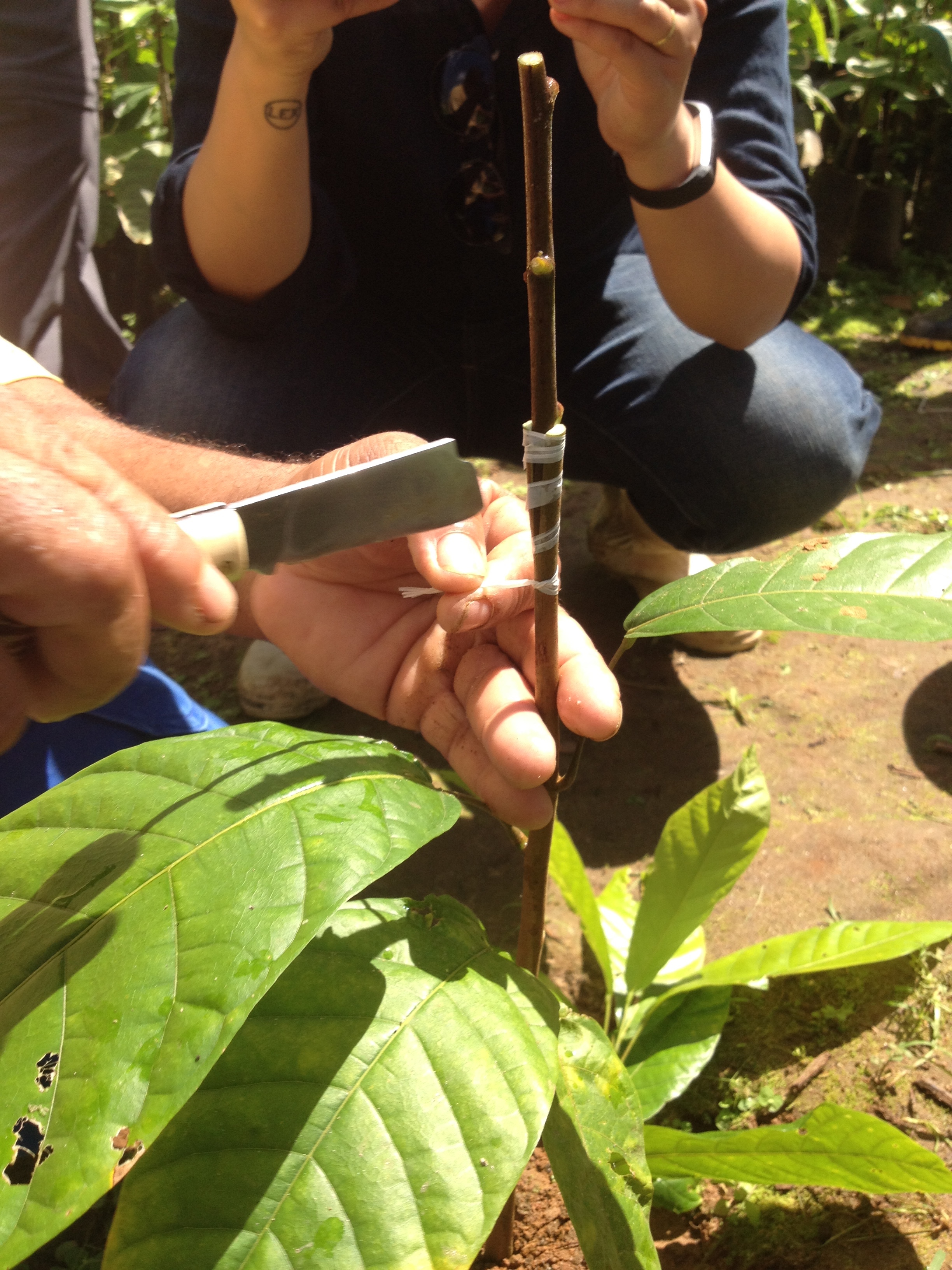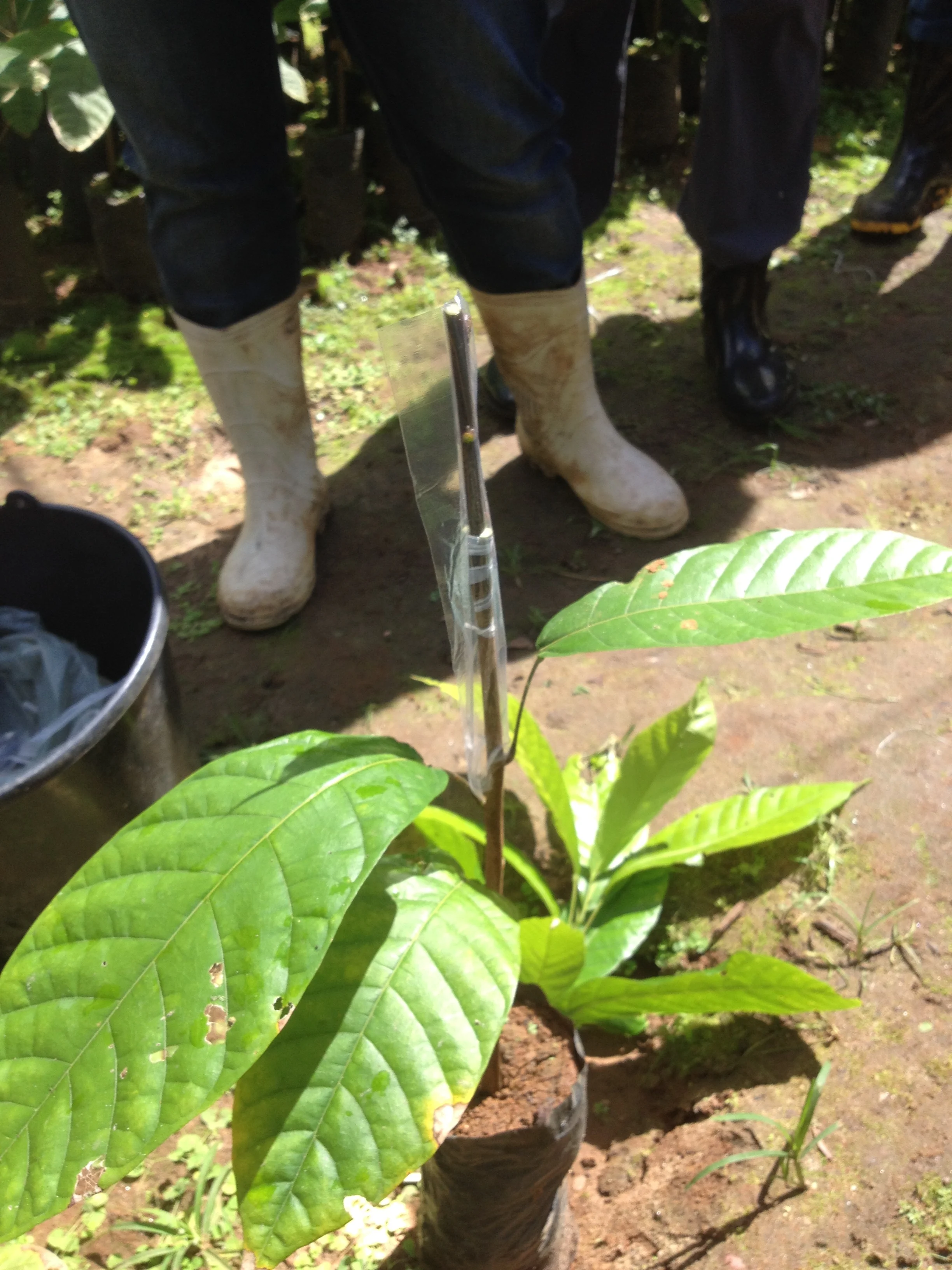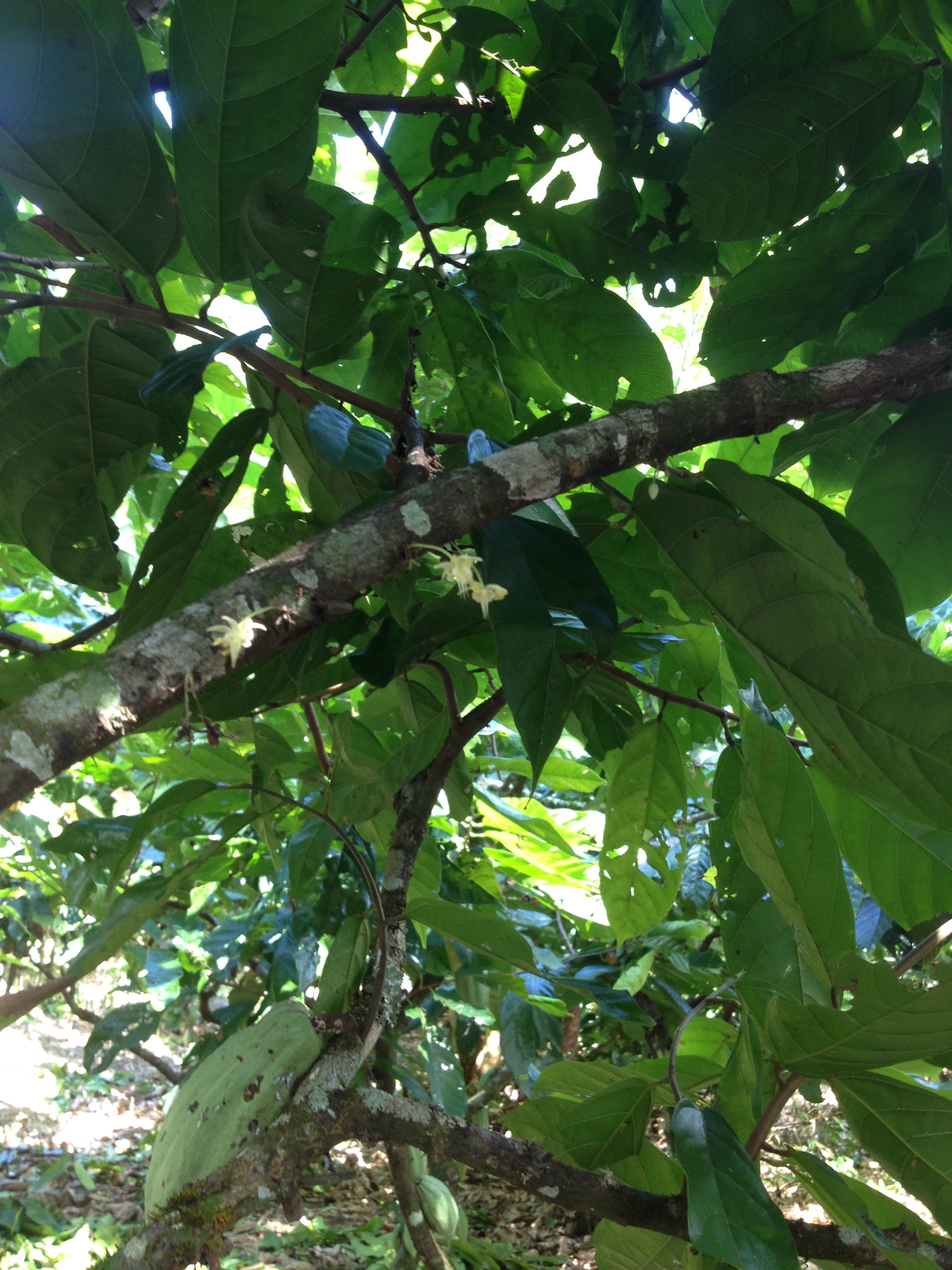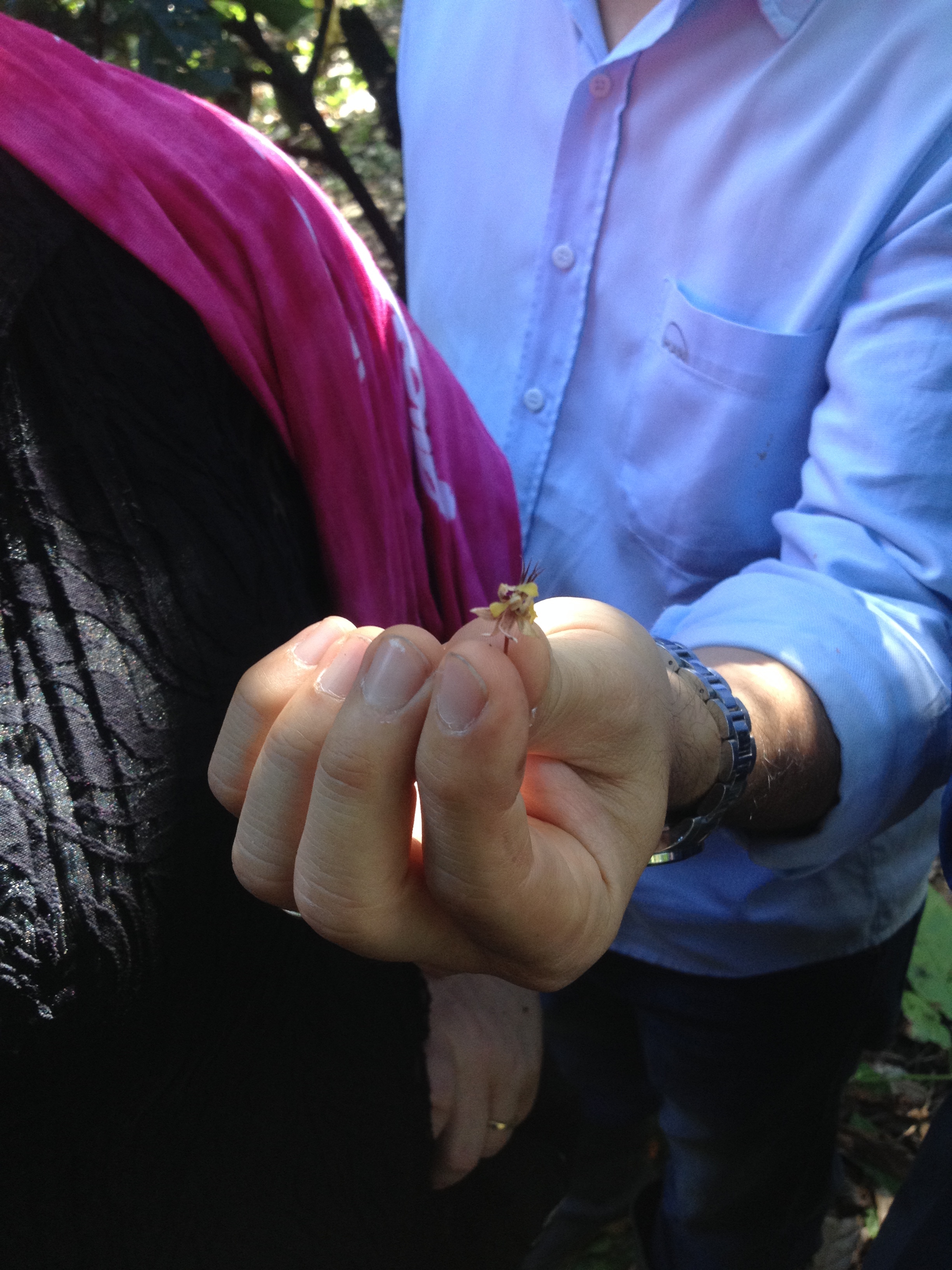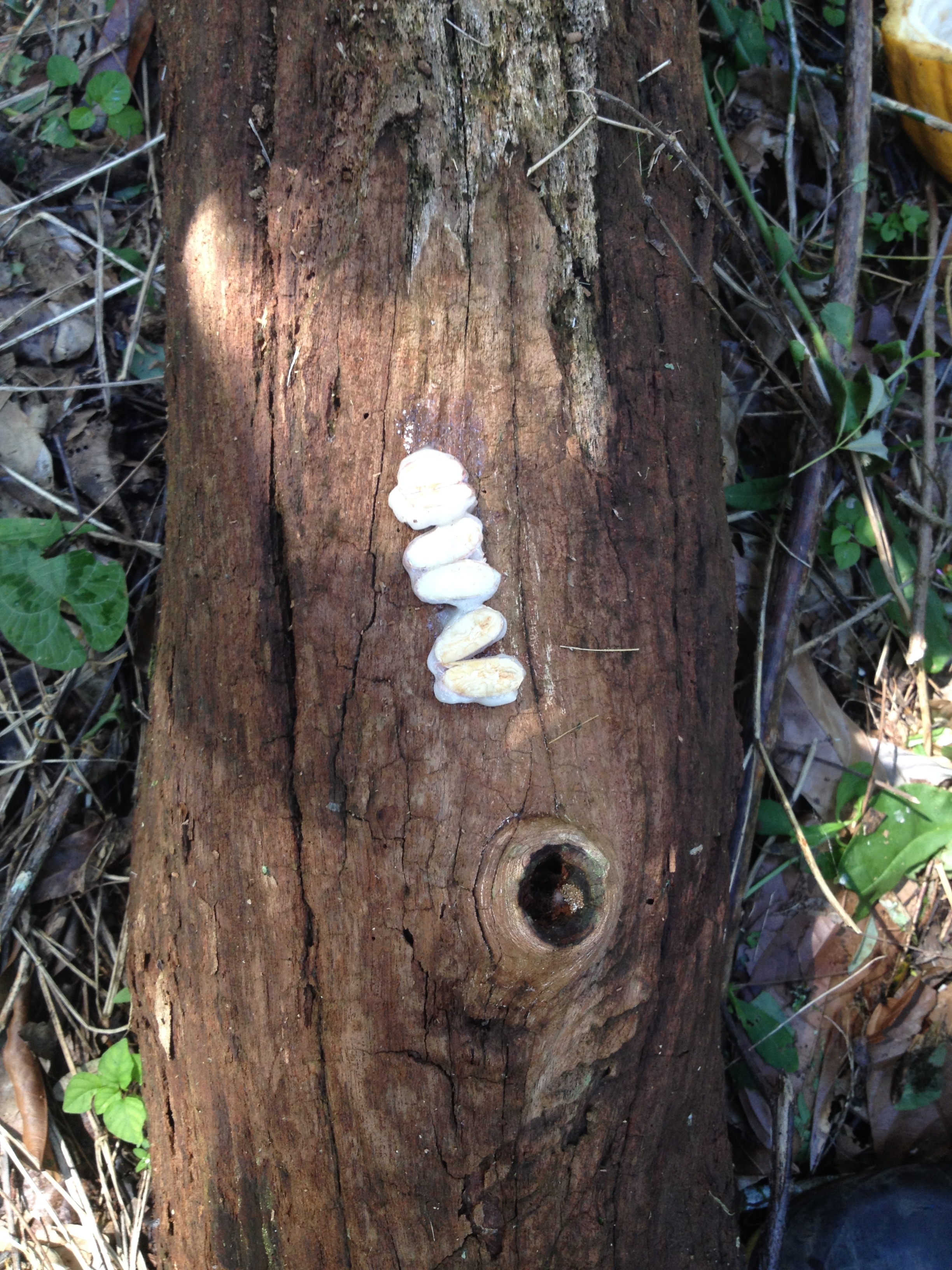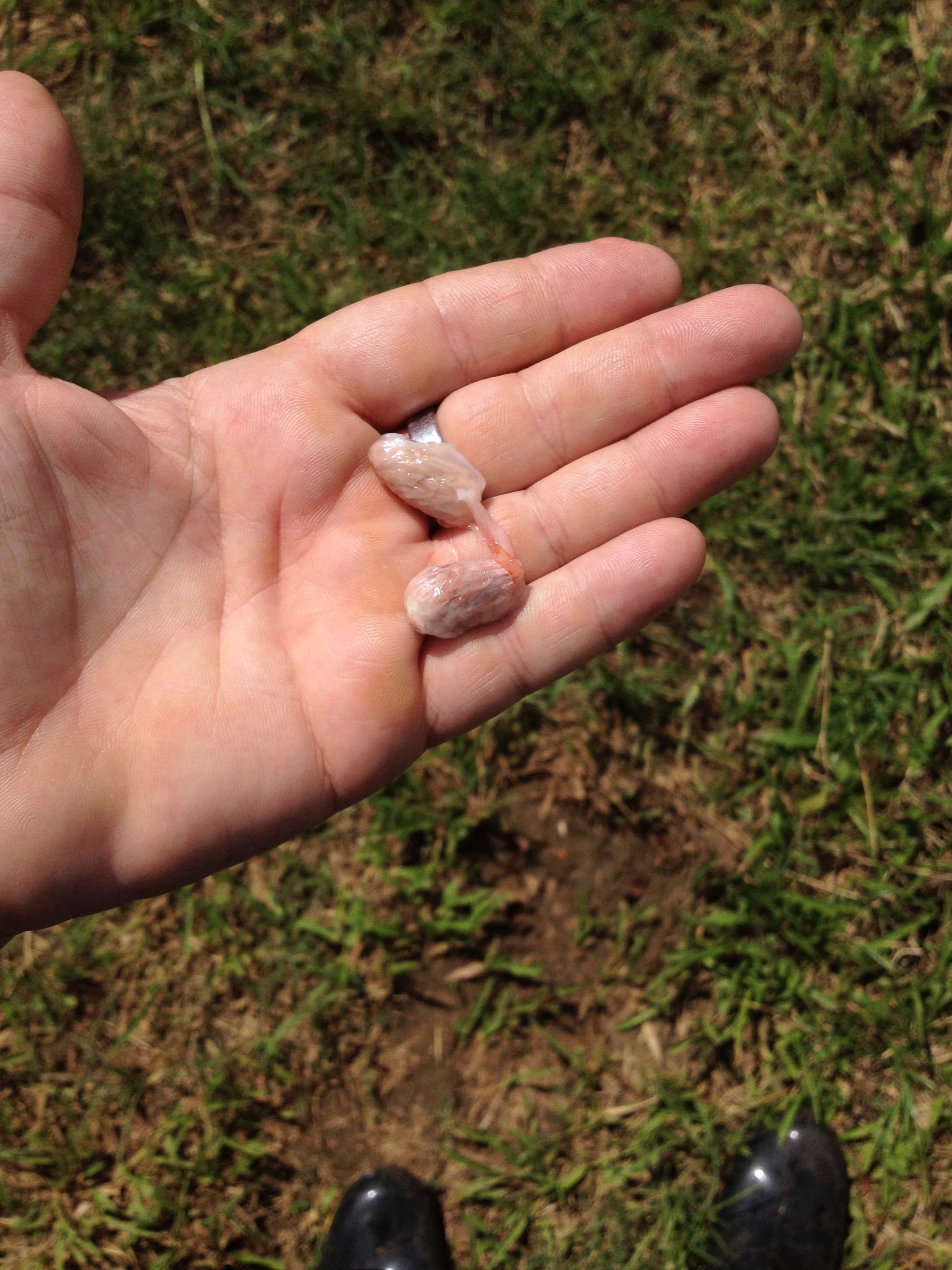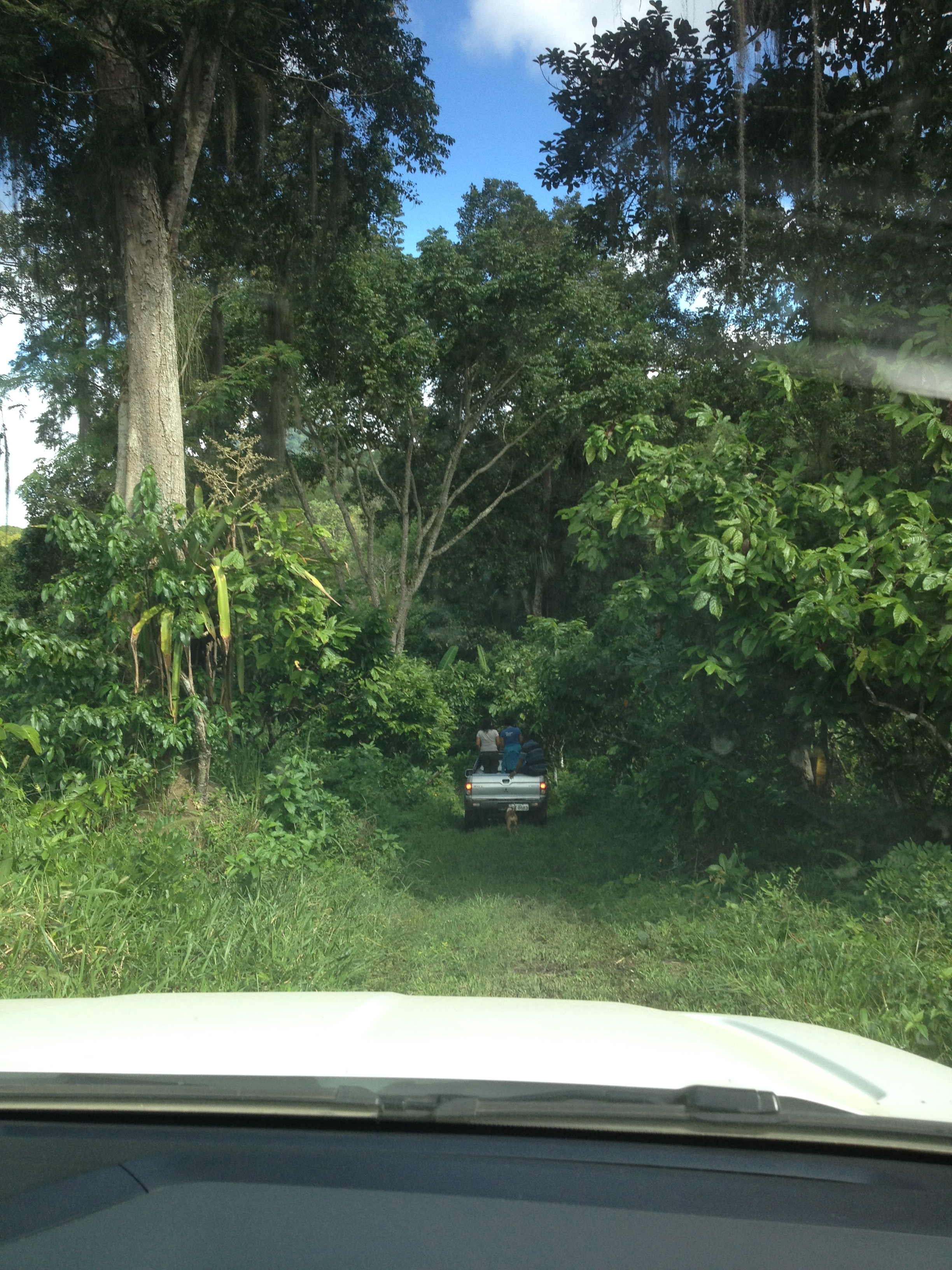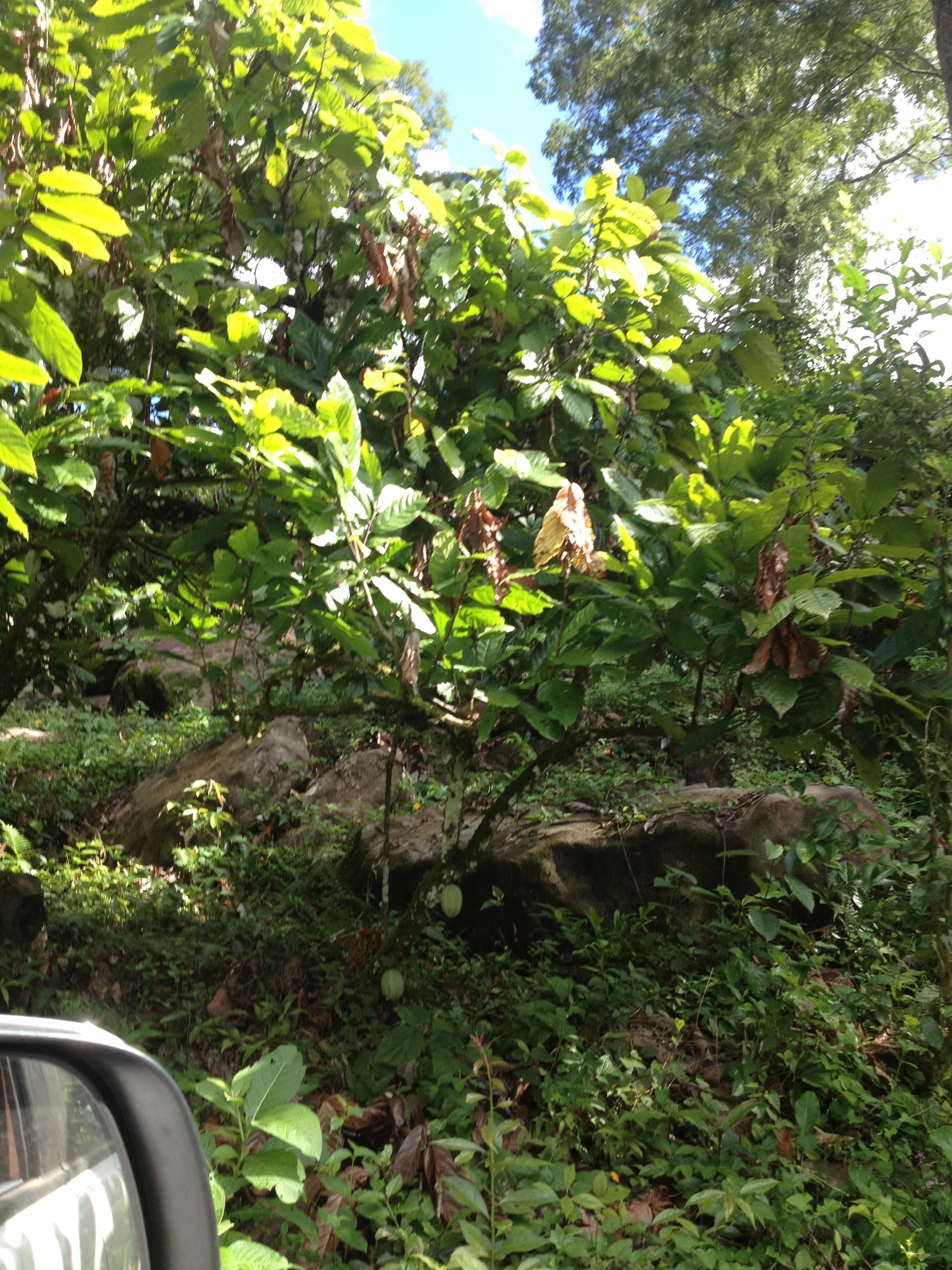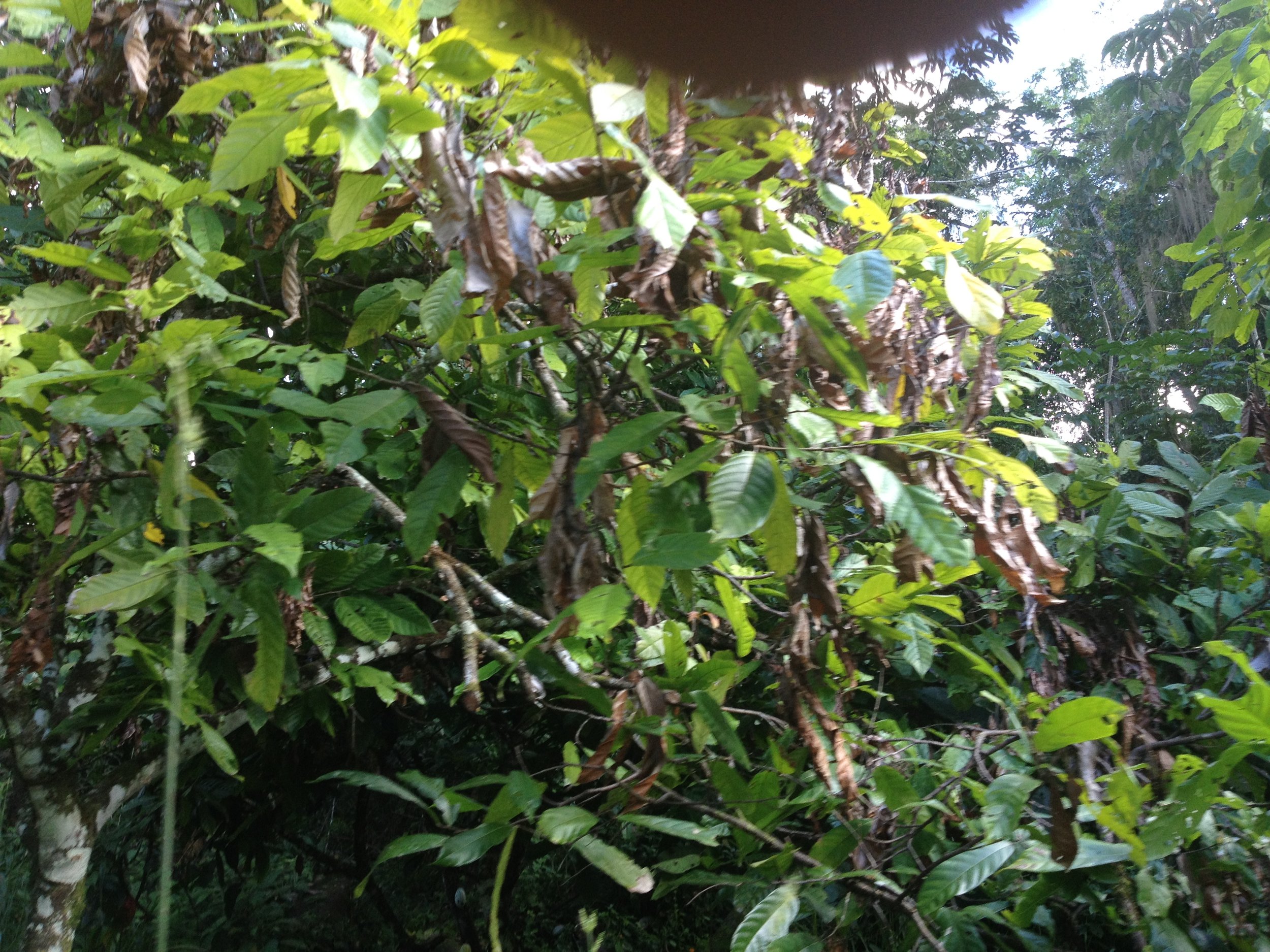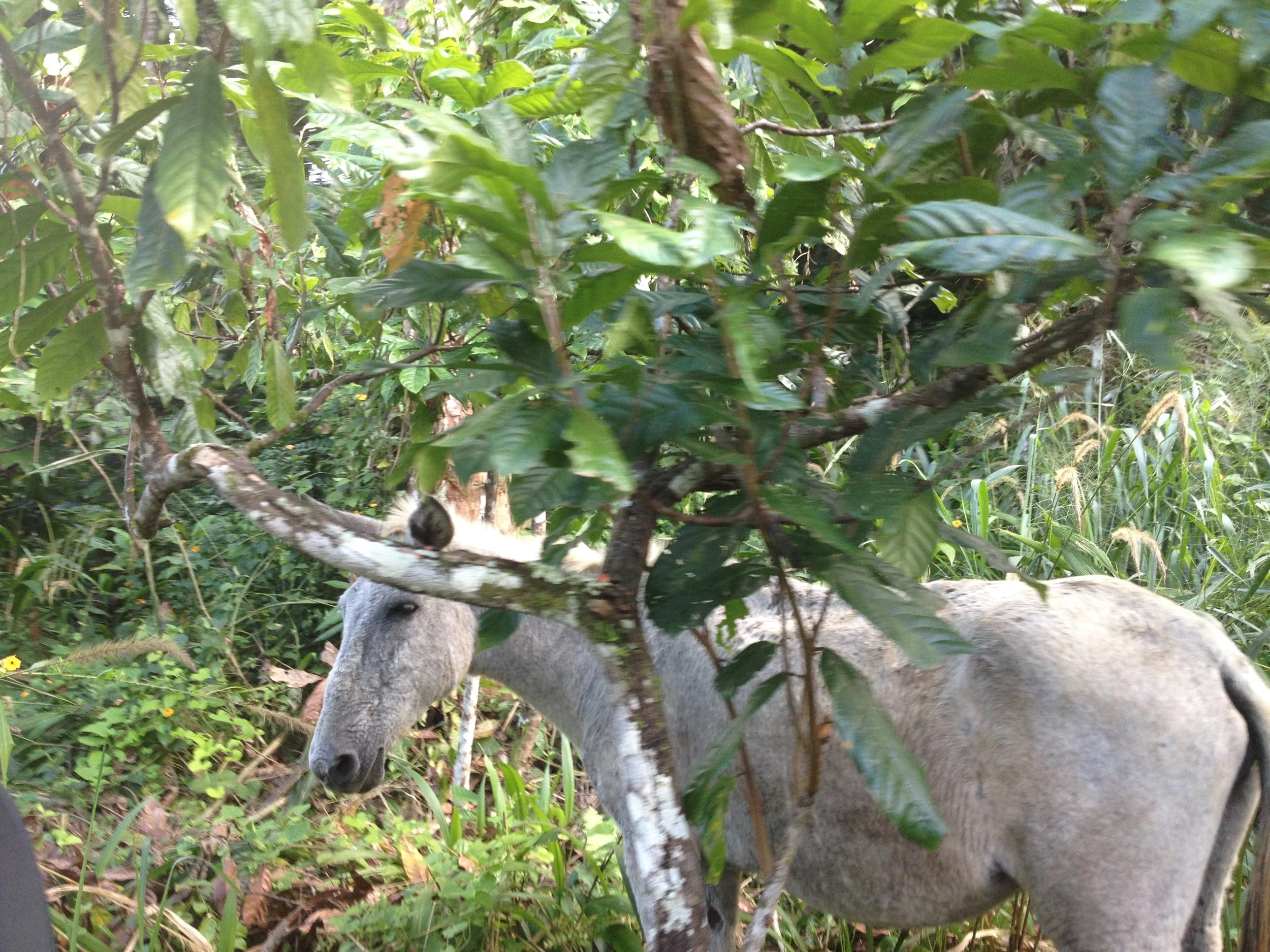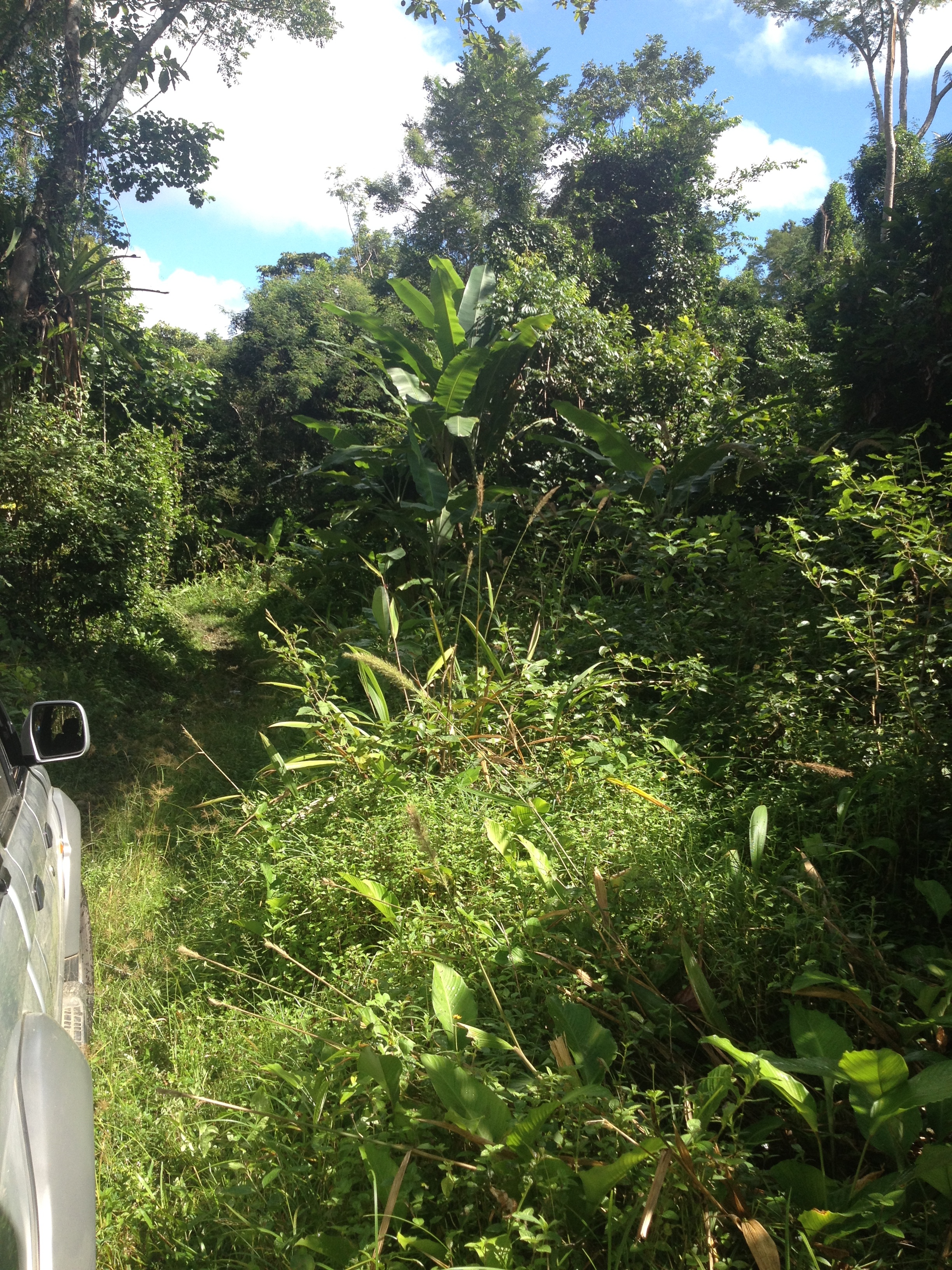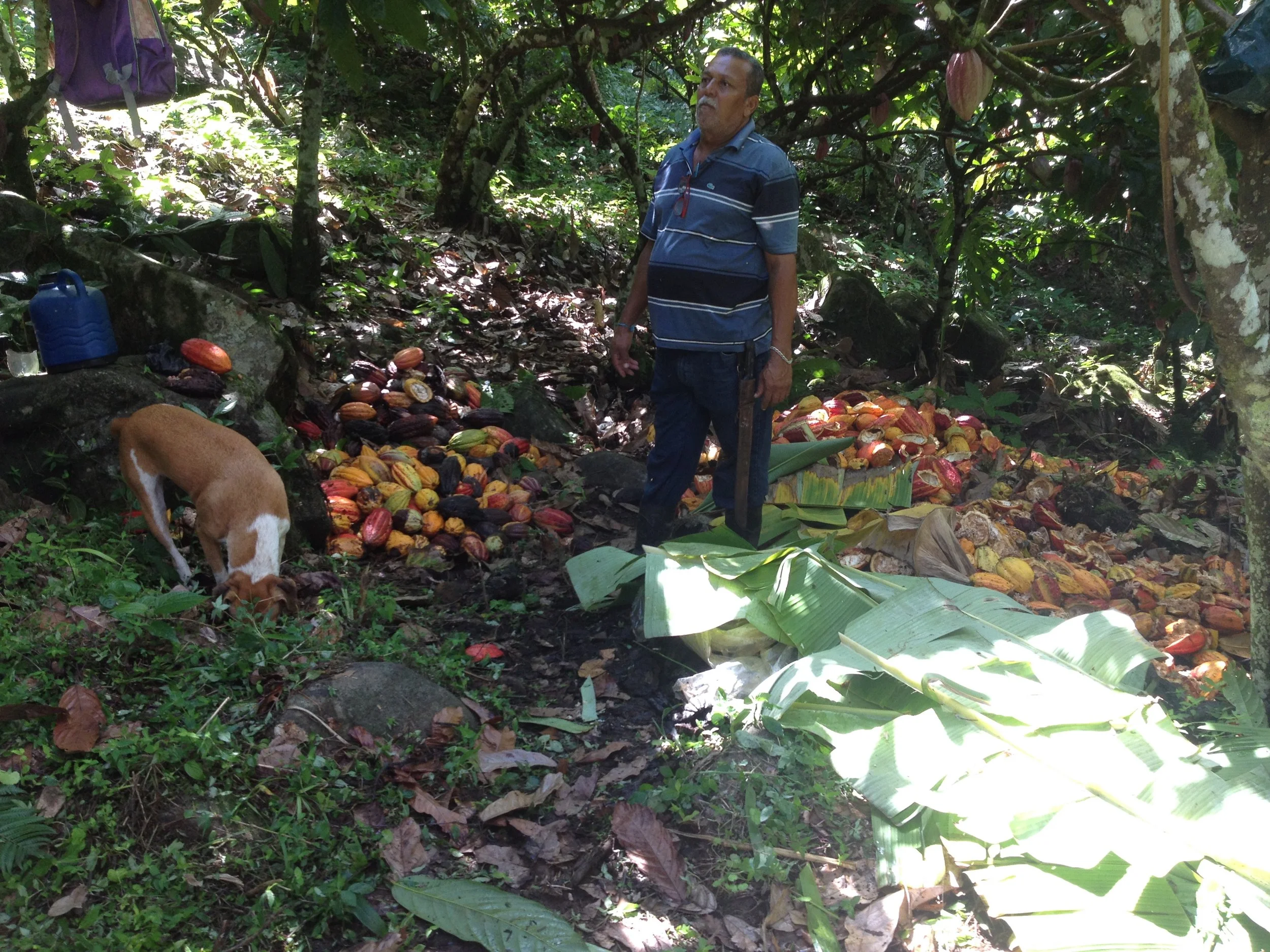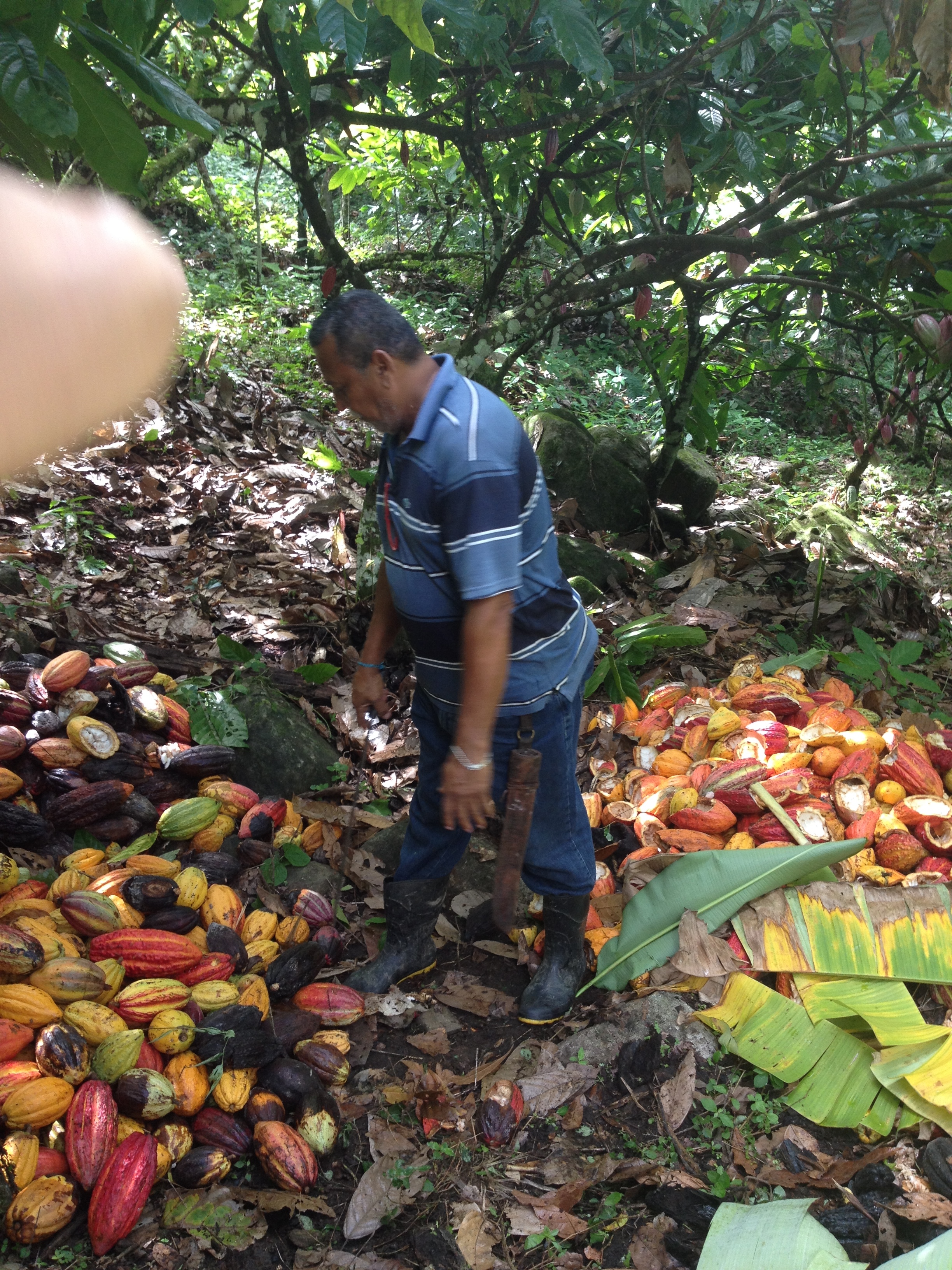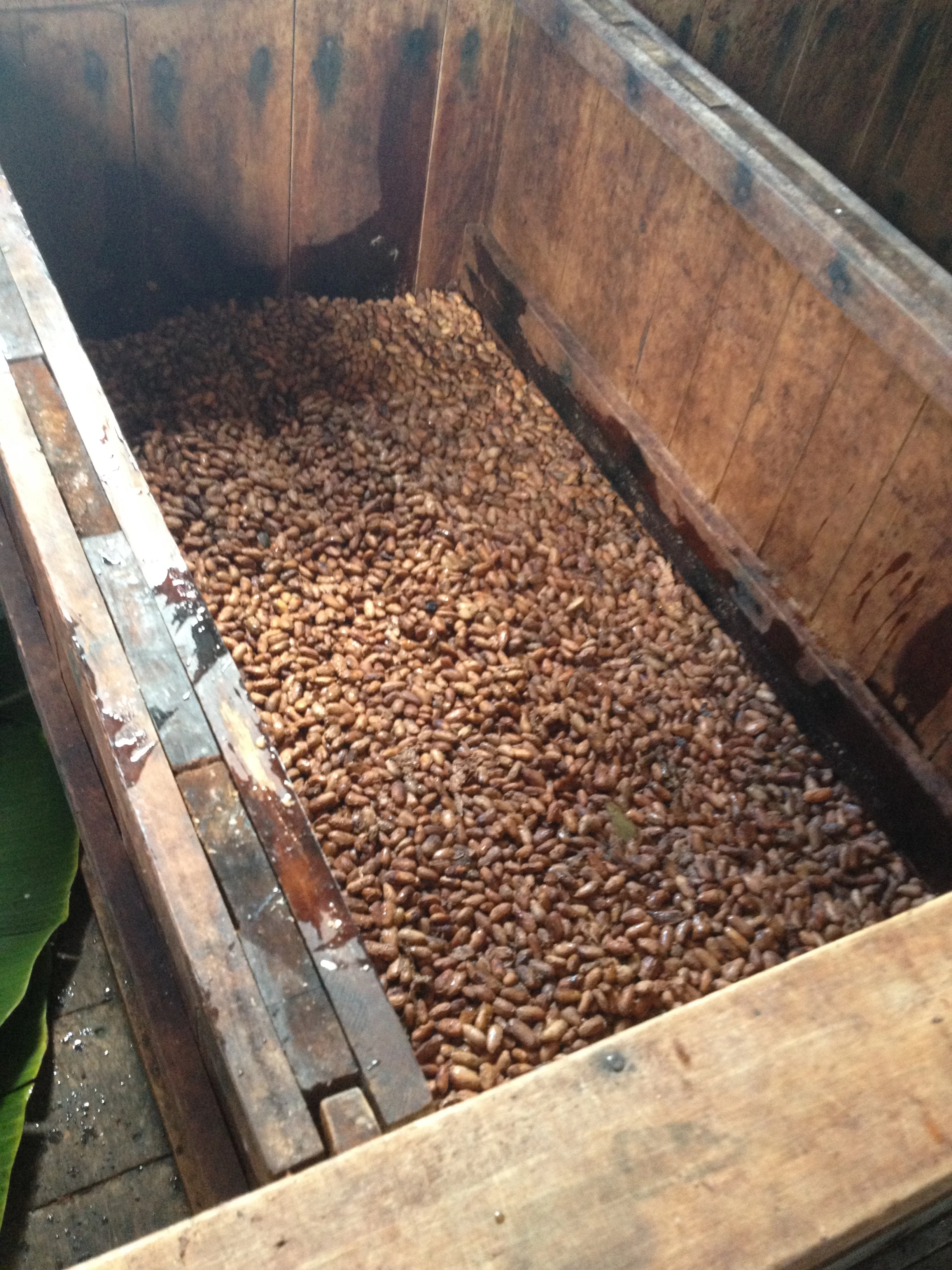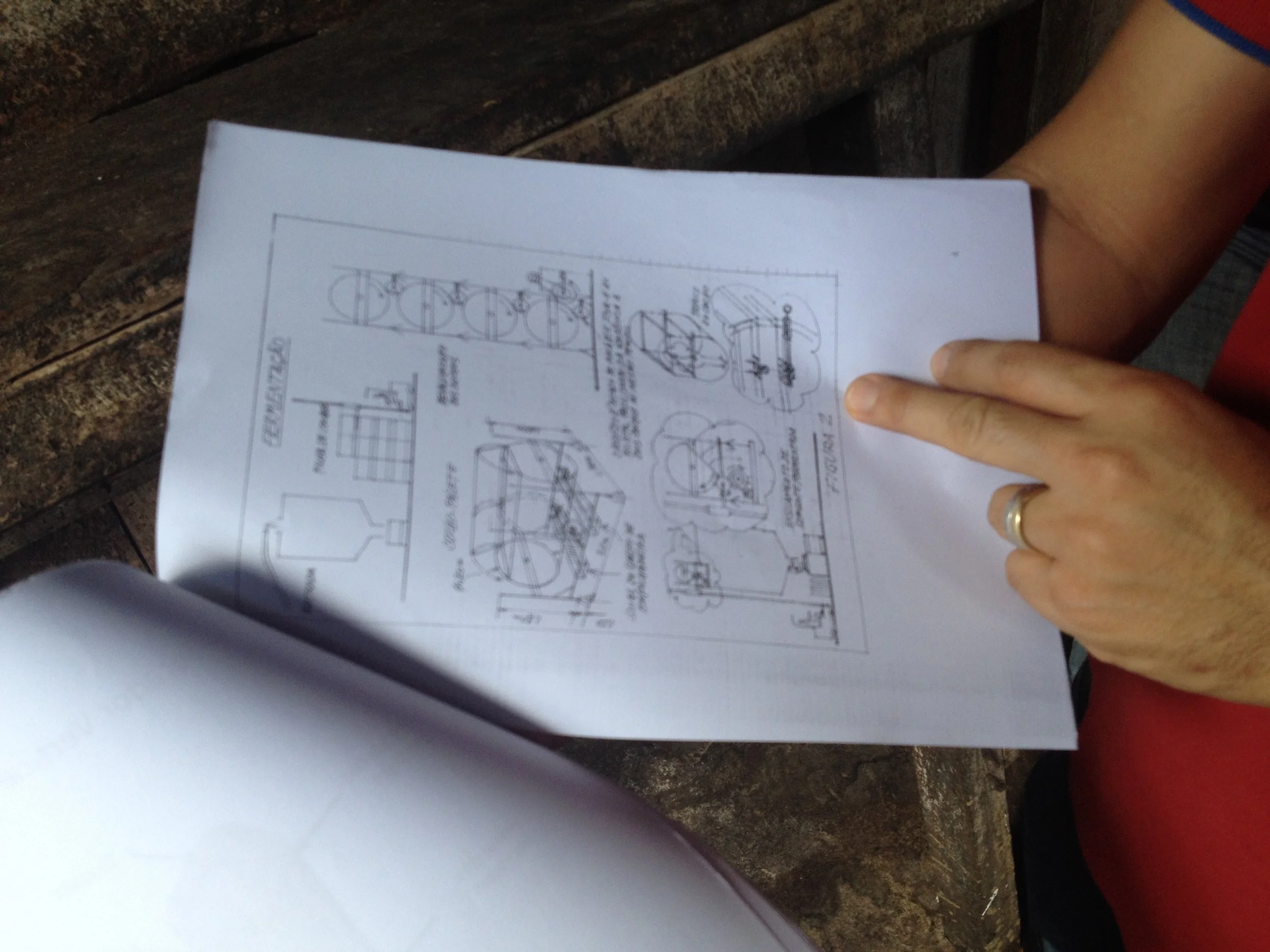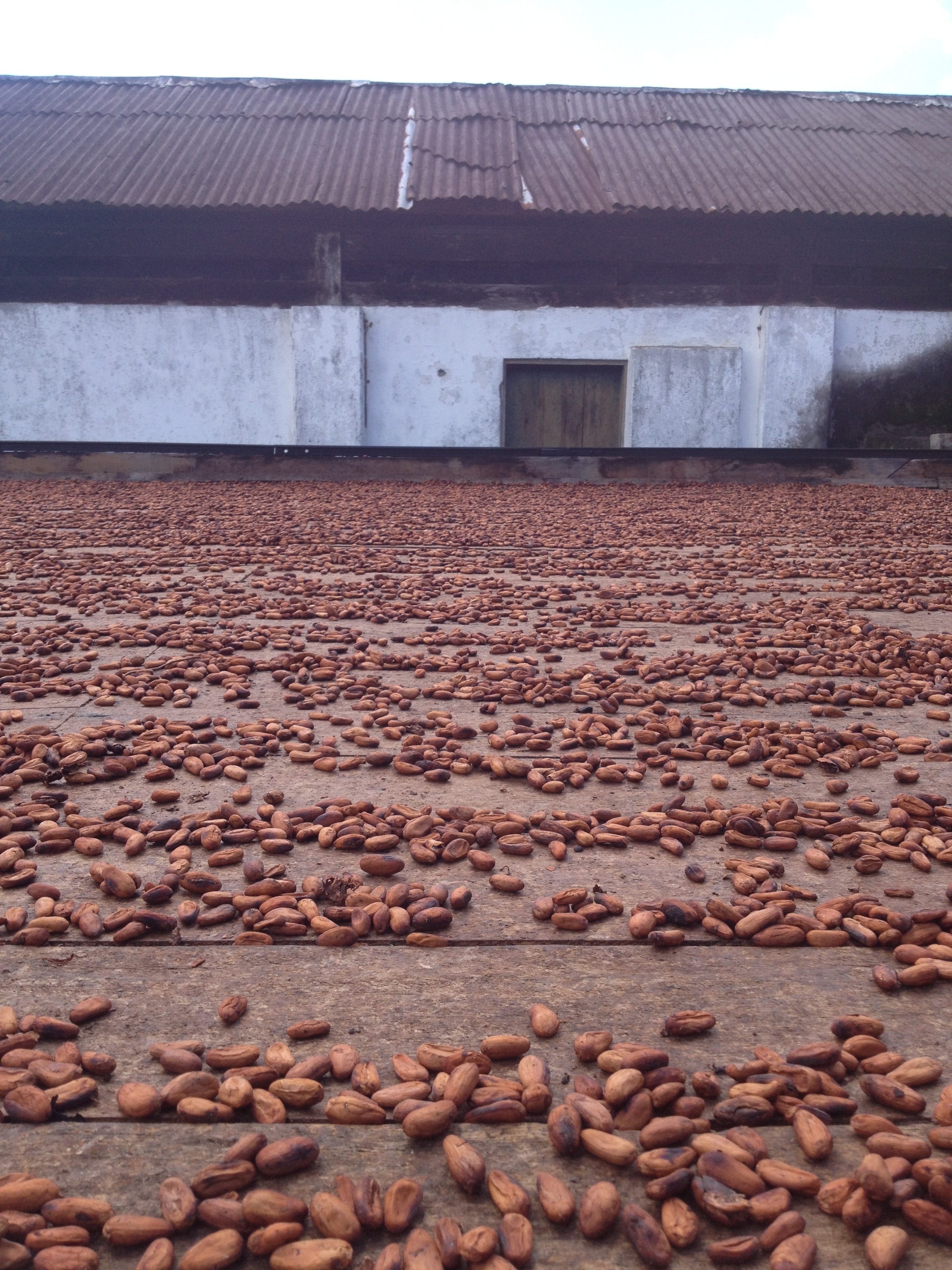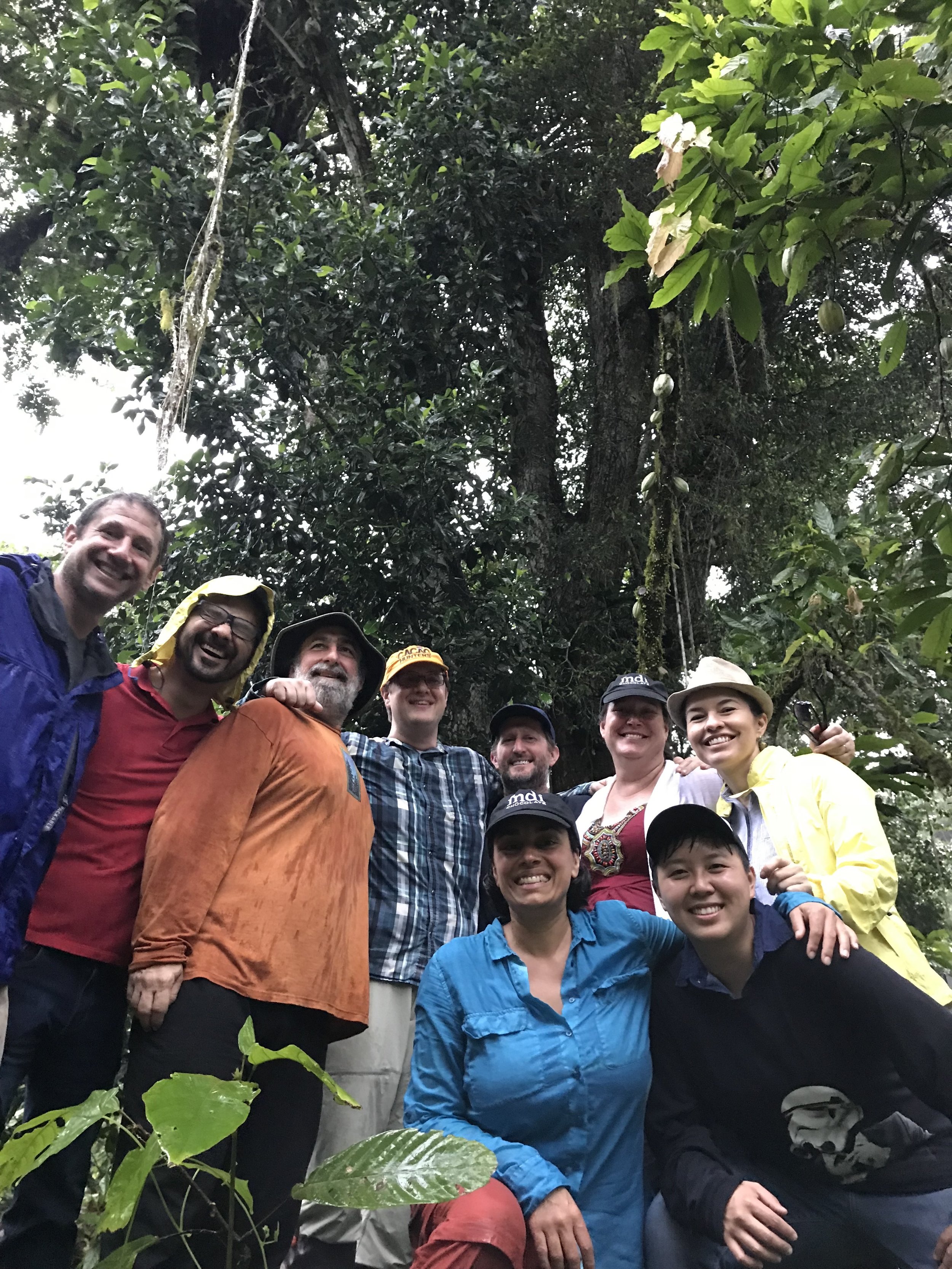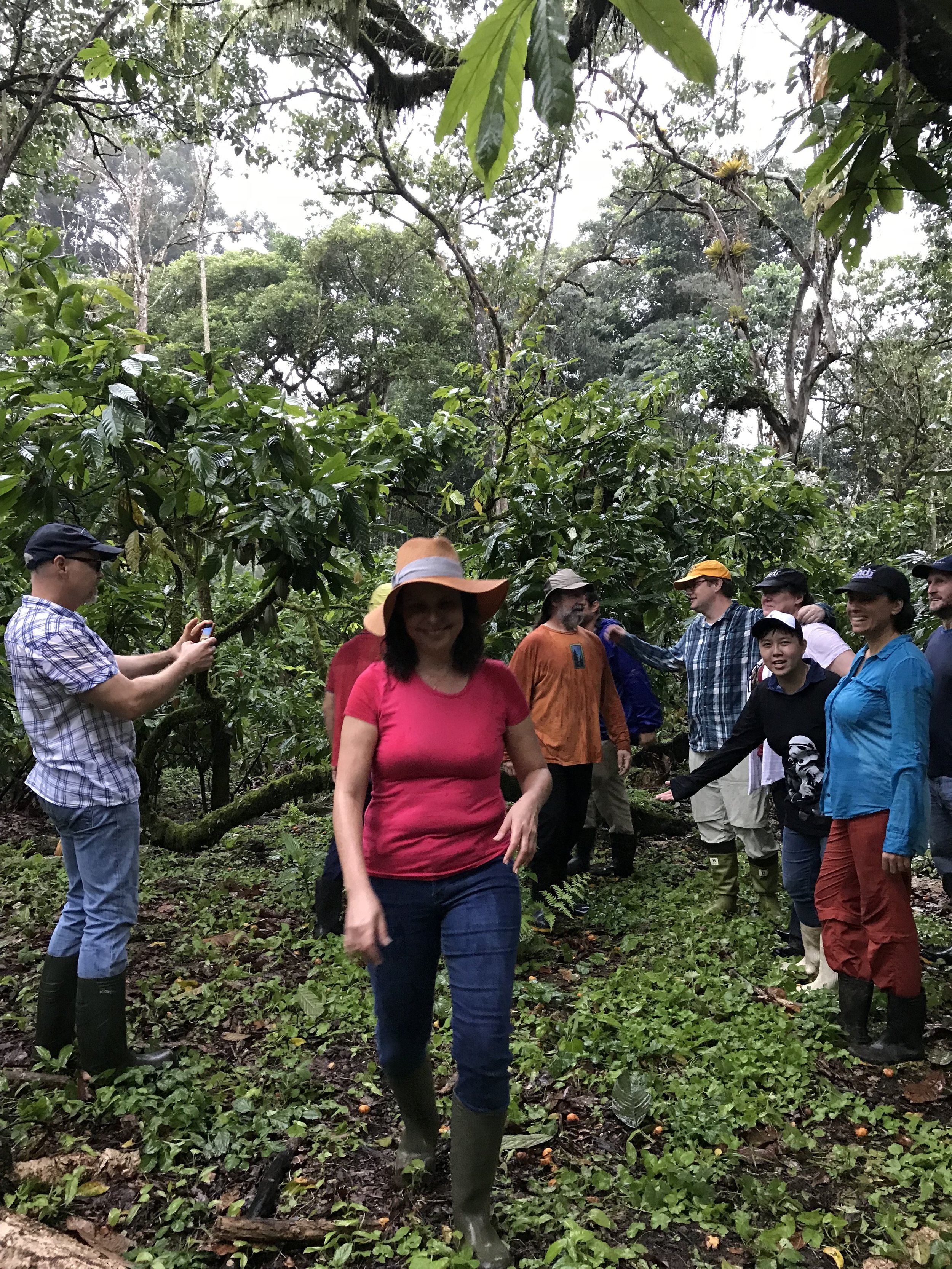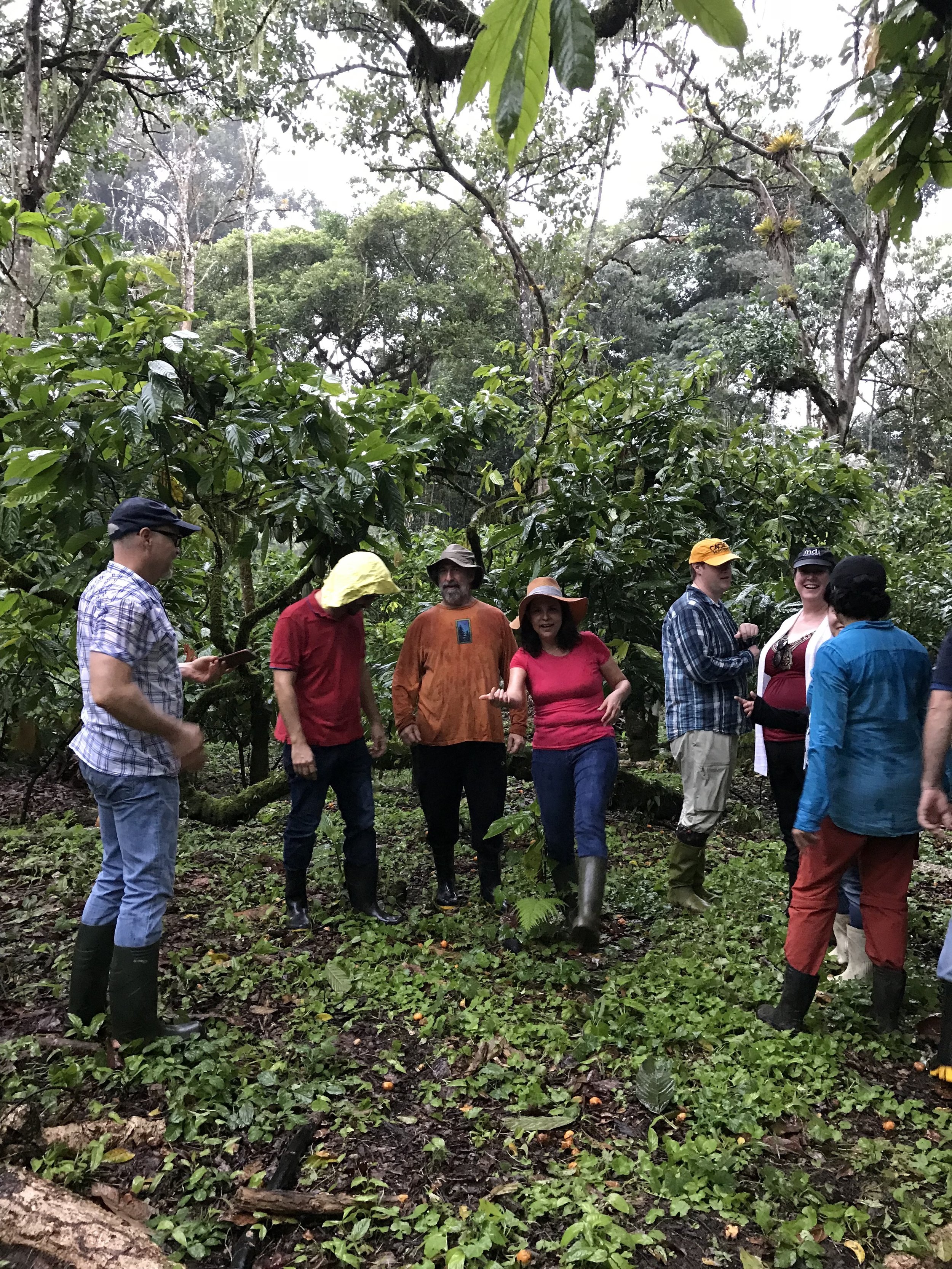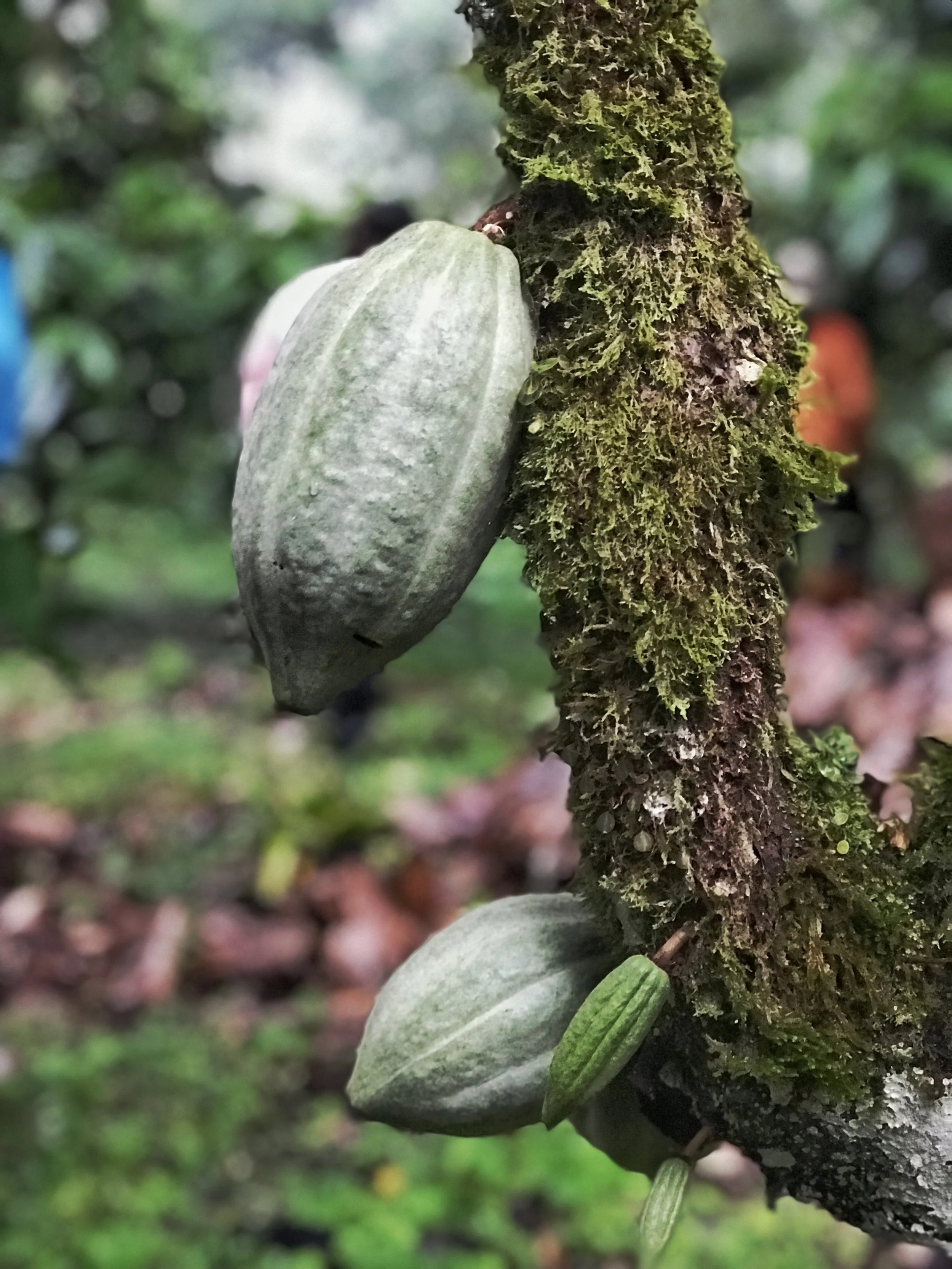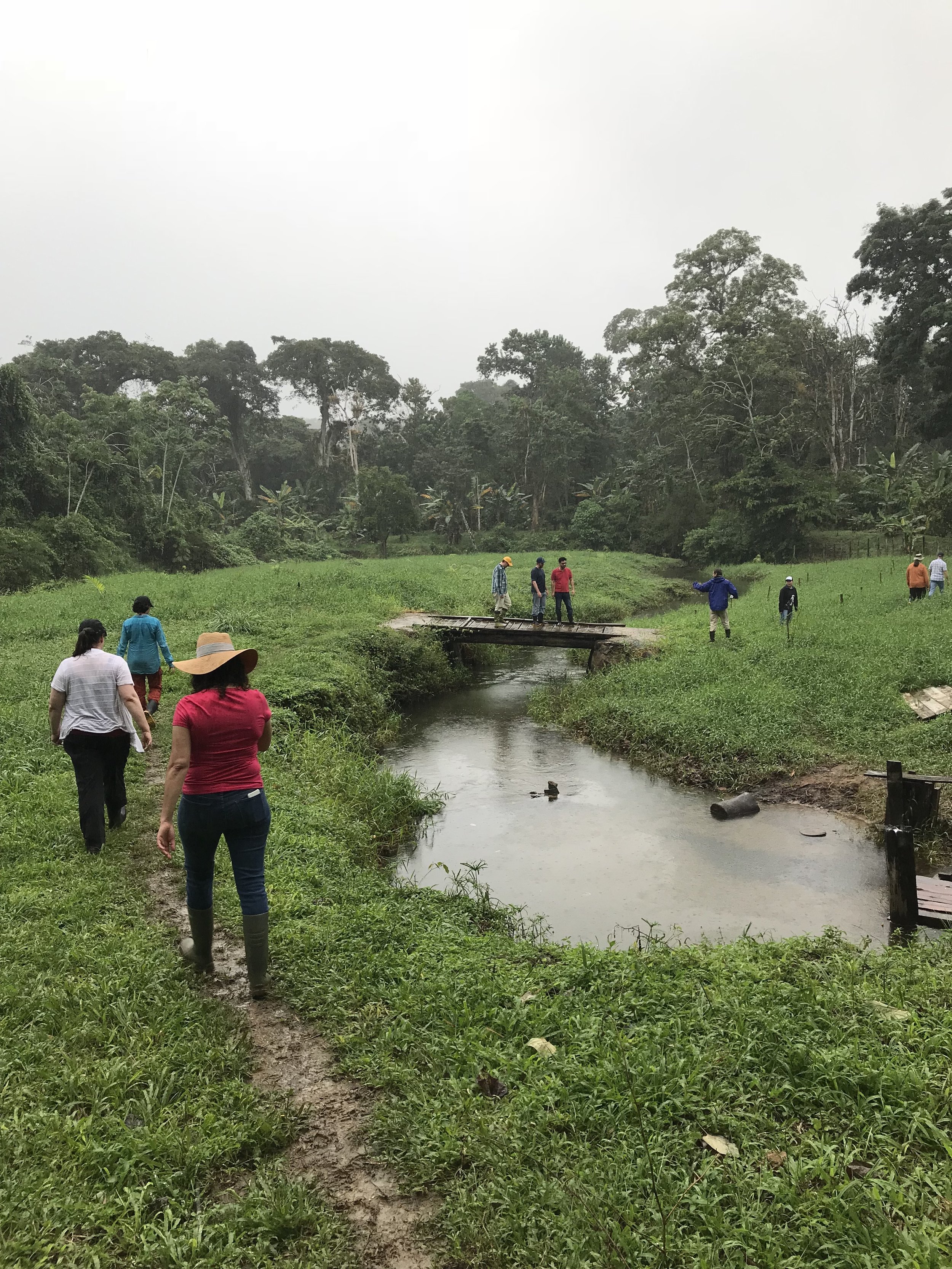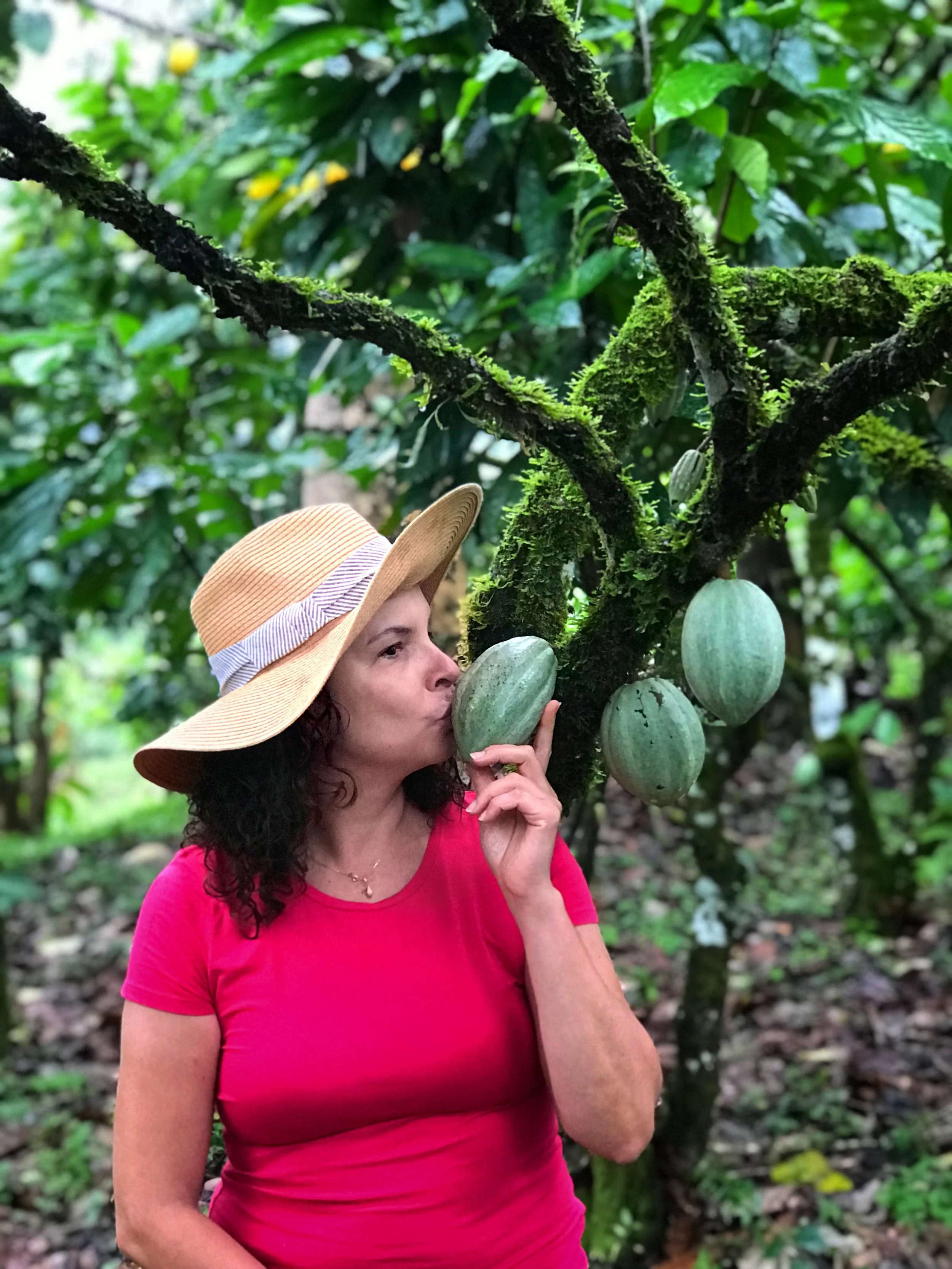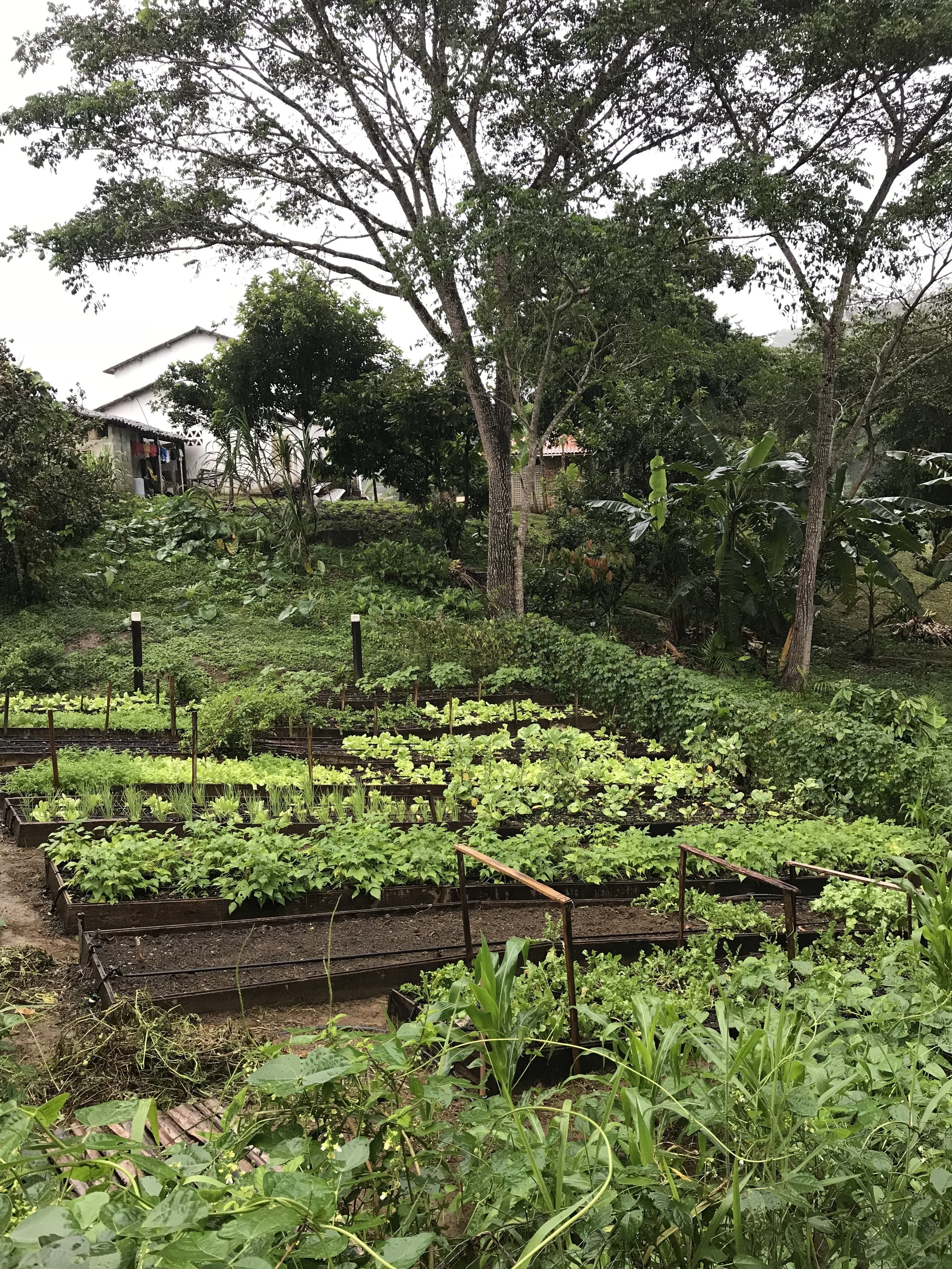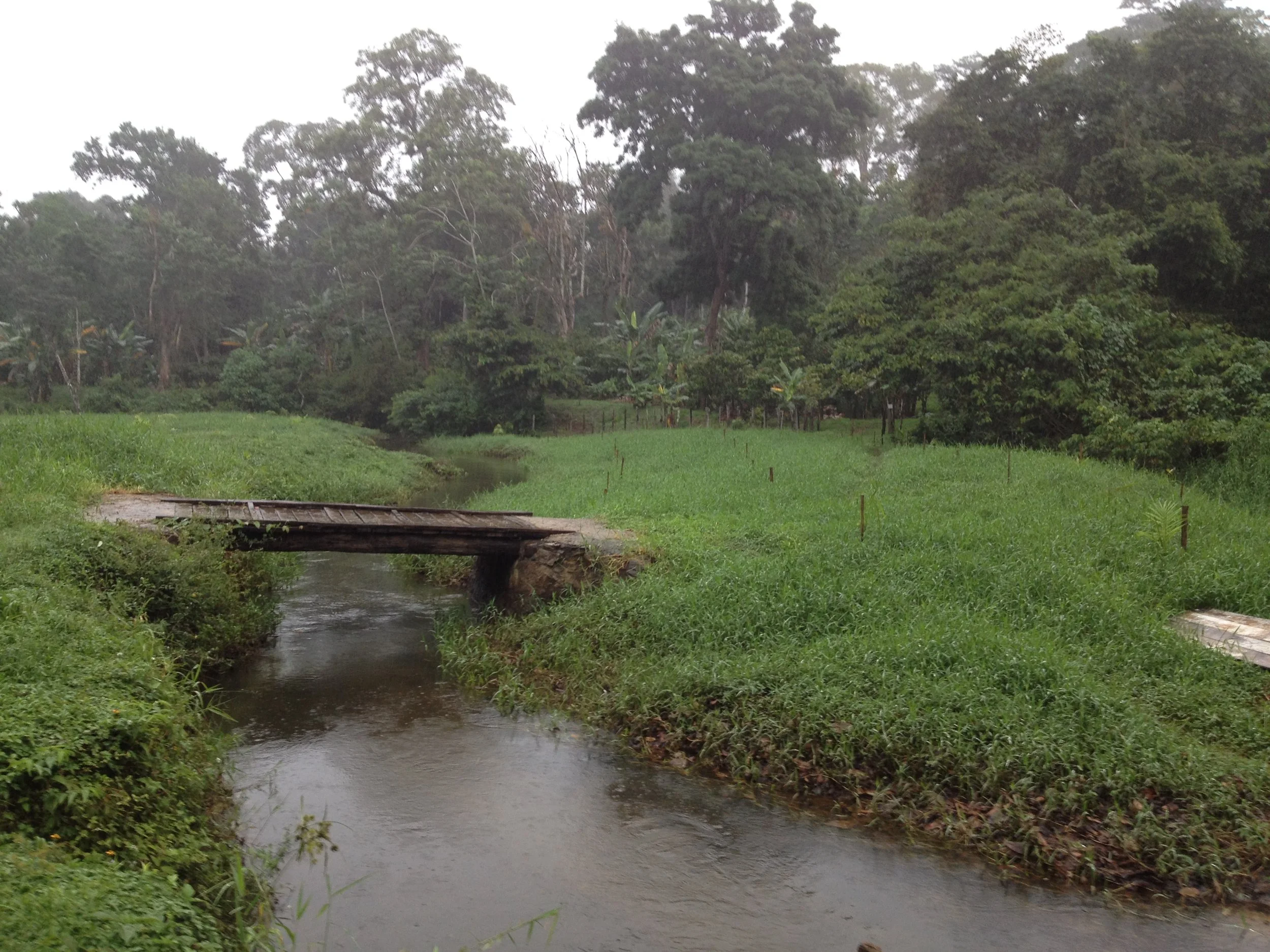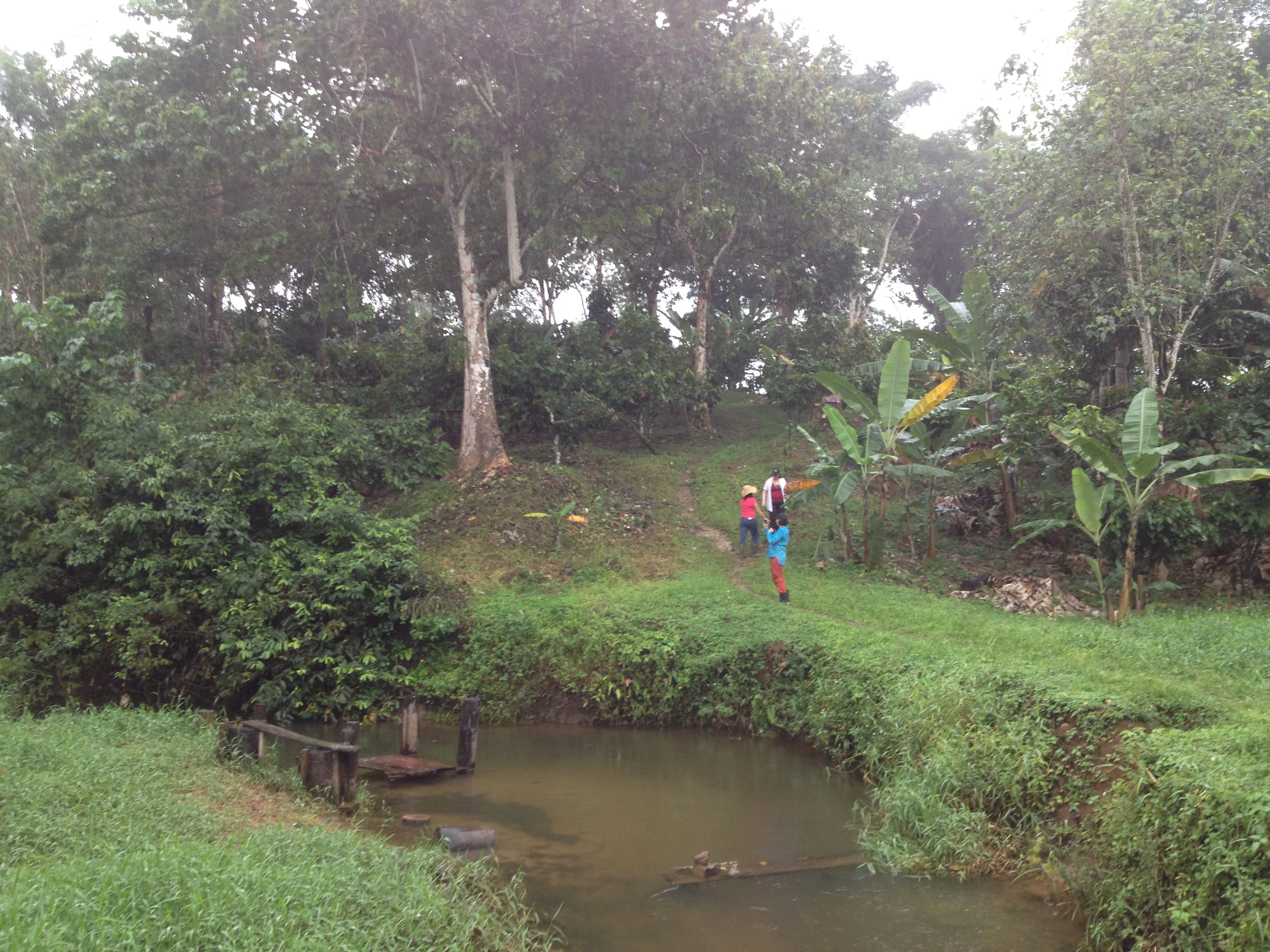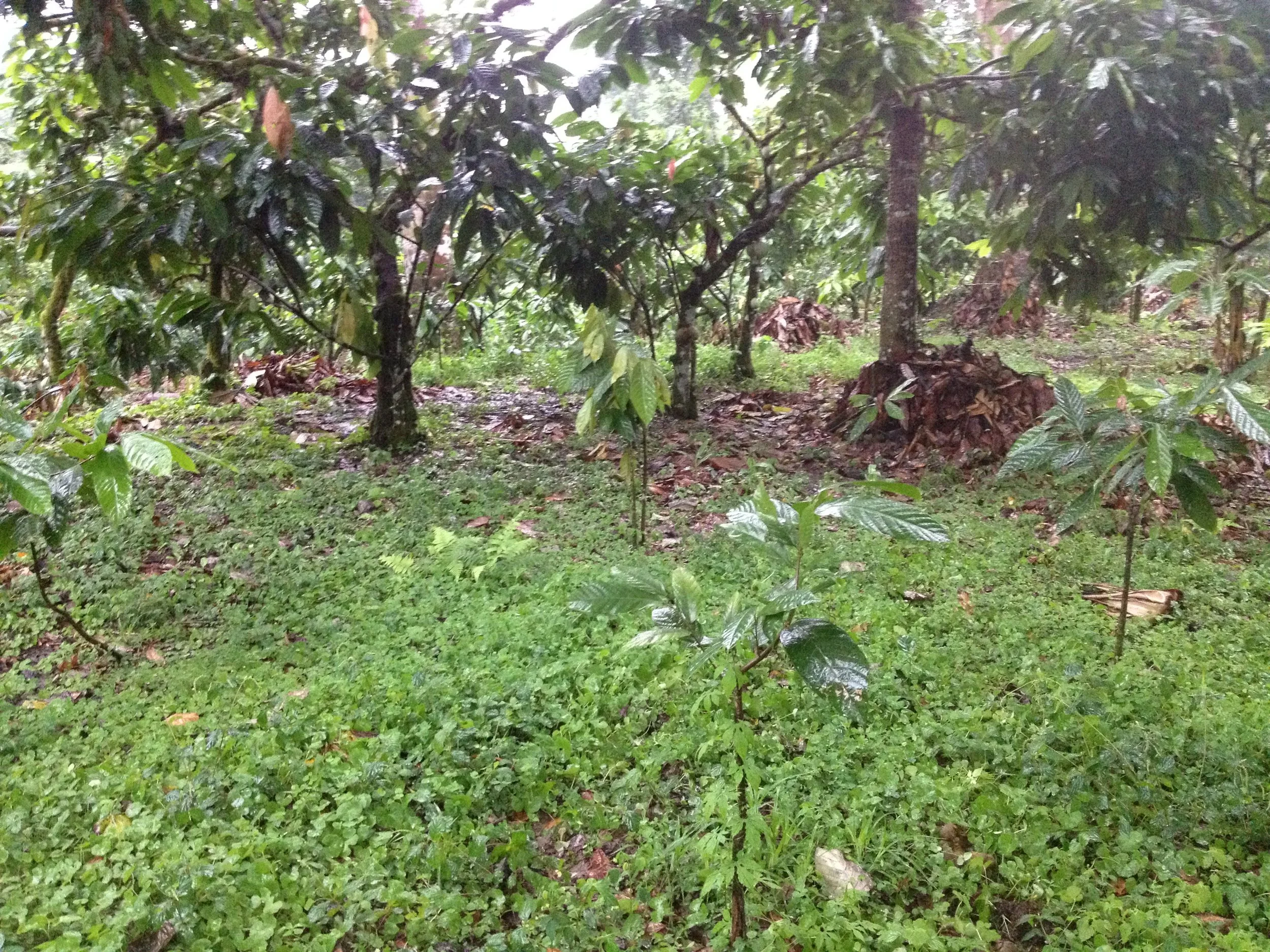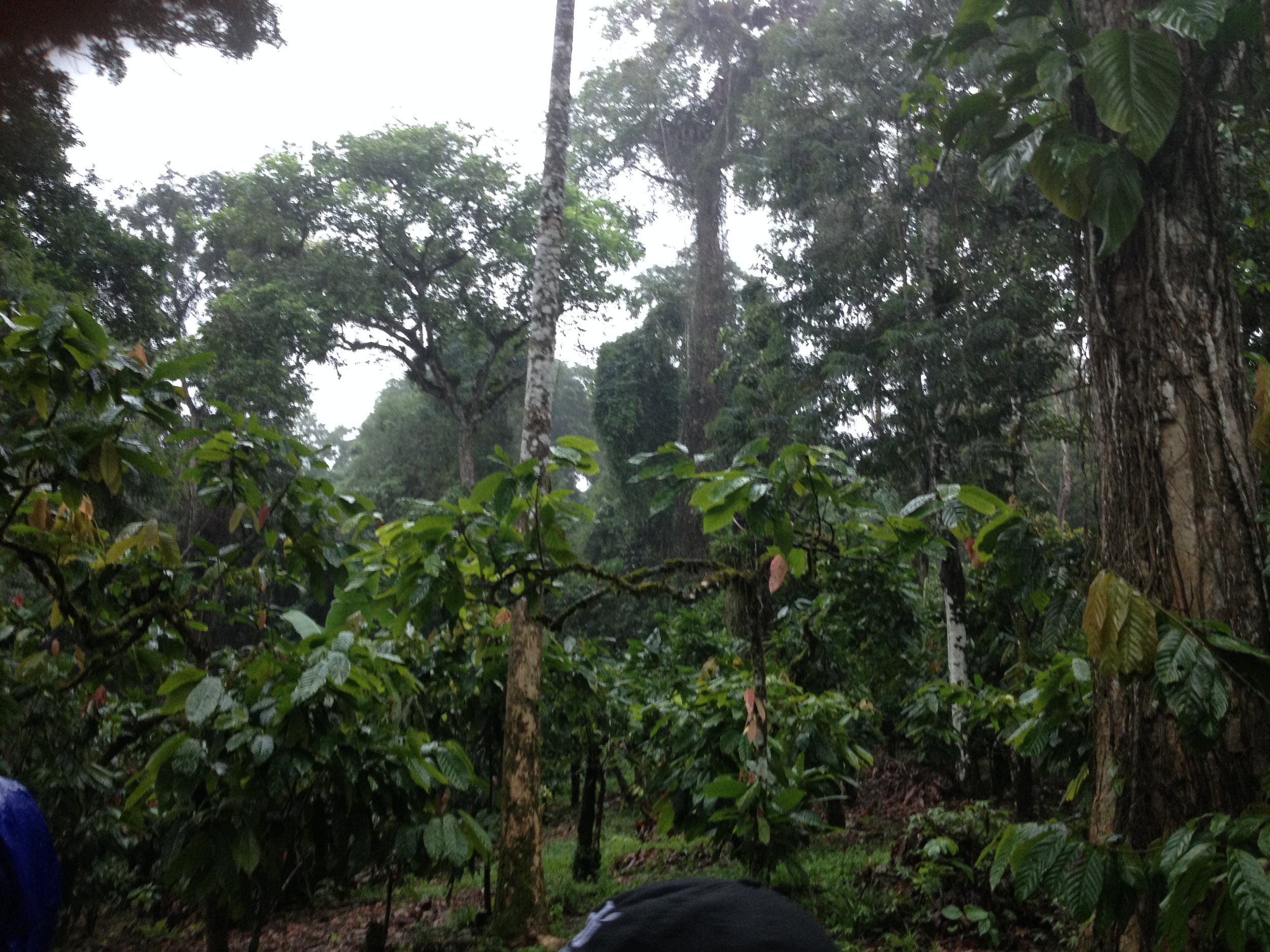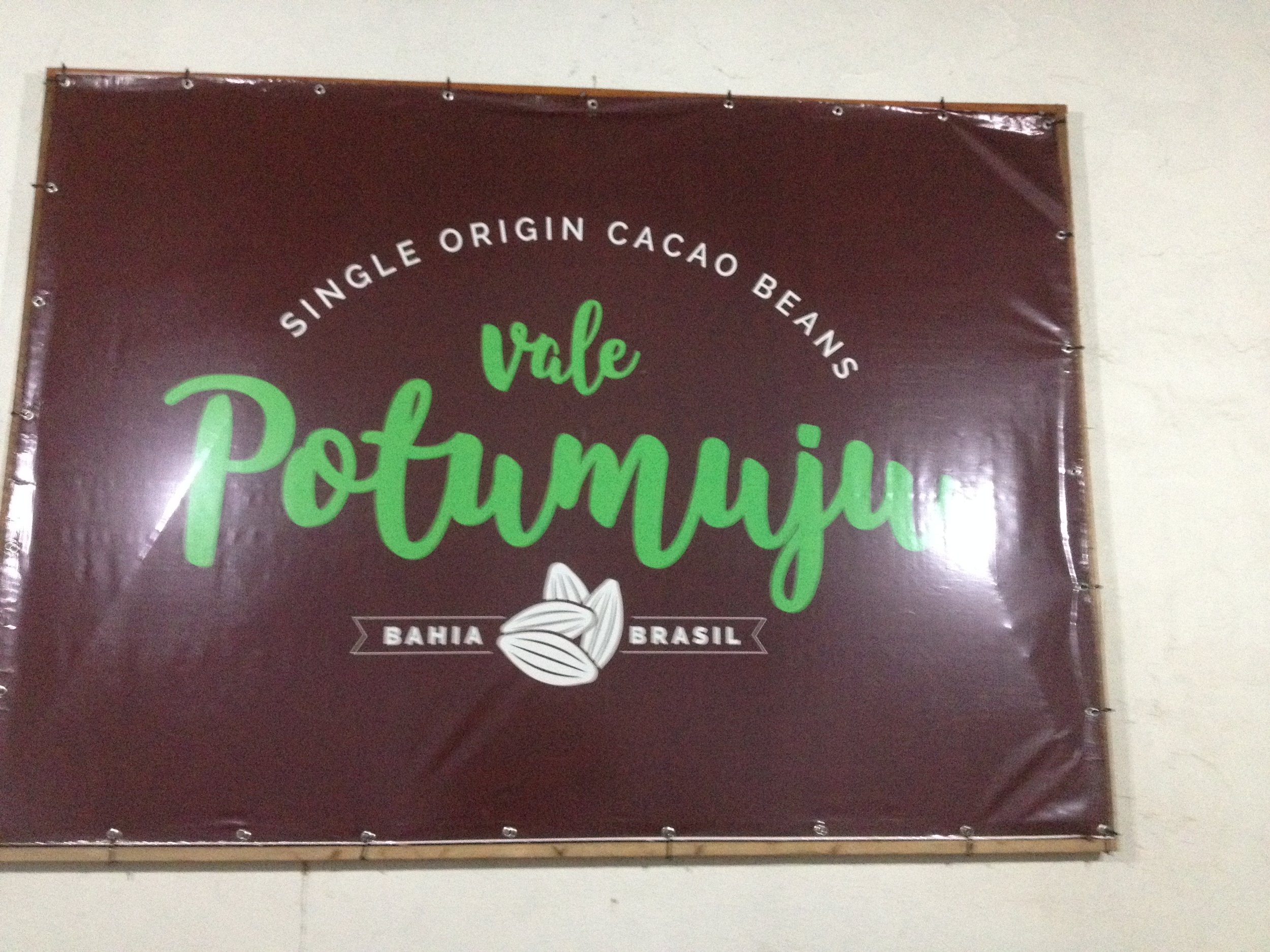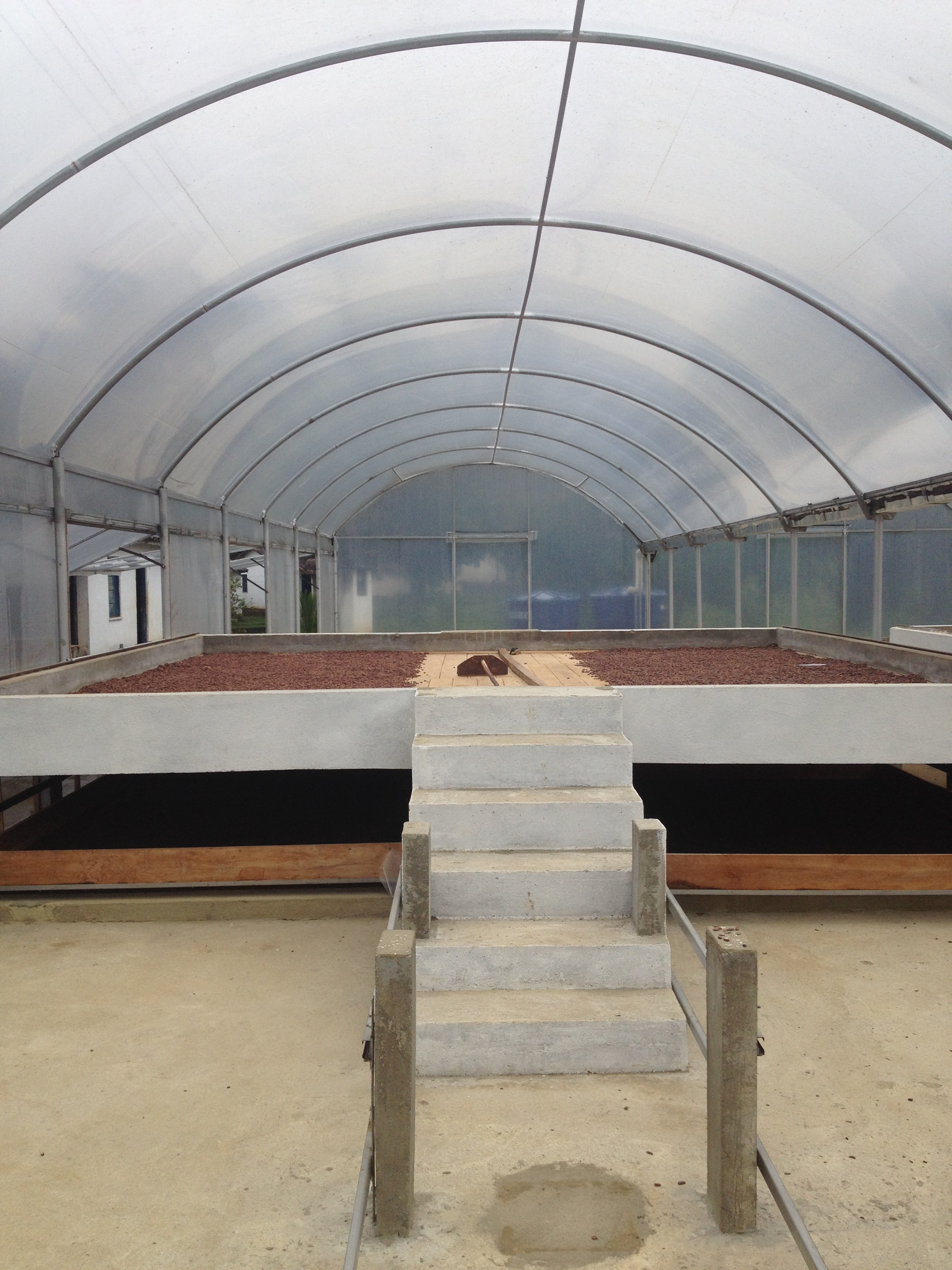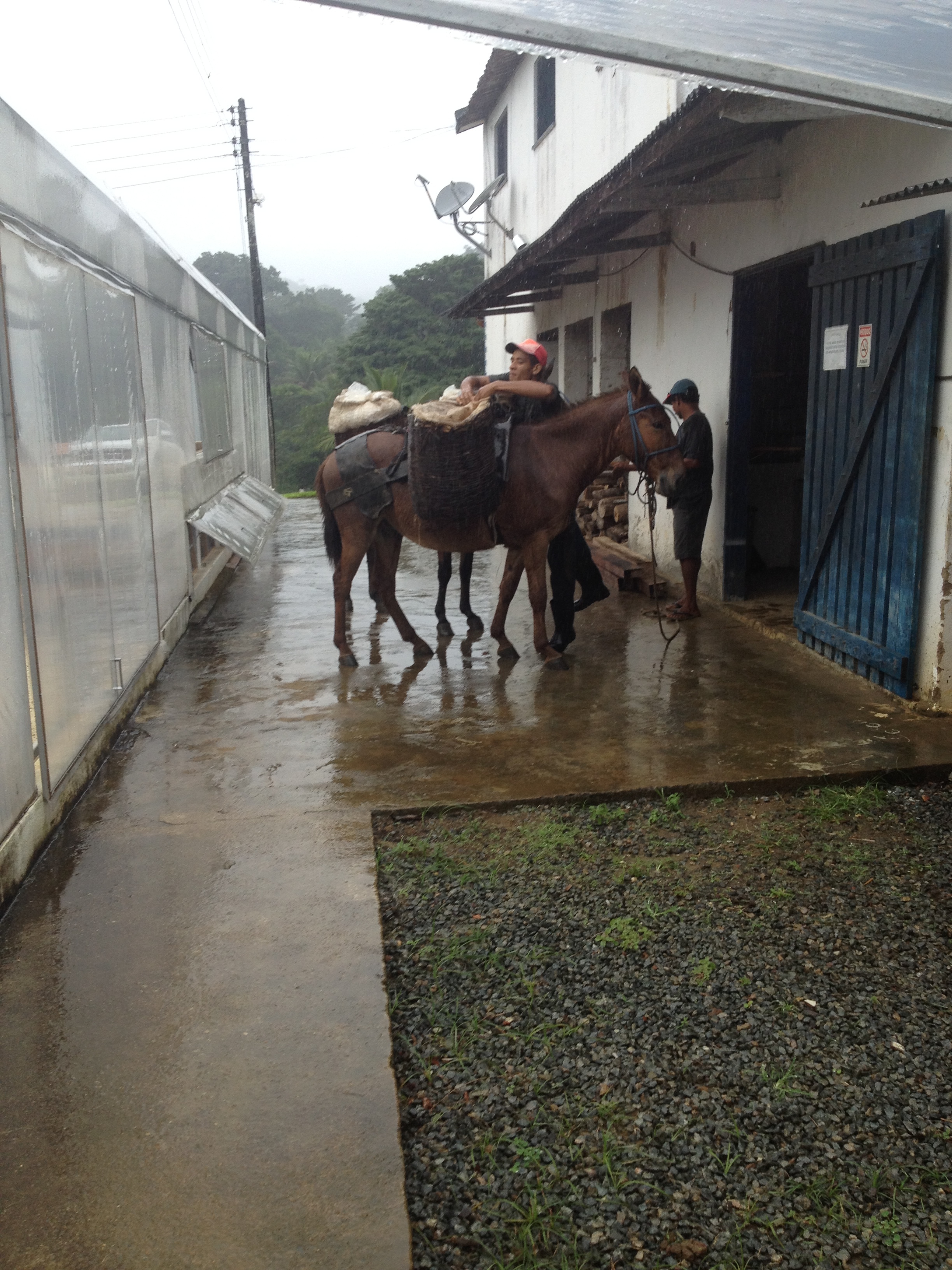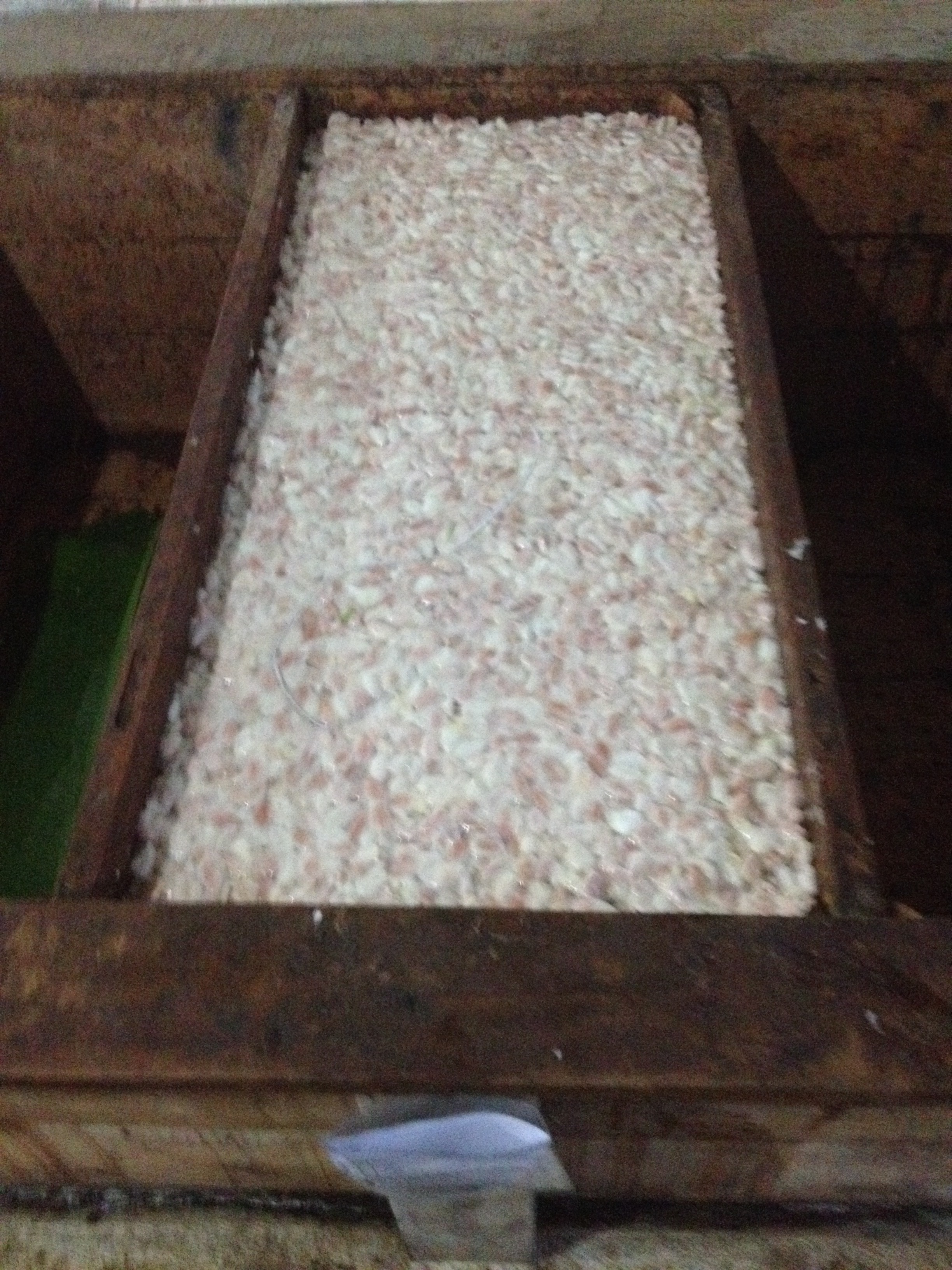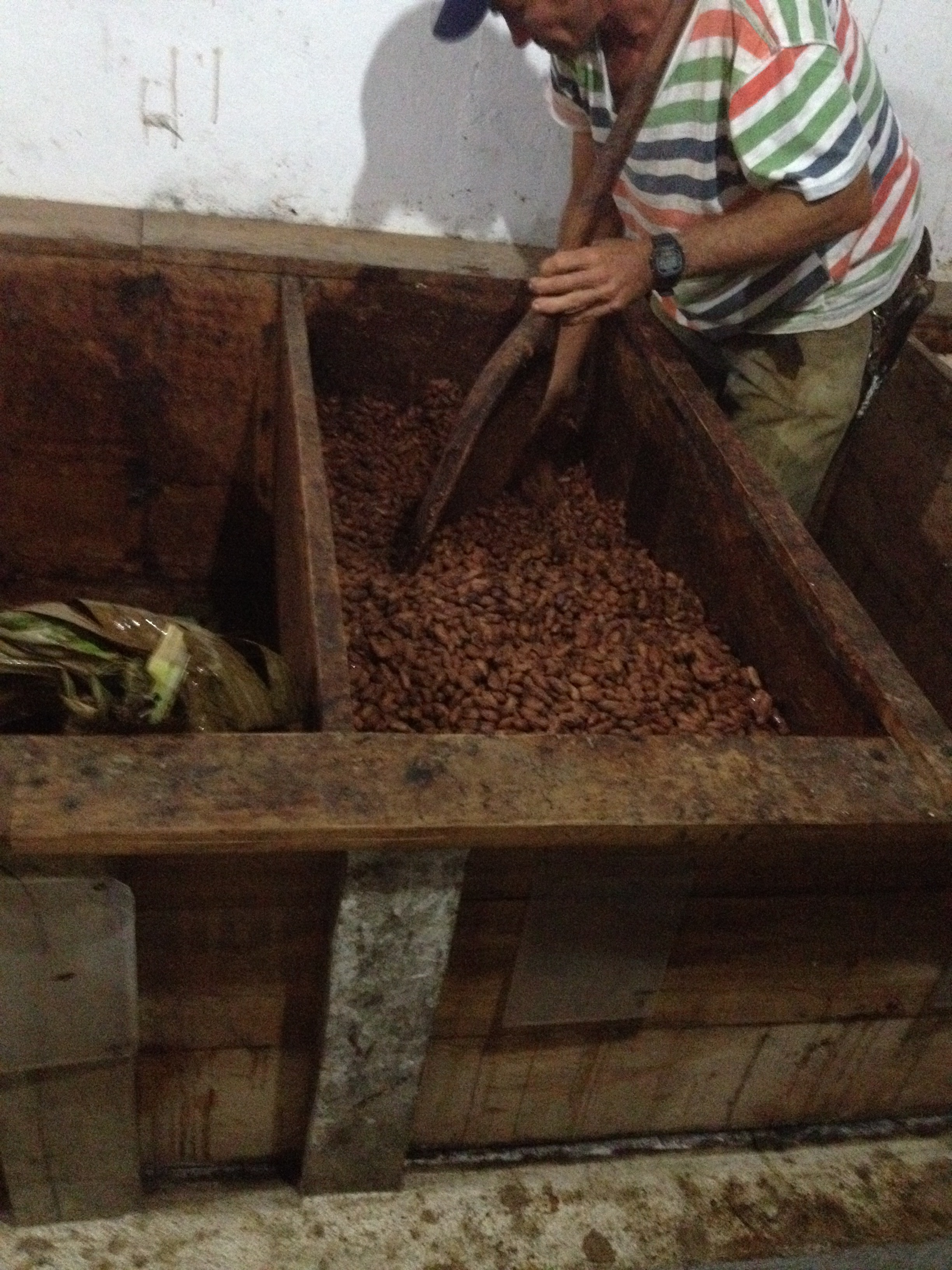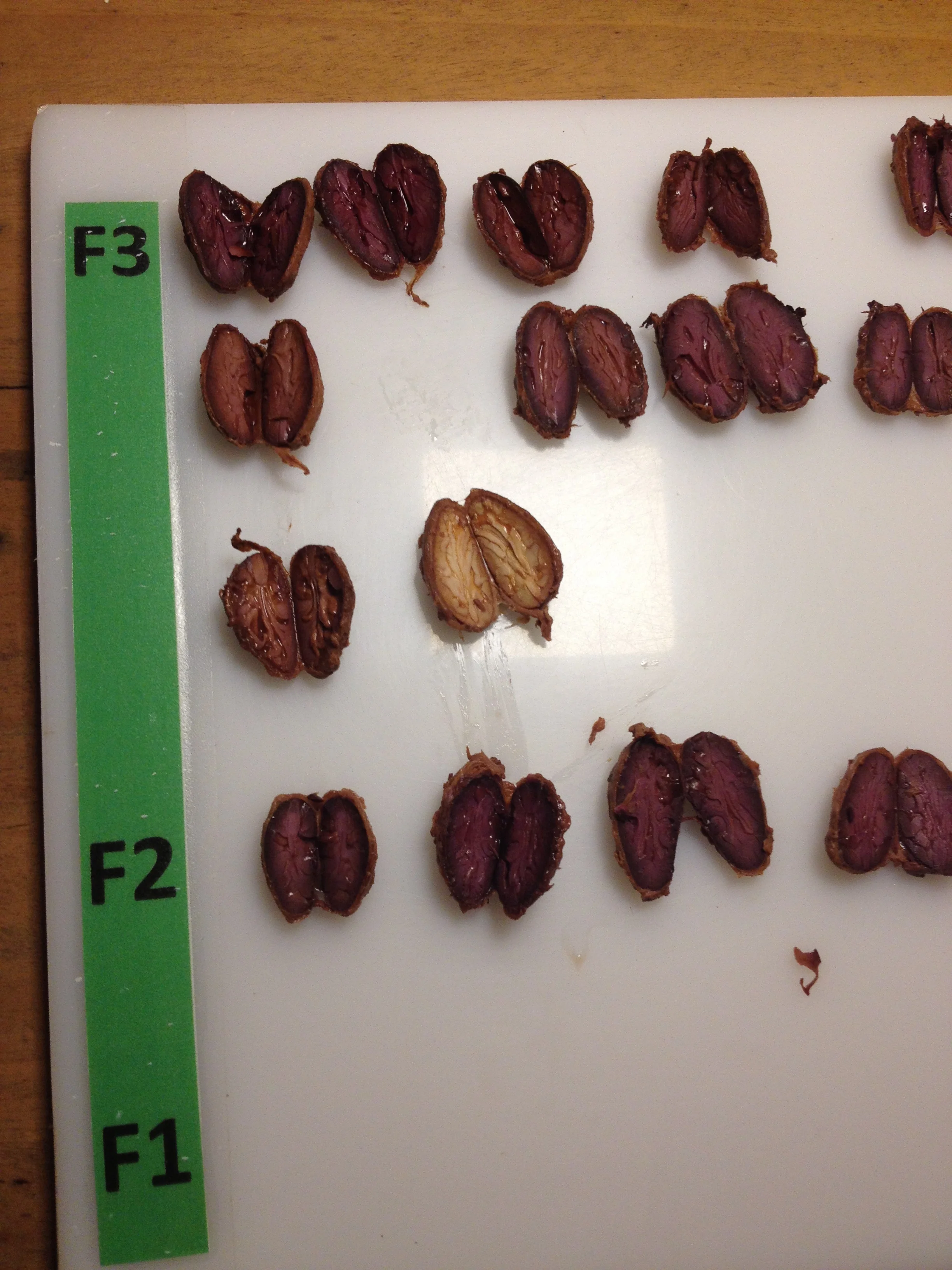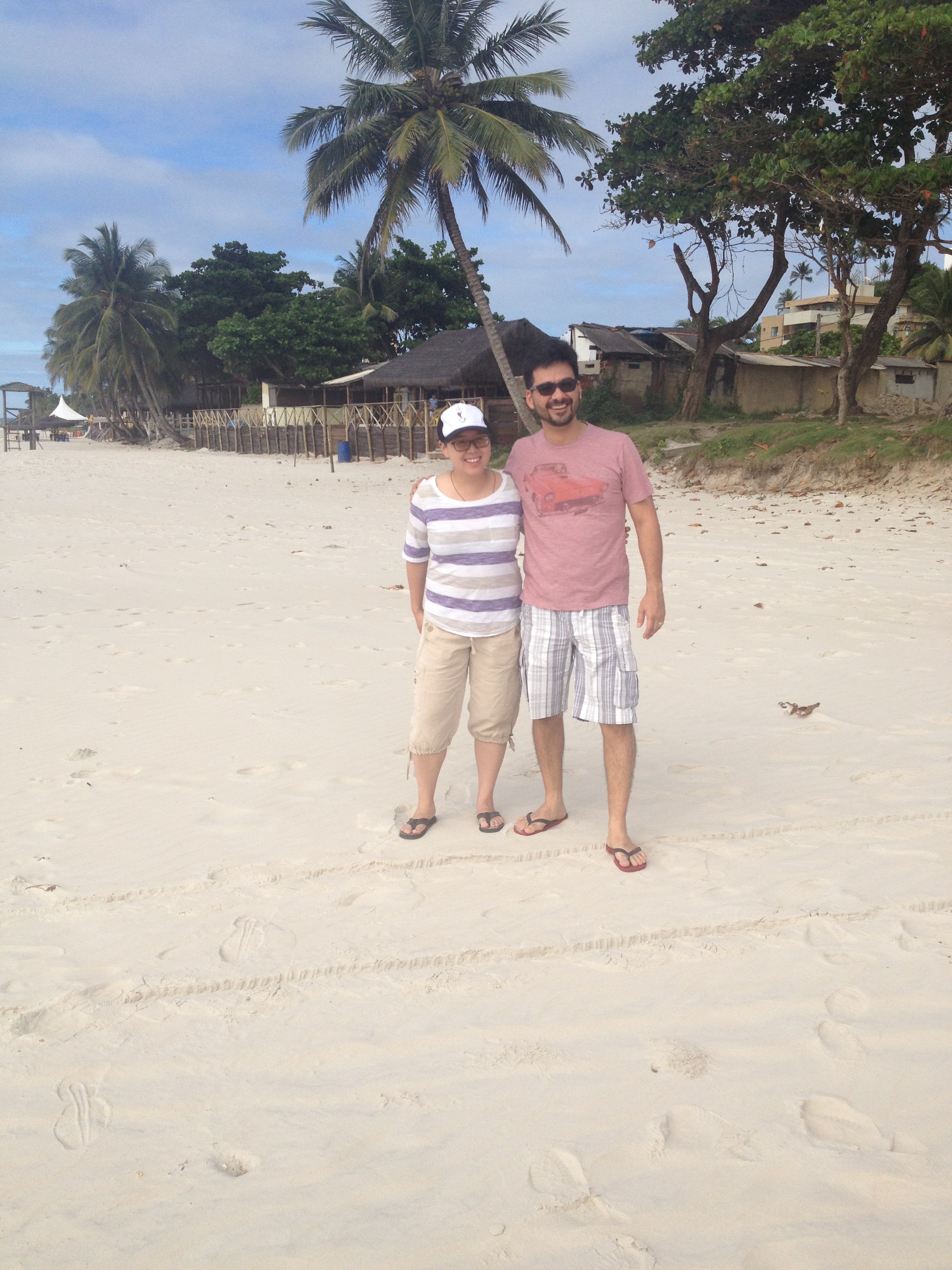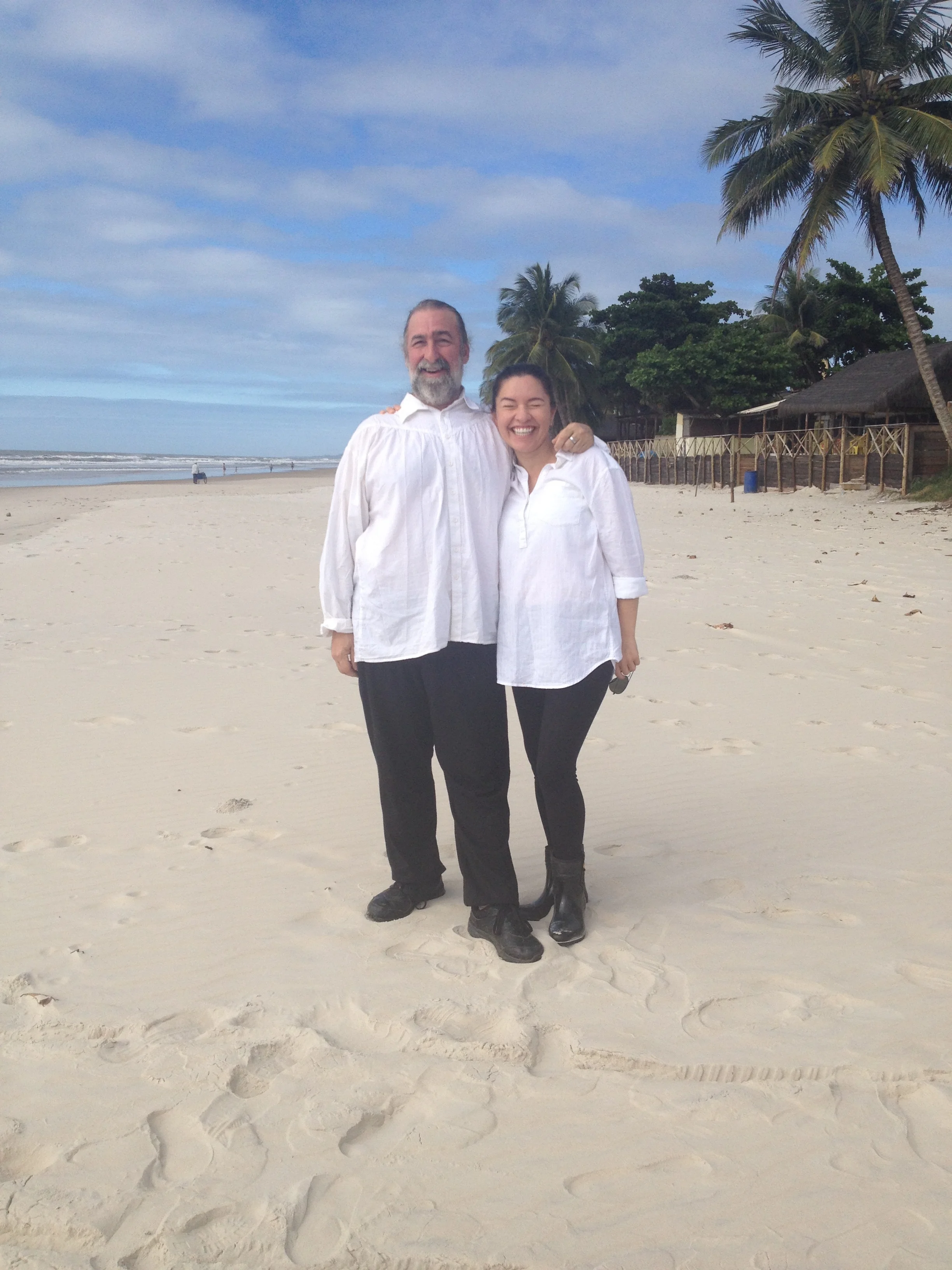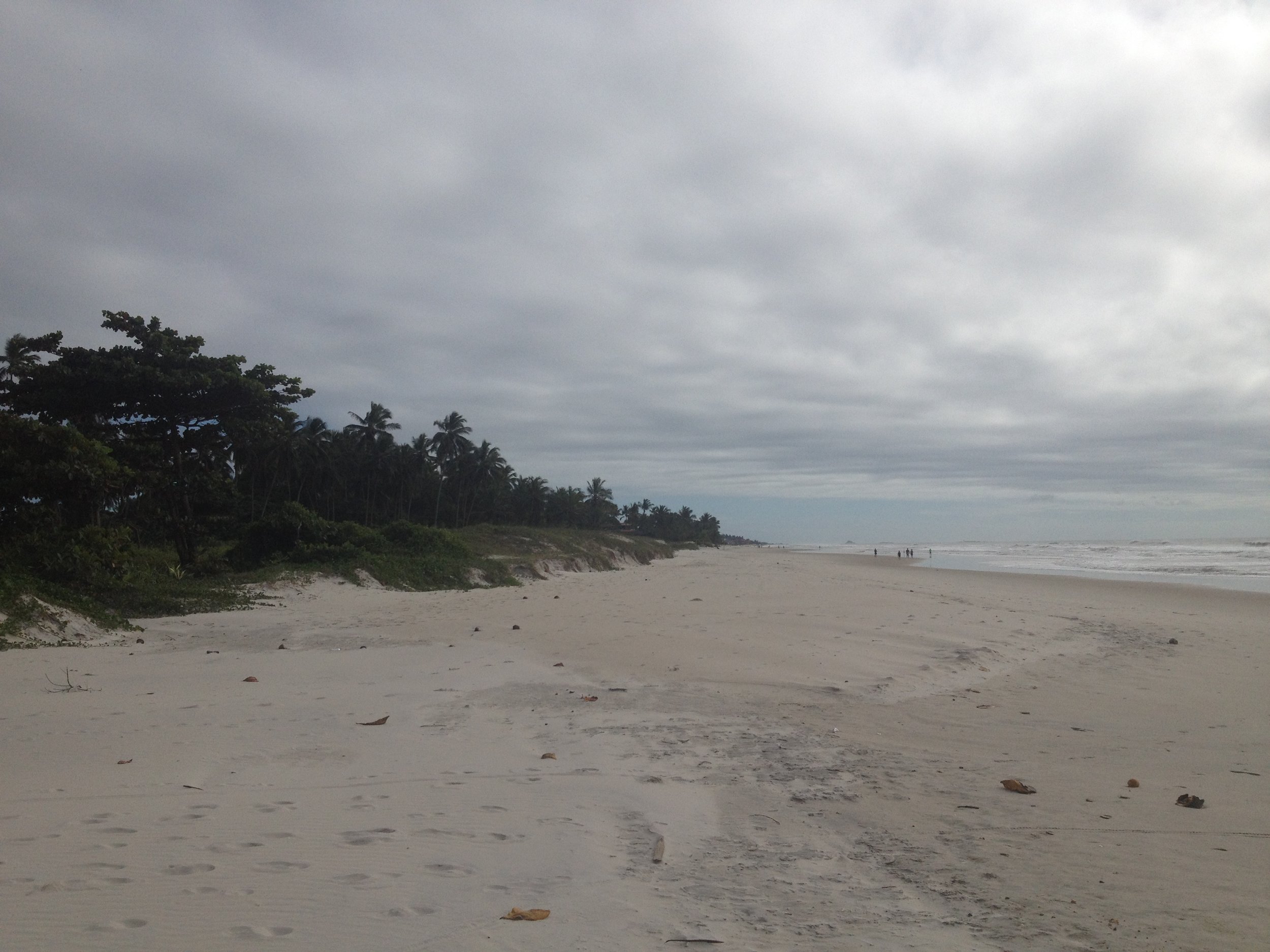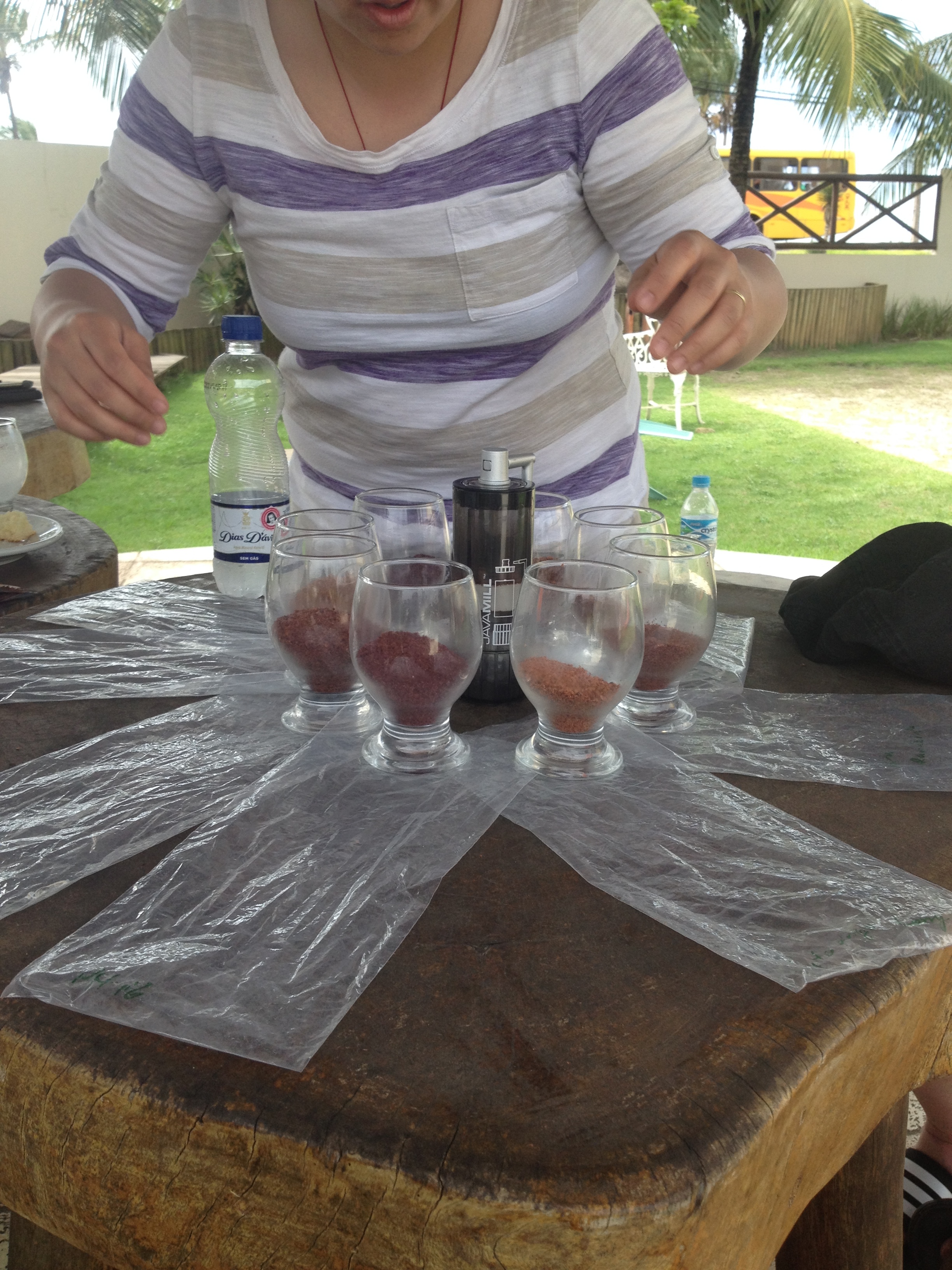Day 8 –That was end of the official festival and we flew up to Bahia to start the farm tours. We had a lovely lunch at a picturesque farm.
We then headed over to the university to tour the cacao research institute and sit on a panel answering questions from local farmers, growers and makers. The laboratory brought back so many wonderful memories and quite a bit of nostaltia. It was fun seeing them use a Behmor to roast in and a Spectra 11 for refining. I was blown away by their evaluation lab and the stocks of standards they used for both aroma and even flavor references. Half of the tasting lab was interestingly lit with red light which normalizes the different colors in the samples so you can’t accidently bias your expectations via color. They all look a pretty uniform dark brown.
Day 9 – This where the real tour began. The morning was spent at the Maltez farm. They do quite a bit of experimenting. In particular they hand pollinate one area and track production. One shining example held upwards to 80 cocoa pods.
This was probably the smallest farm we saw (excluding where we had lunch the day before) with the most modest fermentation set up and drying area (note the bird those of you who want to eat raw chocolate).
We were there when they were turning one of the boxes and doing a cut test to check the progression of the fermentation. One of the things they are looking for is the death of the germ indicated by it changing color, fissures in the beans and the beans ‘bleeding’ when squeezed. These needed to stay in the box another day or so. Not unexpectedly the aroma coming off was acetic acid i.e. vinegar.
The farm itself in a very natural state with a moderate amount of under brush and no defined planting system. We would end up seeing a full spectrum of organizational structures and approaches to farm layout. Here Maltez had planted a selection of different plants. I was thrilled to see achiote, whose seeds are also known as annatto. Those spines look nasty but turned out to be soft.
Rogeria’s farm came next and could not have been more different. The drying racks were all elevated mesh in an open faced covered area. This time the fermentation area was airy and had a delicate yeasty aroma that I’ve smelled in various wineries and breweries. There were no vinegar smells at all. Some of the difference seemed to be a really good and well thought out drainage system.
He also had another fermentary and drying area for commodity grade cocoa. It was an interesting dichotomy. The bulk fermenter was pretty unpleasant. Flys, larvae, etc all over the beans. Surprising some of the resulting cocoa smelled pretty good and I brought some back. Unsurprisingly it had that same funk I’ve disliked in most Brazilian cocoa (prior to this trip) to date. His small batch/bean to bar/specialty cocoa was lovely though.
His farm was quite a bit more methodical. The tree crowns were kept pretty low, and as we were to find out the main reason was so that Witch’s Broom could not get it the crown and infest the entire farm. To say broom is a massive issue in Brazil would be an understatement. Upwards to 90% of the cocoa farms were ruined in the 1980s. A quite literal decimation.
That was it for this day and we were treated to the most crazy extravagant dinner. I can’t begin to do it justice so I’ll just carousel a bunch of photos. The one thing I will say is Amazonian fish ribs are baller.
Some of our group stayed here but I and Rogerio were graciously hosted by Pedro at his home where we would tour the following day.
Day 10 – I can’t tell you how much I miss this kind of morning. It is just like when I was on the farm a decade ago. Hills, fog and peace and quiet.
I thought Rogerio’s farm was ordered and meticulous (and it was) but then we got to Pedro’s and it was kicked up yet another notch. It was very organized, with low and even crowns, just enough shade trees and easy even paths.
There are a couple things here worth talking about, namely an agricultural system in Bahia called Cabruca and shade grown cocoa. It is an interesting system. In short it is cocoa grown in the rain forest and is a hallmark of biodiversity. A few of us couldn’t quite get a solid answer as to why it is employed. Much seems to be public image and as a counter to slash and burn mono-crops. I and many others get that and support that. That said nearly all the farmers said that if they could afford it they would look at moving away from it as contrary to in public’s concept that shade grown is better, the better is relative in that the trees often thrive better, are healthier and resist broom better with more direct sun. The impression I was left with is that it is a pretty delicate balancing act between a diverse and health system and healthy and productive trees. As is many things it isn’t black and white. Slash and burn isn’t great but neither is forest grown cocoa where productivity is low and the trees struggle.
Moving on, you can see the difference in trees and farm management. The fermentary was very similar to Rogerio’s being boxes with good drainage, very clean and well set up.
They do all their own grafting of seedlings and are very fast at it. This guy had this seedling grafted in probably under a minute.
While here we were able to see an interesting bean that seems to be unique to the area. It is a white bean but not porcelano and most likely not even Criollo. It is called Catongo and is believed to be an albino forastero. It is very low in bitterness, astringency and pretty light in flavor. Being an albino even the flowers are all white which one of the main ways it is told apart from other varieties Pedro was gracious enough to send me back with a couple different samples to experiment with.
We moved onto Modaka’s organic farm. It was very much in the Cabruca style with extremely heavy undergrowth, quite a bit more associated broom and a significantly lower per hectare production volume. They have put a lot of work into mapping the farm, counting indigenous trees and management. I am very much not doing the farm justice. It was beautiful and tons of work went into it. It really show cased how much work this form of agriculture could be and the devotion it required.
Their fermentary brought something new, namely some different aromas. The freshly fermenting beans smelled very strongly of fresh yeast cake. The beans that had been fermenting 4 days brought me back to my childhood with the unexpected aroma of southern boiled peanuts. The flavor was mildly acidic but very clean. I had not noticed either of these aroma before.
We had a tour of their chocolate making facility, as we did with all the other places too. And here I want to make an observation that took days to sink in. At this point I’d been hearing how much of an issue astringency, bitterness and acidity were for the makers in Brazil. Due to the local heat, every single chocolate making room was air conditioned and down right chilly. At this point I am starting to wonder if a bit of the excess acidity is due to this prevalence of cool refining conditions and many not so much the beans or fermentation techniques. I’ll be checking in with many of the makers to test out this theory as it is the same thing I hear every year when winter set in here in the States.
That was it for this day.
Day 11 – This day was a lot of traveling and change in the weather and our first introduction to the term rain forest. As we drove to Vale Putumaju (Tuta Aquino’s beautiful farm) we watched the clouds come in. By the time we arrived it was raining. It could not do anything to dampen the utter beauty of the area though.
We were again treated to amazing hospitality with stunning food and conversation. Talking went on way to long and it was late afternoon before we got out into the farm. Tuta has hoped we could see the harvesting of the day’s beans and had even delayed drying one set so we could see the beans put out to dry but all we were able to see were the burros on the way back.
They fermentary was again stellar and the drying area was beyond anything we had seen yet with movable trays and racks. Truly a high end system.
And that was it. Light was fading and I could not get the number of photos I wanted nor the amount of conversation I would have liked to have had. Frankly I am not sure another week would have been enough but we had to get on the road so we could fly out the next morning.
Day 12 – Back to Sao Paulo and then home. Have a nice obligatory beach shot of the gringos.
Oh, Greg of Dandelion whipped out his grinder after breakfast and we hand peeled and token a bunch of samples we had collected over our trip.
Day 13 – Arrive in USA start missing the lovely people I met. I miss you all still.
Day 14 – Dive into the near 600 waiting email.


